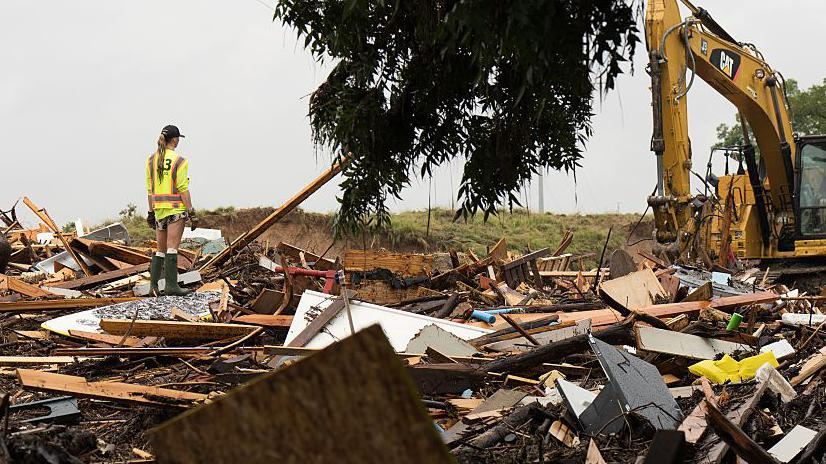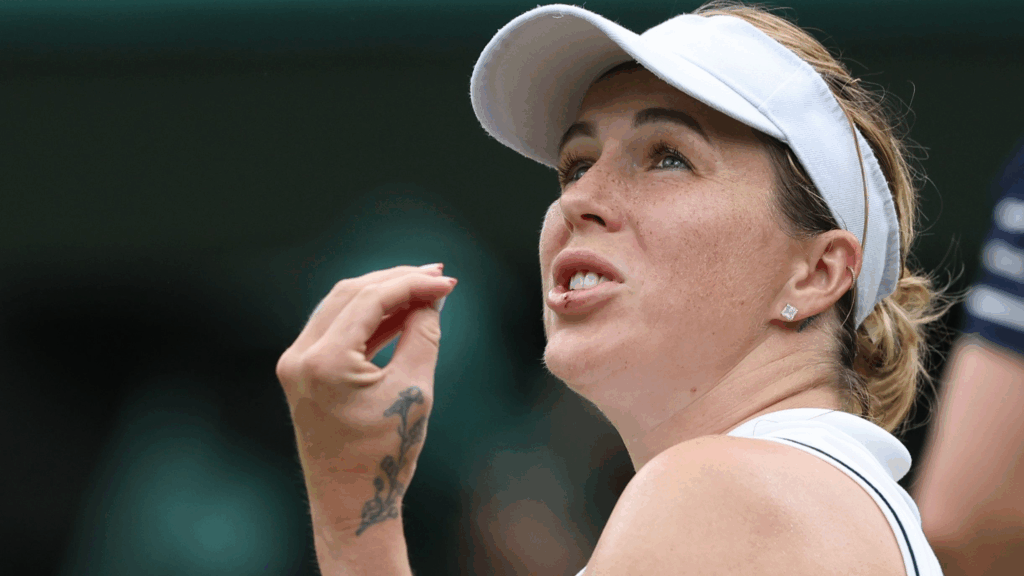75 Ocean Activities for Preschoolers That Make Waves
Ready to explore ocean magic with your preschoolers?
This theme is pure classroom gold, packed with vibrant colors, amazing creatures, and endless hands-on fun that little ones absolutely adore.
Tiny hands will love exploring jellyfish crafts, splashing in water bins, and pretending to be dolphins swimming through coral reefs.
The ocean naturally supports how preschoolers learn best: through touch, movement, and imaginative play.
Plus, you don’t need fancy supplies or hours of prep time.
Simple setups create underwater worlds that spark curiosity and giggles.
Your classroom becomes an aquatic wonderland where learning feels like pure play!
Ocean themes naturally capture young children’s attention.
The variety of sea creatures, from tiny seahorses to giant whales, gives kids plenty to talk about and imagine.
Water play connects to their everyday experiences, making abstract concepts more concrete.
Colors, textures, and movements found in ocean life provide rich sensory experiences.
Your preschoolers will practice important skills like sorting, counting, and pattern-making without even realizing they’re learning.
The ocean theme also introduces basic science concepts in ways that make sense to young minds.
Nothing beats hands-on experiences for preschoolers!
These sensory activities bring the ocean right into your classroom through touch, sight, and sound.
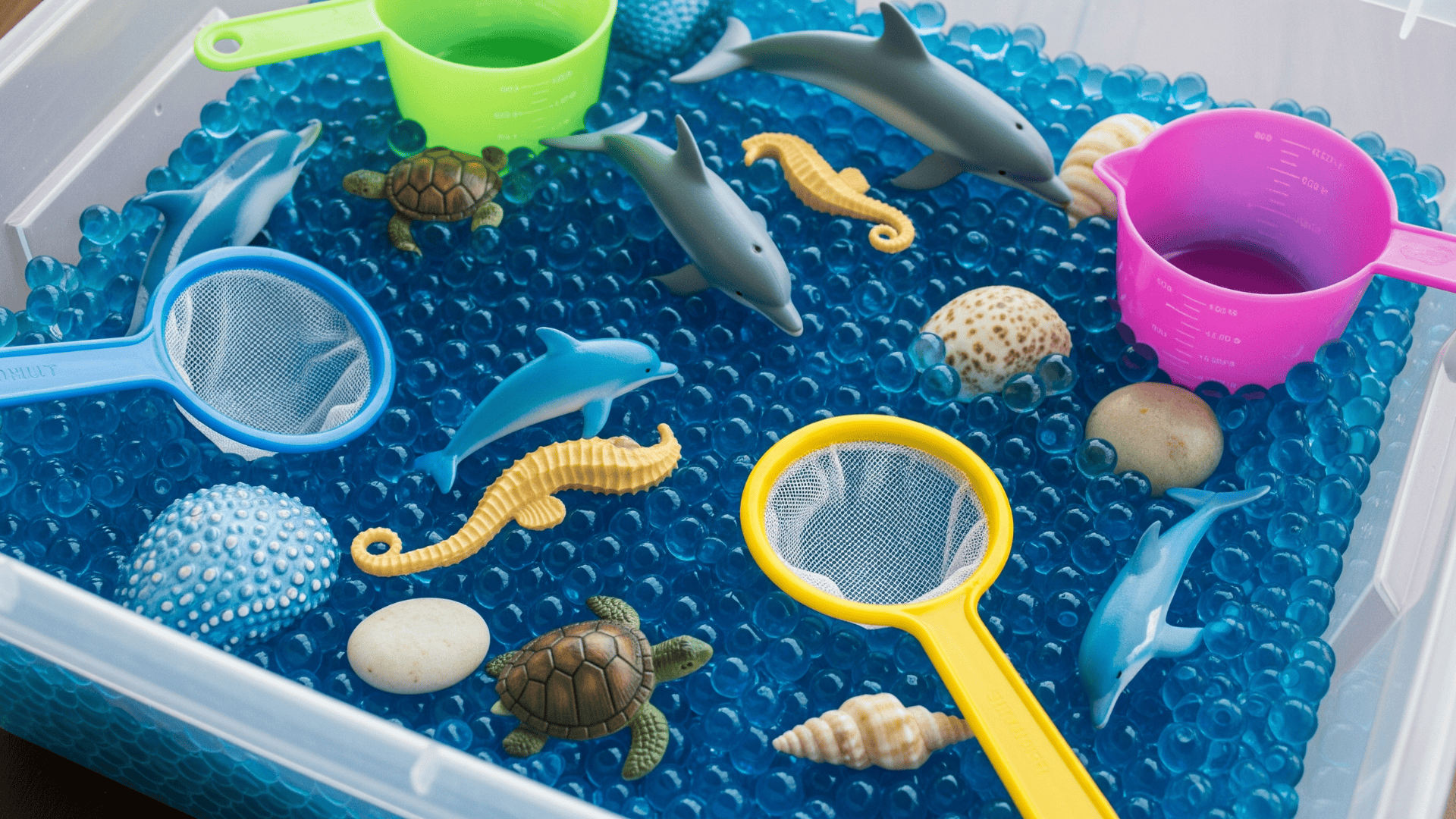
Fill a large container with blue water beads, plastic sea creatures, shells, and smooth stones.
Add measuring cups and small nets for scooping practice.
Kids love searching for hidden treasures while developing fine motor skills.
Hide plastic gems at the bottom for extra excitement.
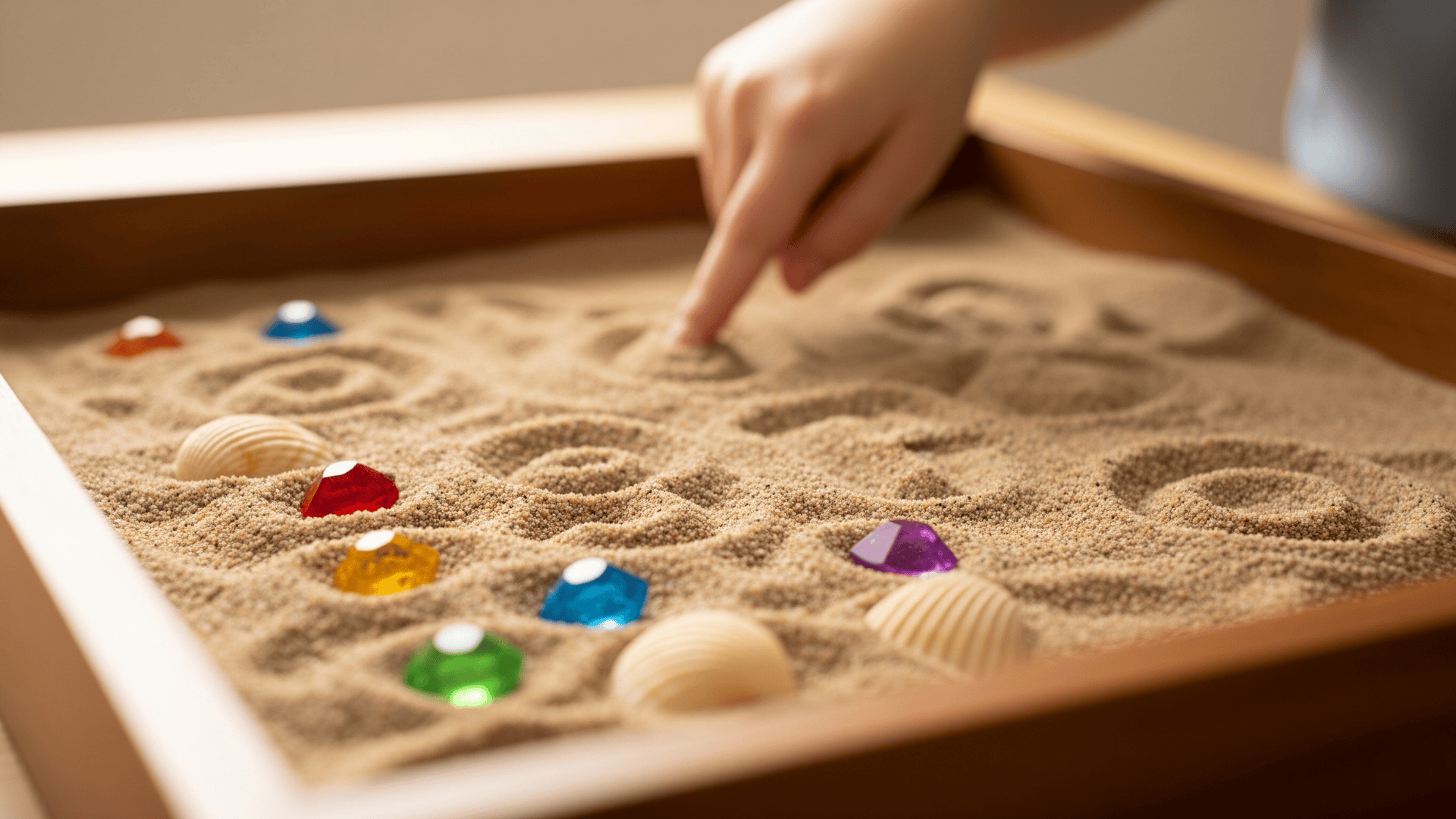
Pour sand into a shallow tray where children can practice writing letters or numbers with their fingers.
Hide small shells or plastic gems underneath for surprise findings.
This activity strengthens pre-writing skills while providing satisfying sensory feedback.
Add small rakes or paintbrushes as writing tools for variety.
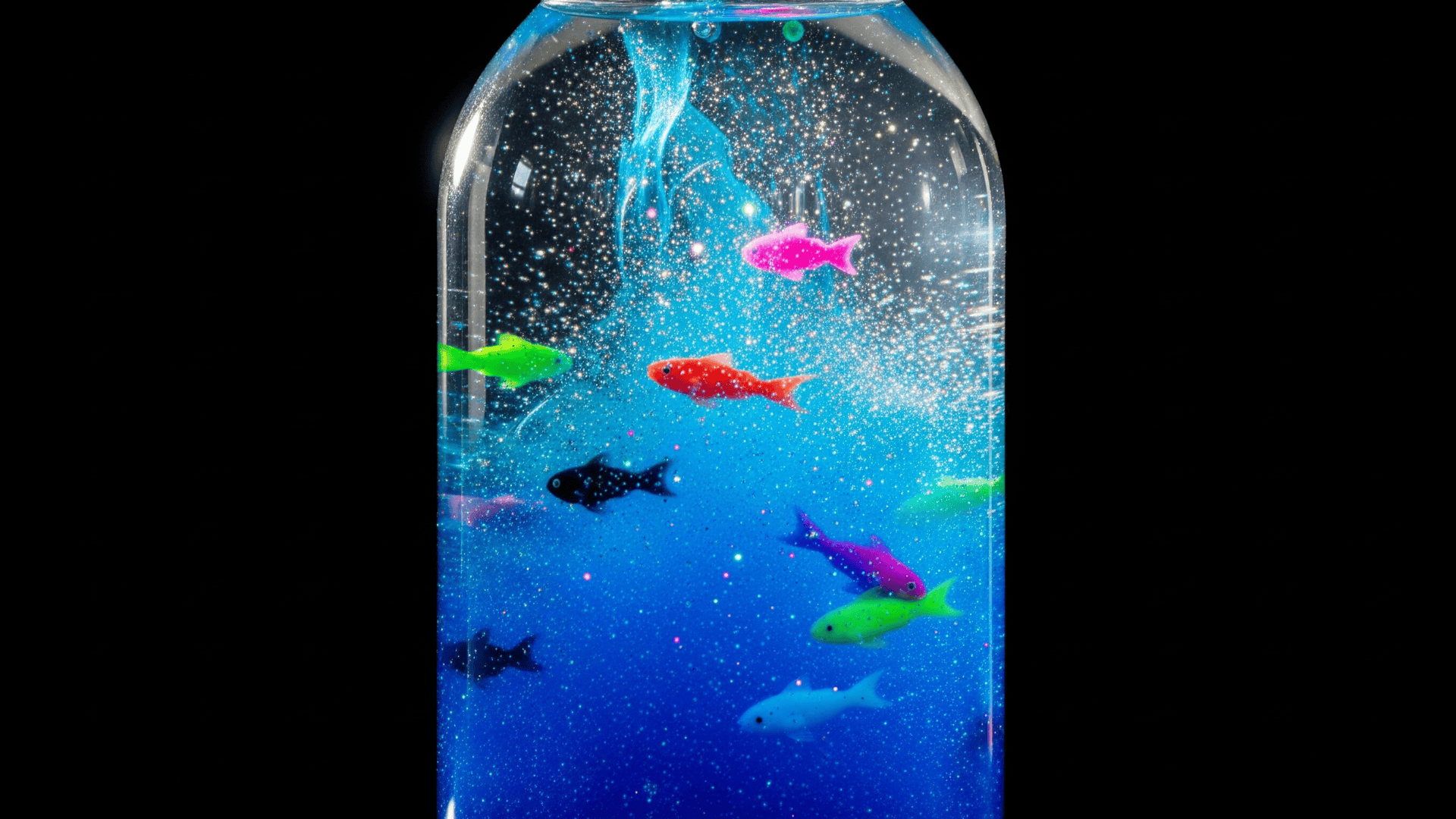
Create calming wave bottles using clear plastic bottles, water with blue food coloring, and baby oil.
Add glitter and small plastic fish that move at different speeds through the liquids.
Children shake, roll, and tilt bottles to observe wave movements.
Perfect for quiet time or teaching about liquid density.
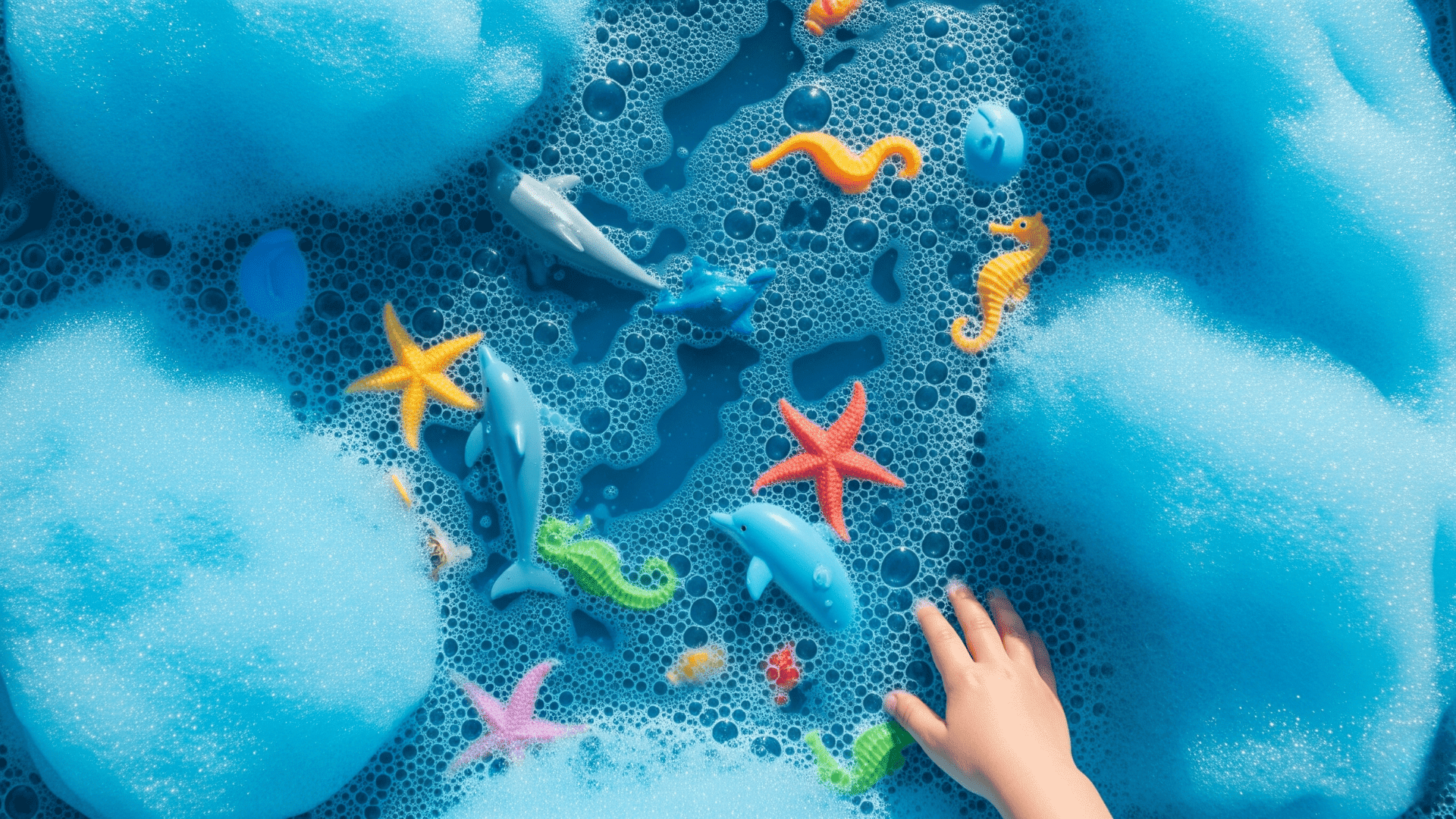
Mix tear-free bubble bath with water and blue food coloring in your sensory table.
Hide sea creatures in the foam for a bubbly search game.
Provide whisks for making more bubbles and strainers for catching hidden items.
This messy play activity brings giggles while practicing gentle movements.
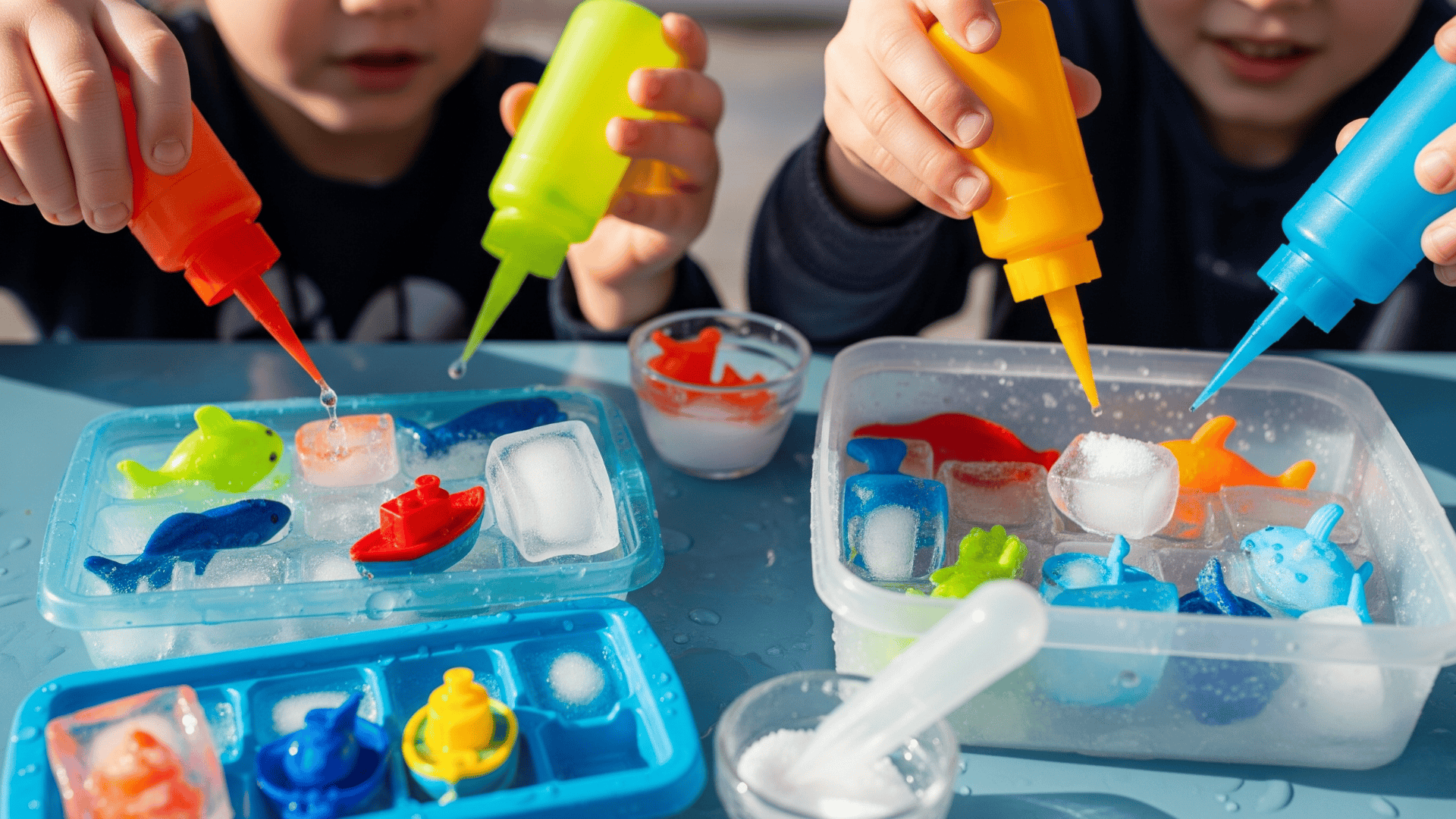
Freeze small ocean toys in ice cube trays or larger containers.
Give children warm water in squeeze bottles, droppers, and salt to melt the ice.
This activity teaches patience and cause-and-effect while rescuing frozen creatures.
Place ice blocks in bins to contain the melting mess.
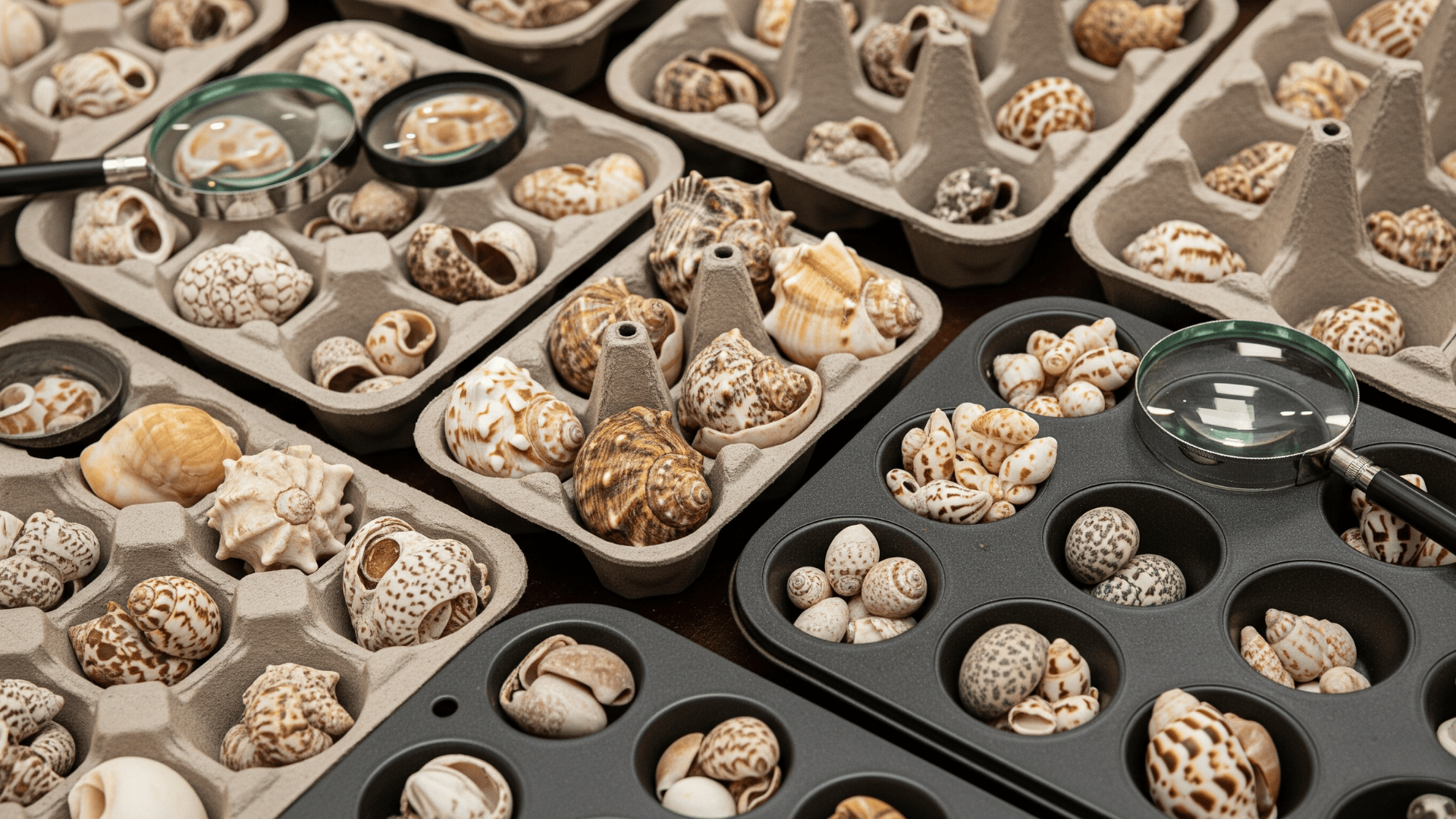
Collect various shells for sorting by size, color, or type.
Provide egg cartons or muffin tins for organization and magnifying glasses for close examination.
Children develop classification skills and mathematical thinking while exploring textures.
Create sorting cards with pictures for non-readers to follow.
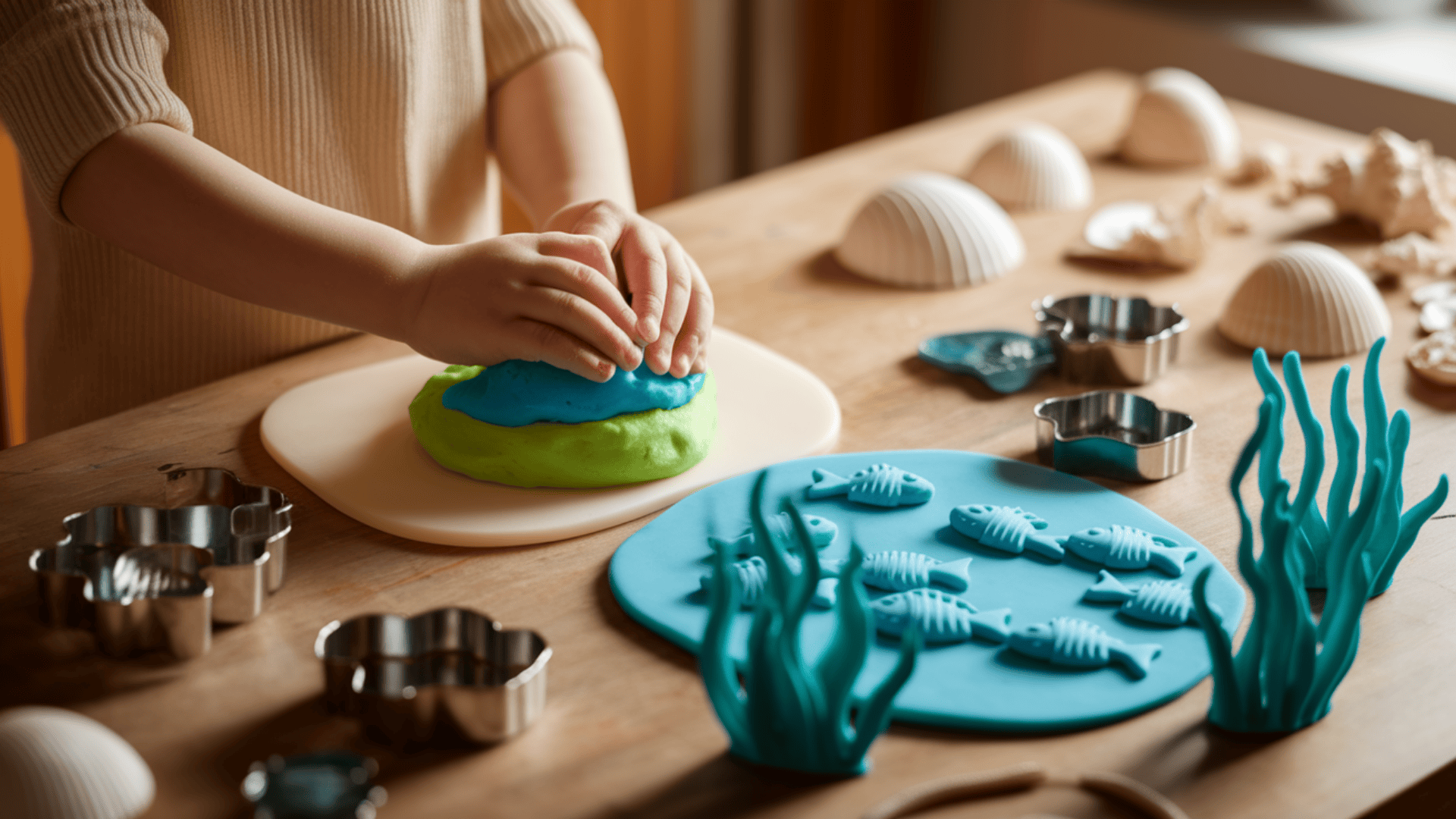
Make blue and green playdough scented with vanilla or coconut extract.
Provide ocean-themed cookie cutters, shells for stamping, and garlic presses for making seaweed.
Children create underwater scenes while strengthening the hand muscles needed for writing.
Add glitter for extra sparkle and visual interest.
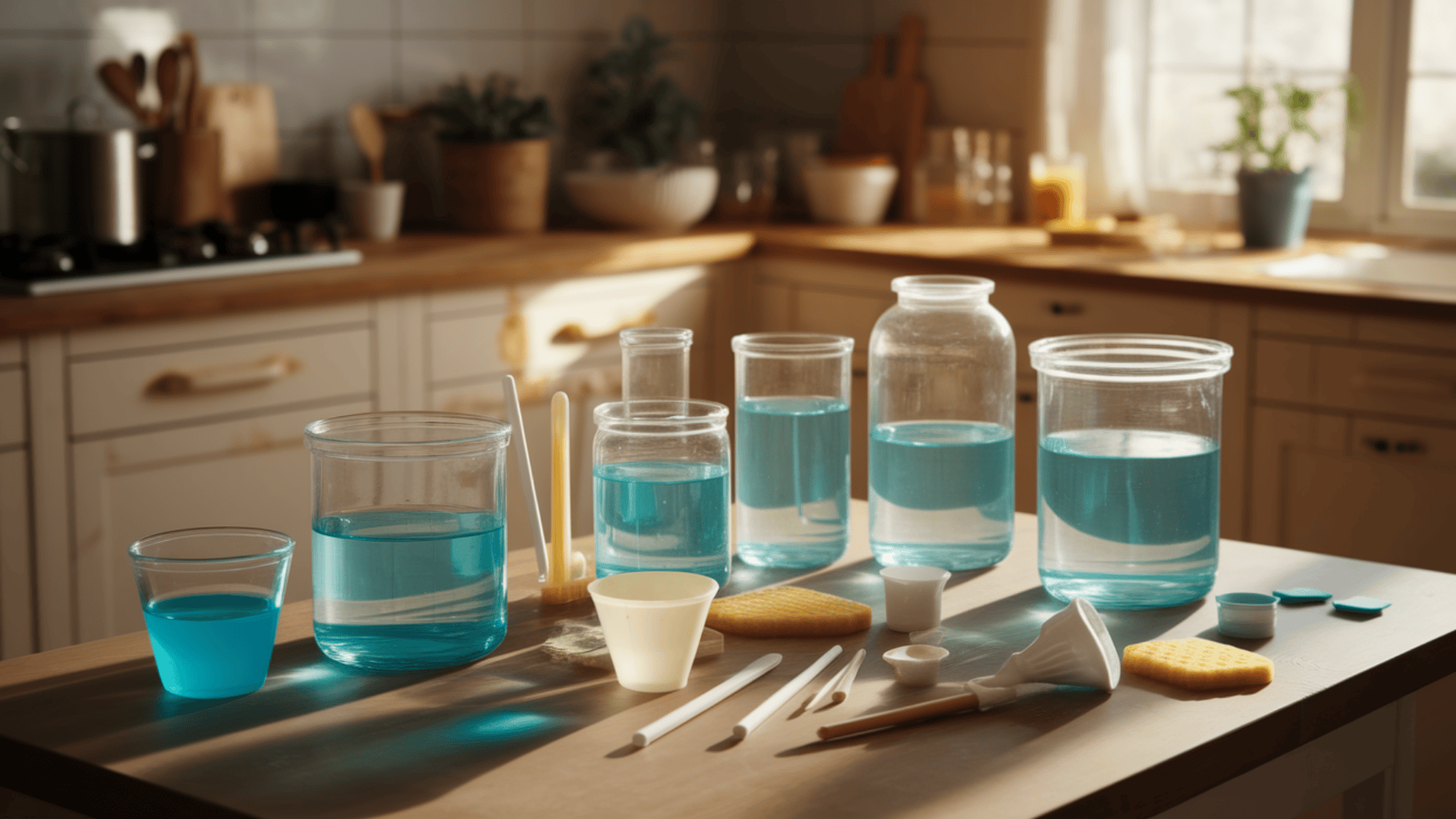
Set up containers of different sizes with blue-tinted water.
Provide turkey basters, pipettes, sponges, and funnels for transferring water.
This simple activity builds hand-eye coordination and teaches concepts of full and empty.
Add floating numbered objects for counting practice.
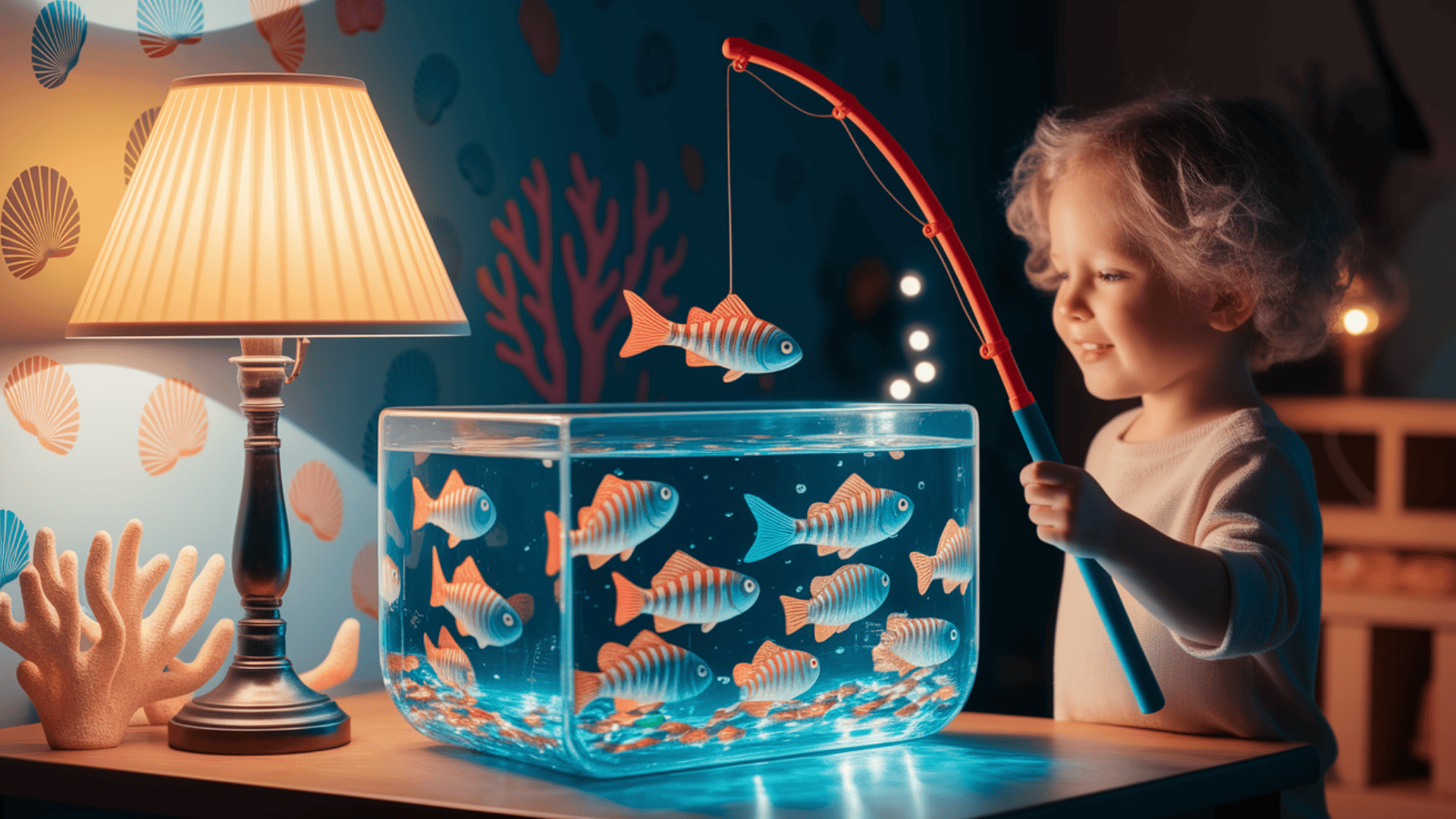
Create a fishing game with foam fish, paperclips, and magnetic fishing rods in a water-filled container.
Number each fish for counting practice or addition games.
The challenge of fishing in actual water adds excitement compared to dry versions.
Children develop patience and hand steadiness while learning.
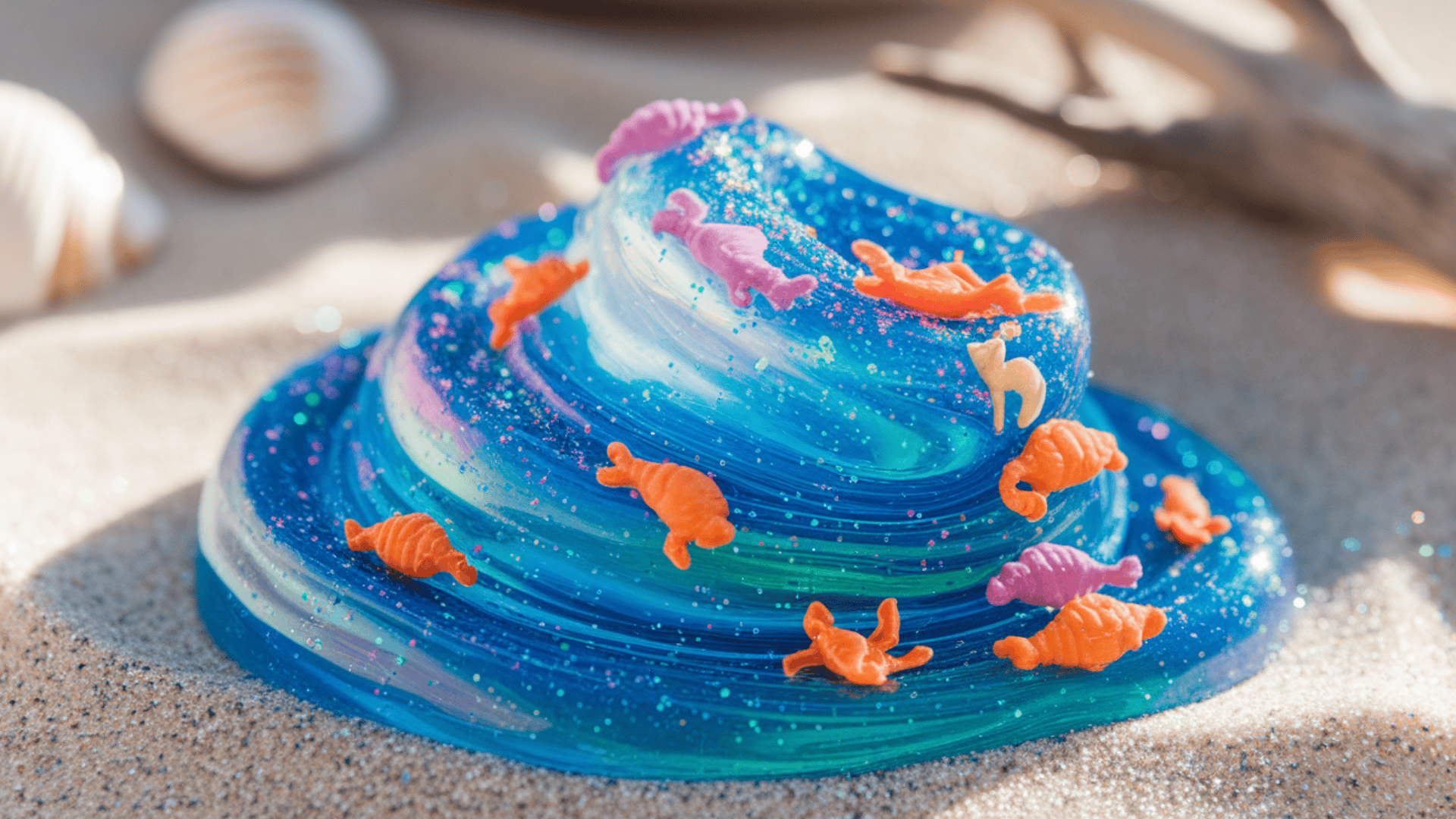
Make stretchy slime with clear glue, adding blue food coloring, glitter, and small plastic sea creatures.
Children stretch the slime to “swim” creatures through it or hide and find objects.
This provides stress relief and proprioceptive input while being endlessly entertaining.
Store in airtight containers to maintain consistency.
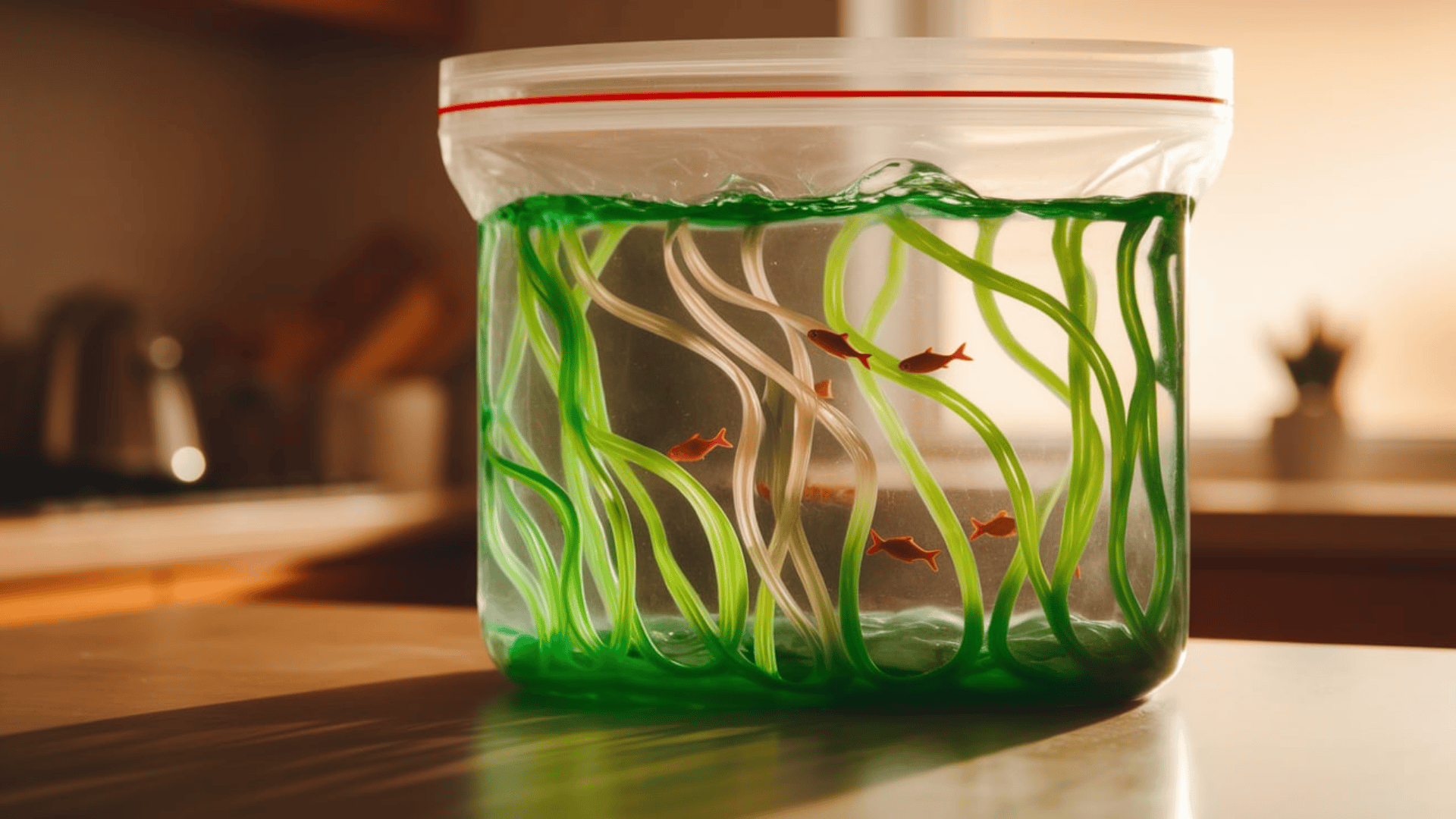
Fill gallon freezer bags with green hair gel, ribbon strips for seaweed, and plastic fish.
Seal securely with duct tape for mess-free exploration.
Children manipulate bags to move creatures through “seaweed” or practice making letters on the smooth surface.
Perfect for younger preschoolers who need contained sensory experiences.
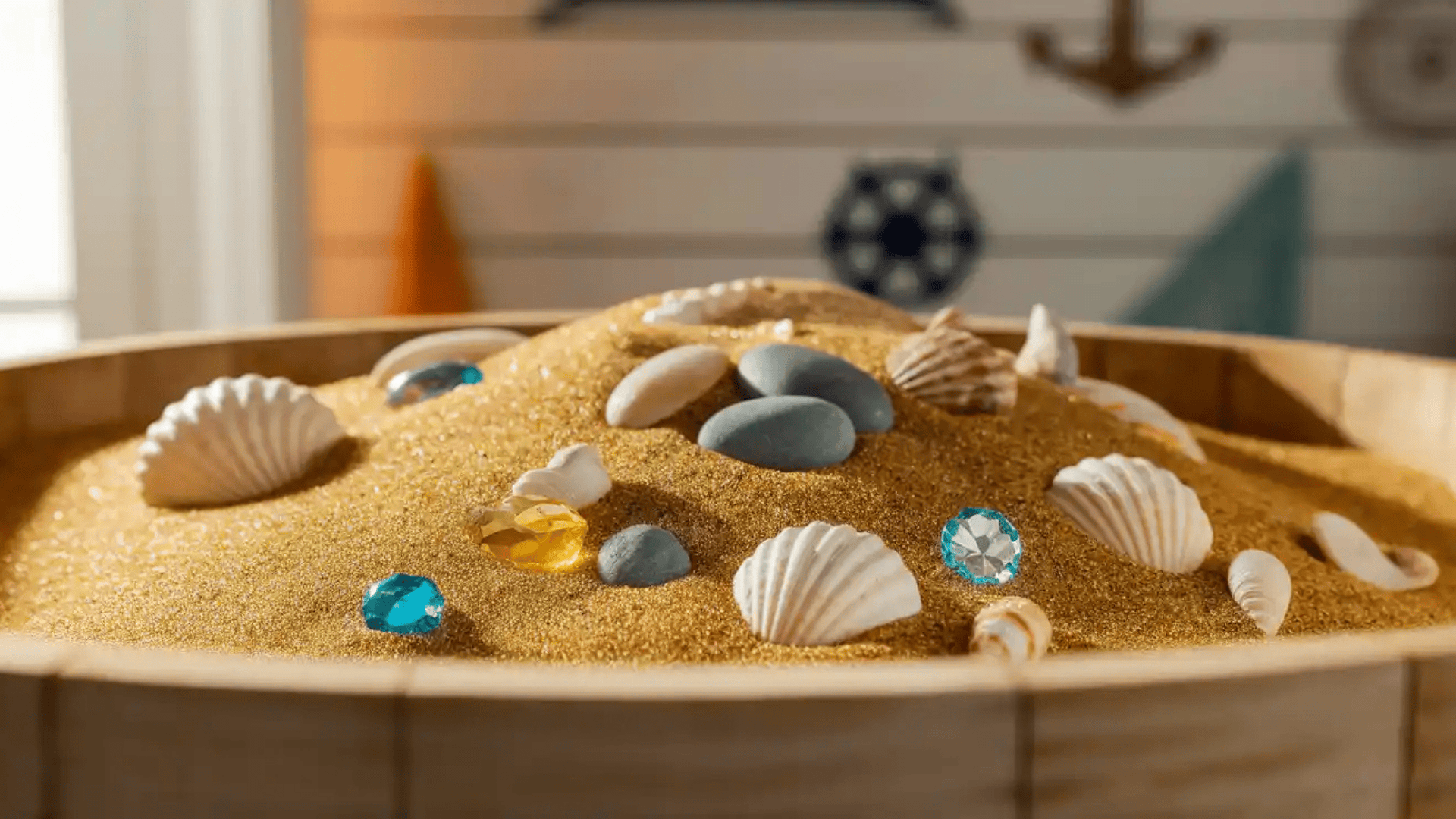
Create an indoor beach in a large bin with sand and hidden treasures like shells, smooth stones, and plastic gems.
Provide small shovels, brushes, and collection buckets for excavating.
Make treasure maps showing what to find for an added challenge.
Combines sensory play with counting and following visual directions.
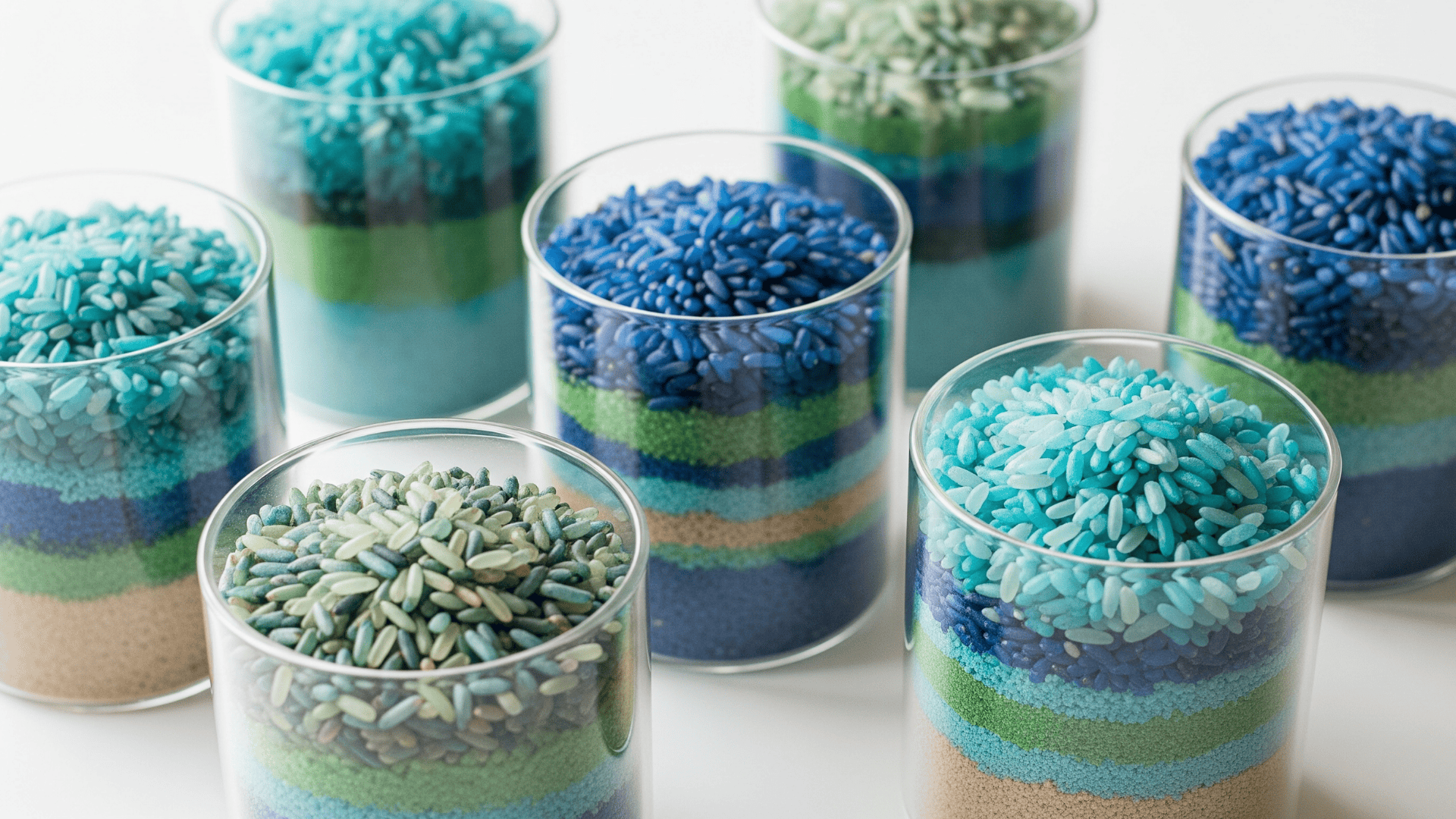
Dye rice in ocean colors using food coloring and vinegar, then layer in clear containers.
Mix in shells, plastic sea creatures, and shiny objects for interest.
The sound and texture of rice provide calming sensory input.
Children practice scooping, pouring, and fine motor skills with tweezers.
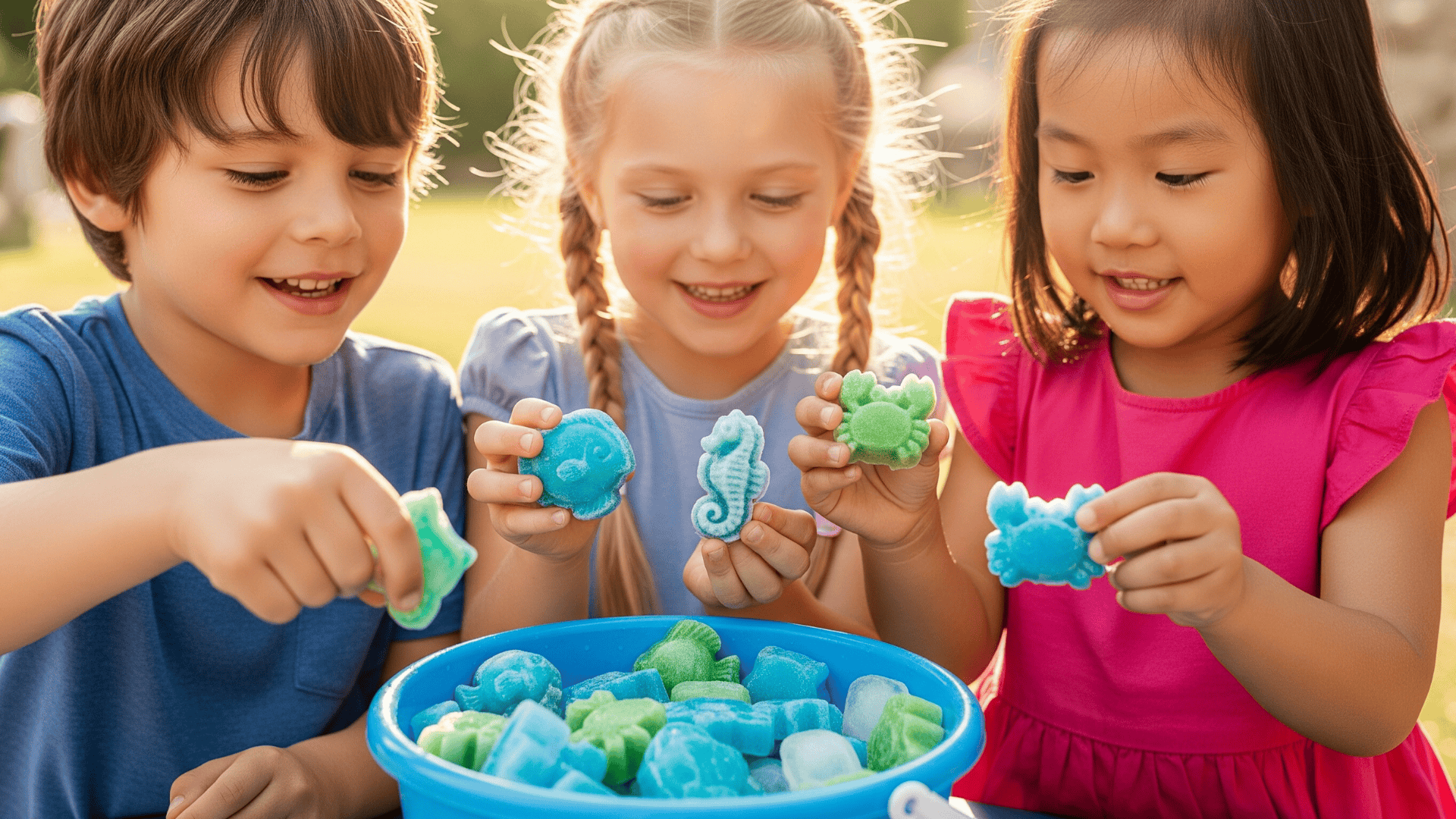
Create large, colored, aquatic animal-shaped ice blocks with the ocean sand frozen in layers.
Let the ice melt and evaporate on its own.
The residue of color and sand will teach the concept of evaporation
This long-lasting activity teaches tool use and states of matter.
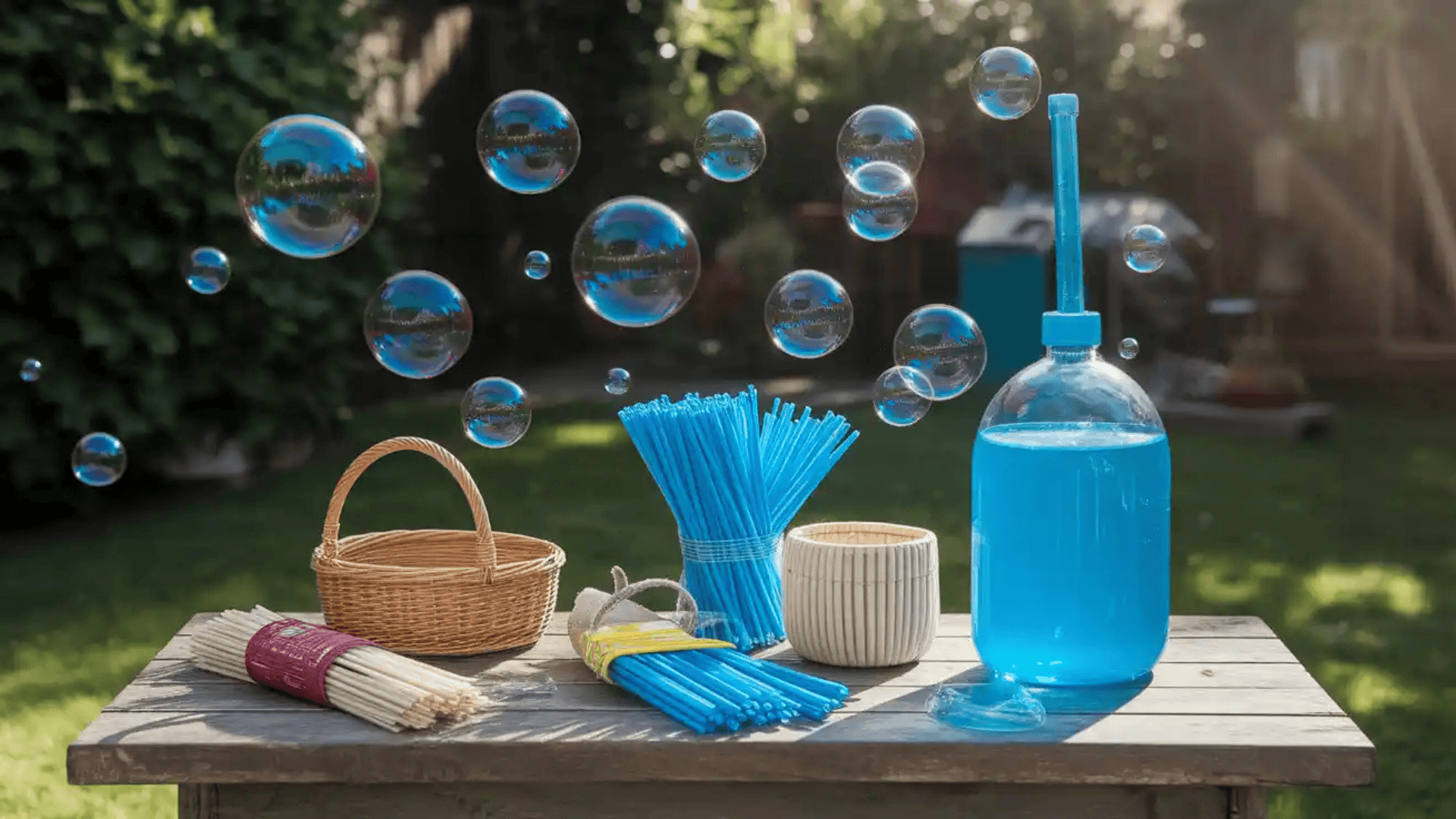
Set up bubble stations with blue-tinted bubble solution and various wands.
Try berry baskets, fly swatters, and bundled straws for different bubble effects.
Discuss how bubbles resemble ocean foam and observe rainbow colors.
Develops oral motor skills and provides magical sensory experiences.
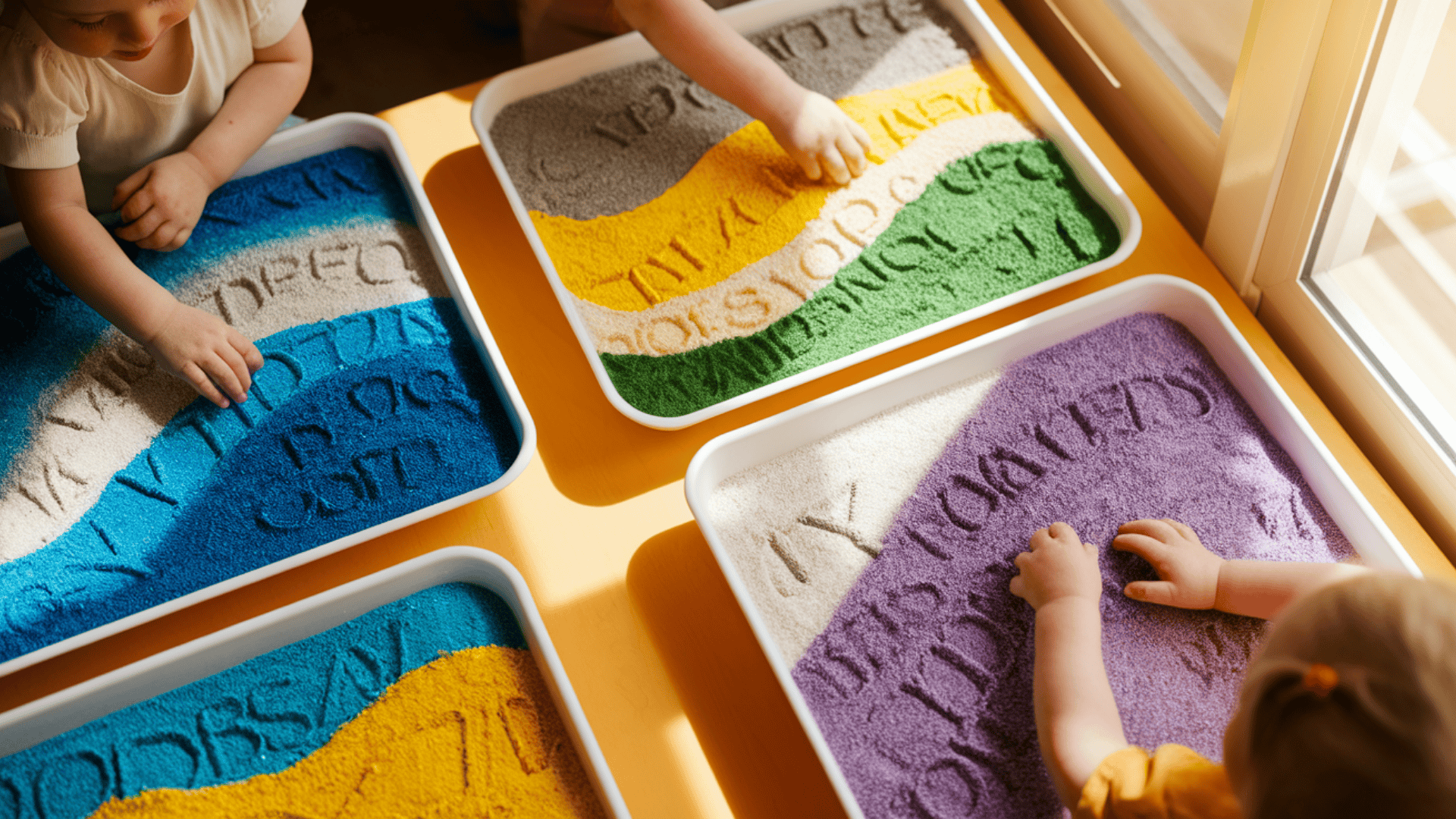
Mix coarse sea salt with liquid watercolors for colored sand-like material.
Children draw patterns, practice letters, or create ocean scenes in shallow trays.
The texture provides excellent feedback for pre-writing practice and teaches colors.
Less messy than regular sand but equally satisfying.
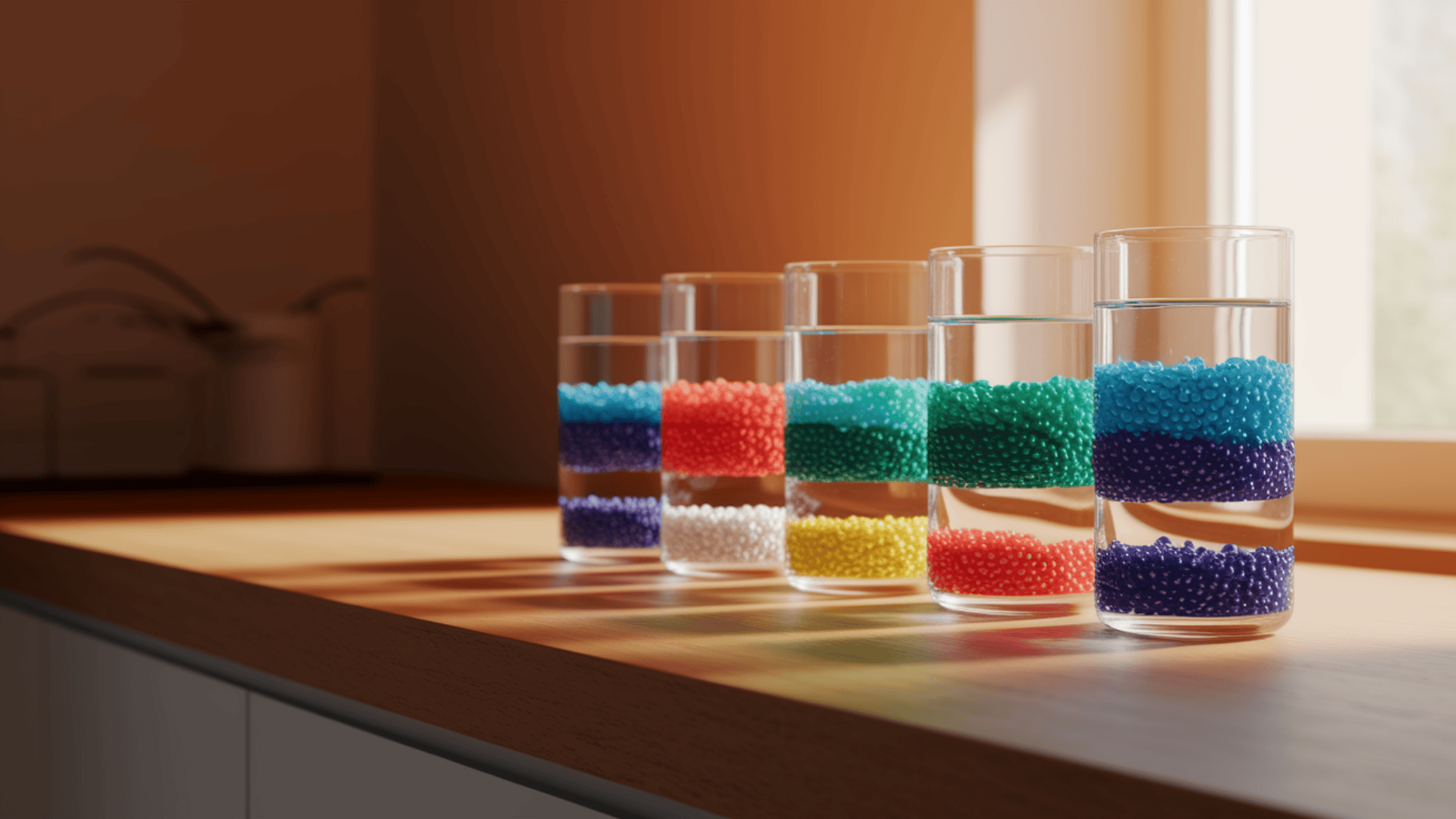
Layer different colored water beads in clear containers to represent ocean zones.
Use dark blue for deep ocean, regular blue for middle, and light blue for surface.
Add appropriate animals to each layer and use flashlights to examine the darker depths.
Teaches ocean ecology while providing sensory satisfaction.
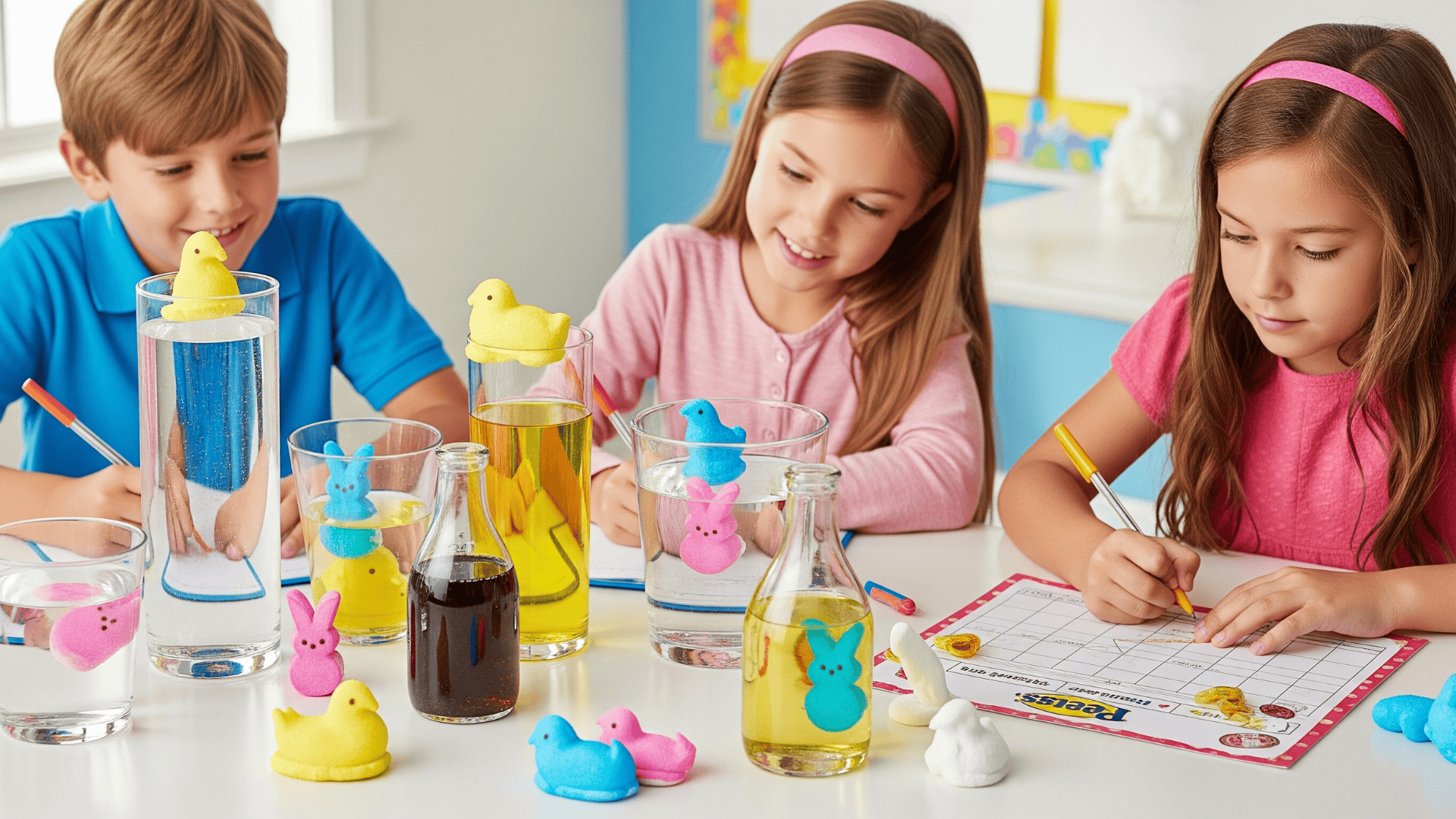
Set up water containers with various ocean items to test floating properties.
Create prediction charts before testing shells, rocks, plastic animals, and sponges.
Children sort results and discuss why items sink or float.
Introduces the scientific method and observation skills.
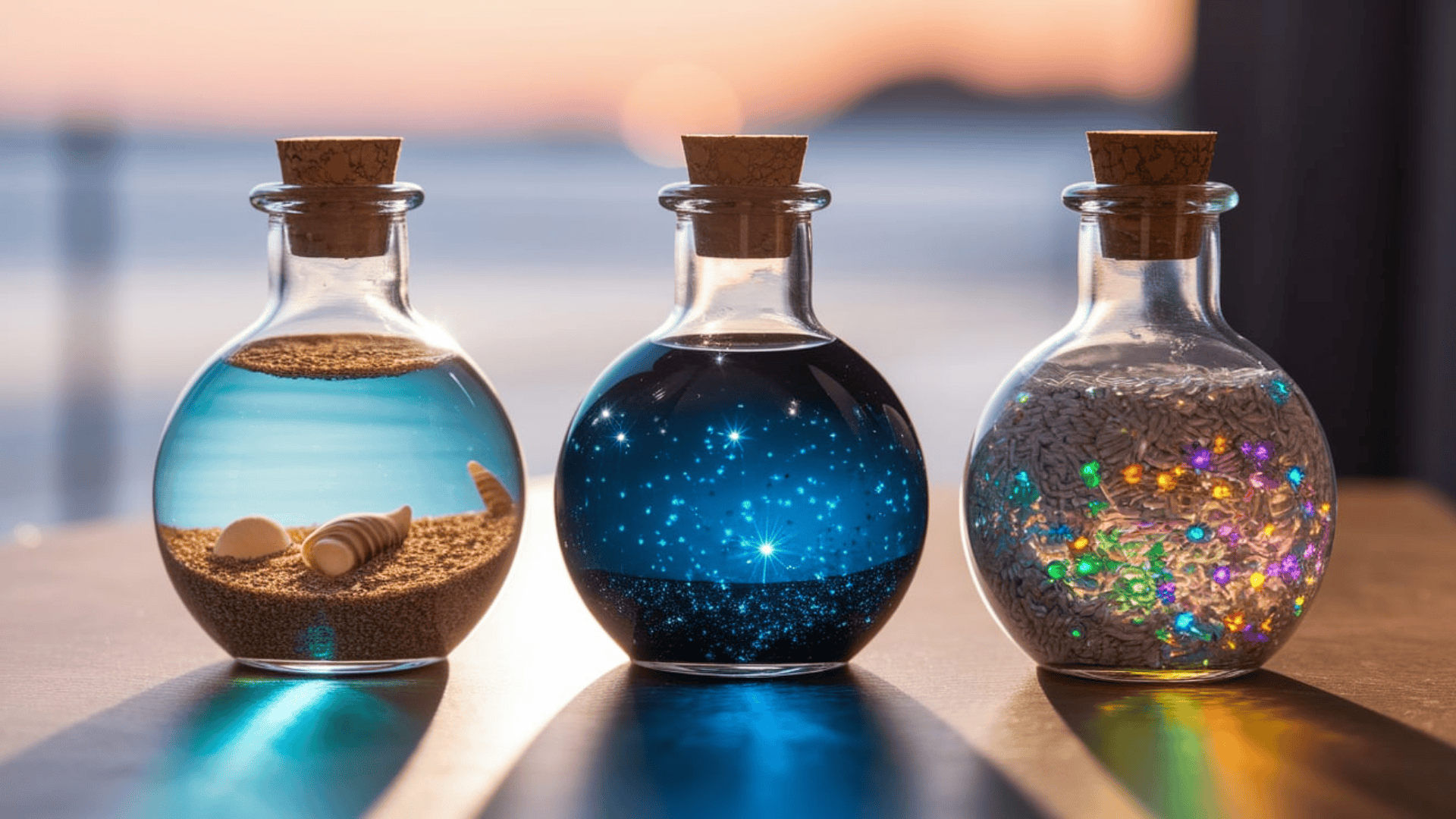
Create themed bottles: sandy beach (sand, shells, blue water), deep ocean (dark water, glitter, glow stars), or treasure (colored rice, gems).
Seal tightly and let children shake to observe movement.
Make “I Spy” cards for each bottle to extend learning.
Perfect portable sensory tools for transitions.
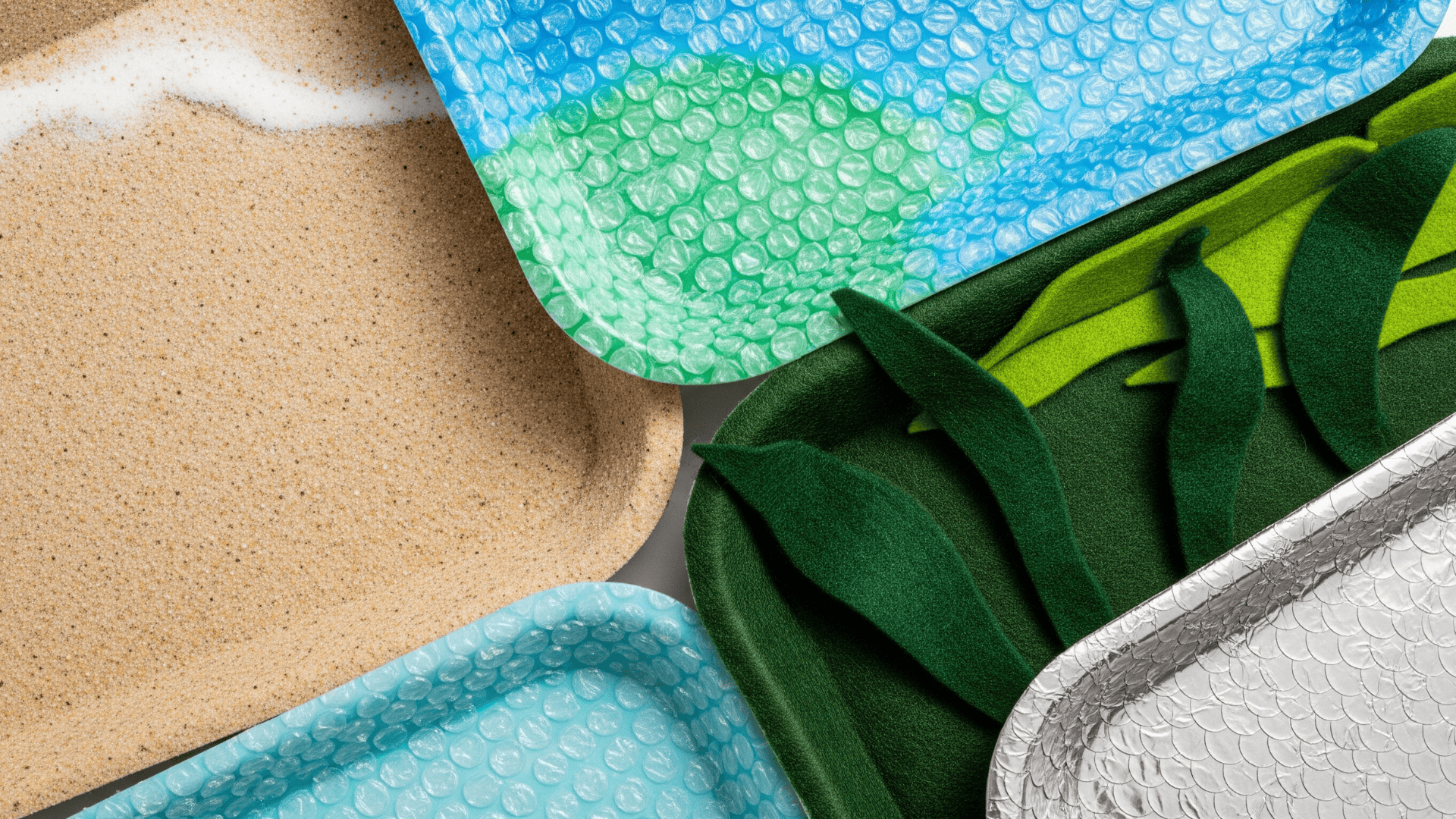
Create boards with different textures: sandpaper beaches, bubble wrap water, felt seaweed, foil fish scales.
Children research with their hands and feet, developing tactile discrimination.
Create matching games or blindfolded guessing activities.
Builds vocabulary for describing different textures.
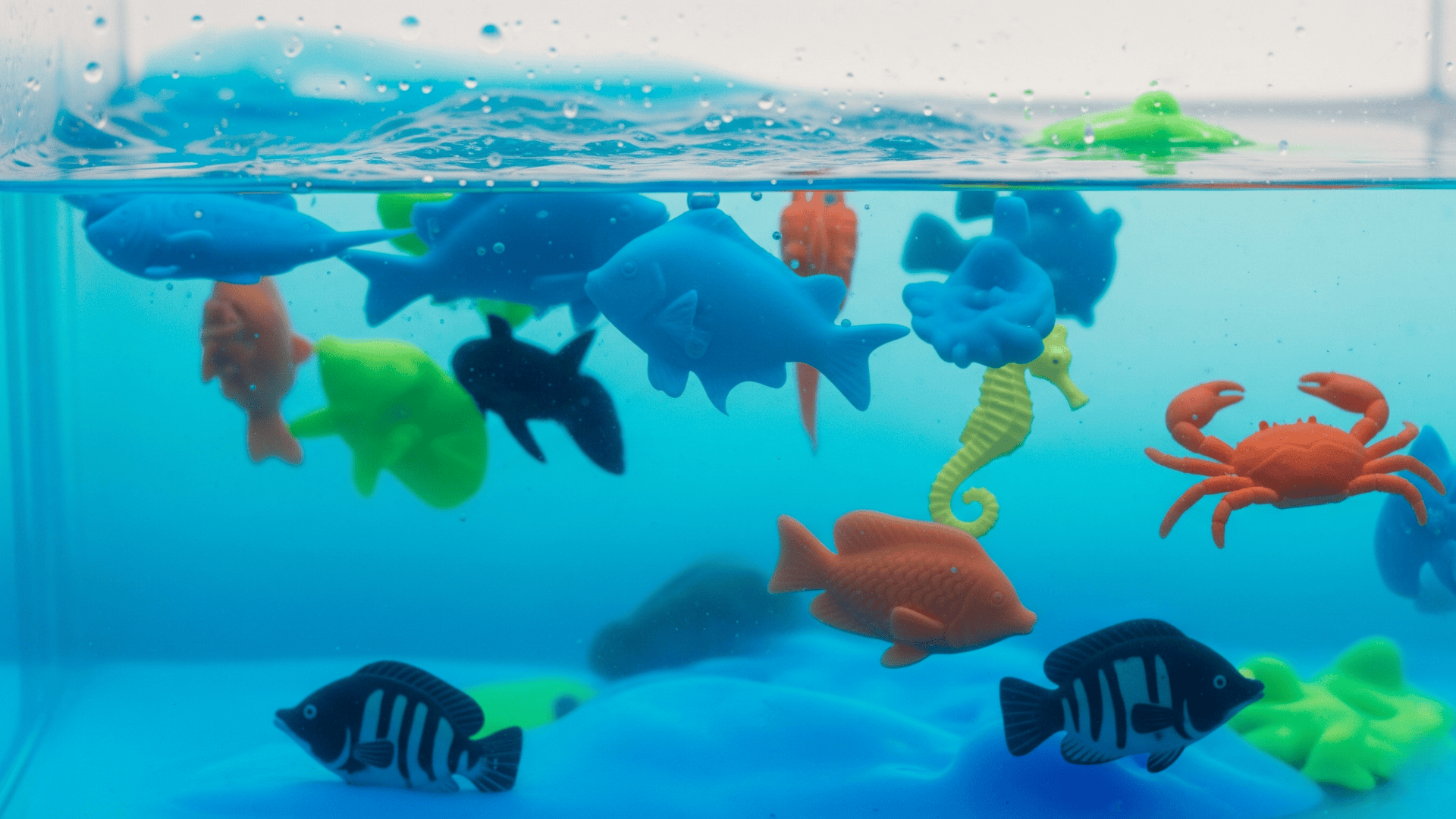
Mix cornstarch and water with blue food coloring to create this non-Newtonian fluid.
Add plastic sea creatures that sink and surface unpredictably in the mixture.
Children study how it acts solid when pressed but flows when released.
Shows how ocean waves work in an engaging way.
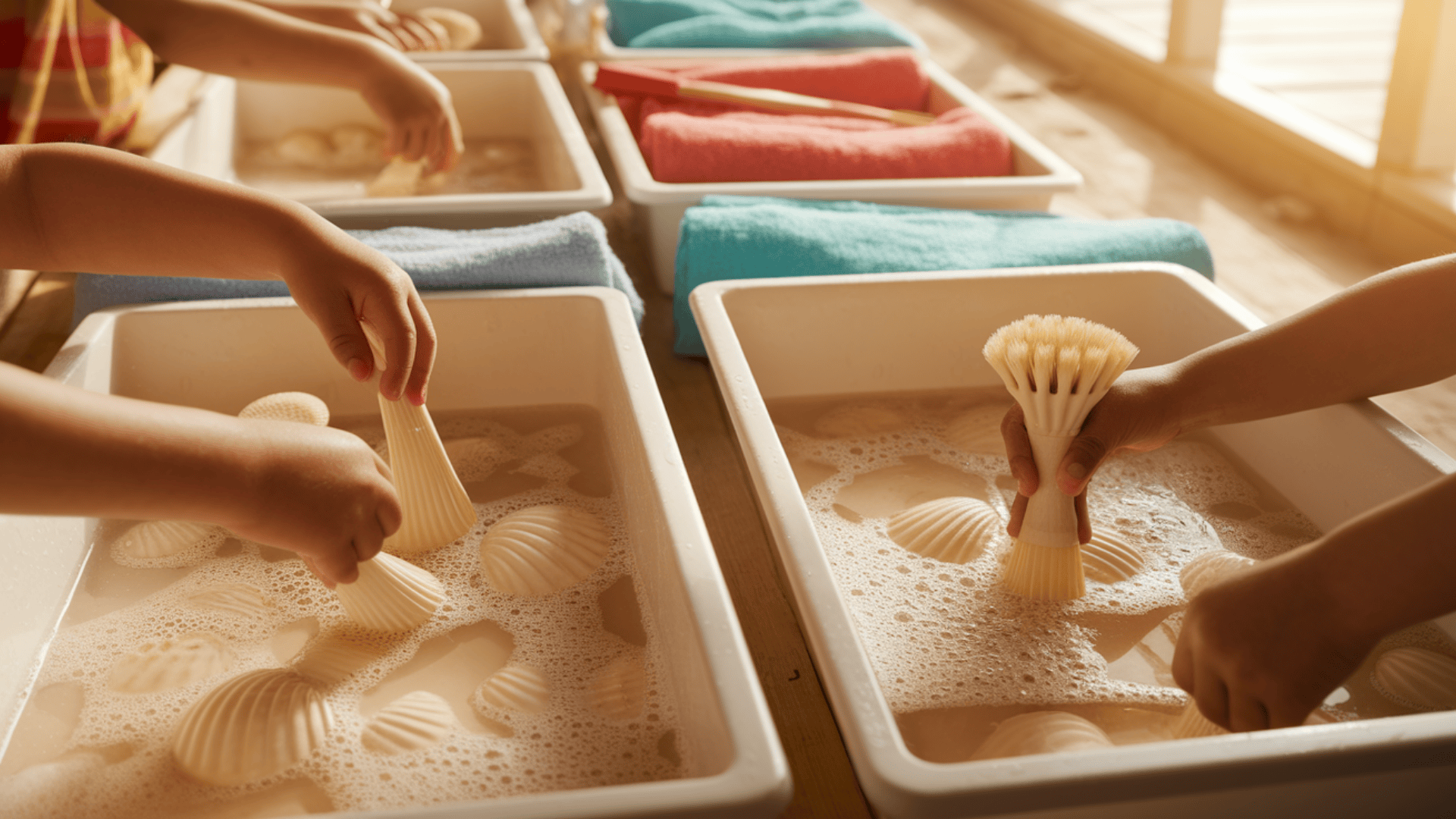
Set up bins with soapy water, rinse water, brushes, and drying towels.
Children wash dirty shells carefully, practicing sequencing and fine motor skills.
This practical life activity provides satisfying sensory experiences while teaching real-world skills.
Display clean shells or use them for art projects.
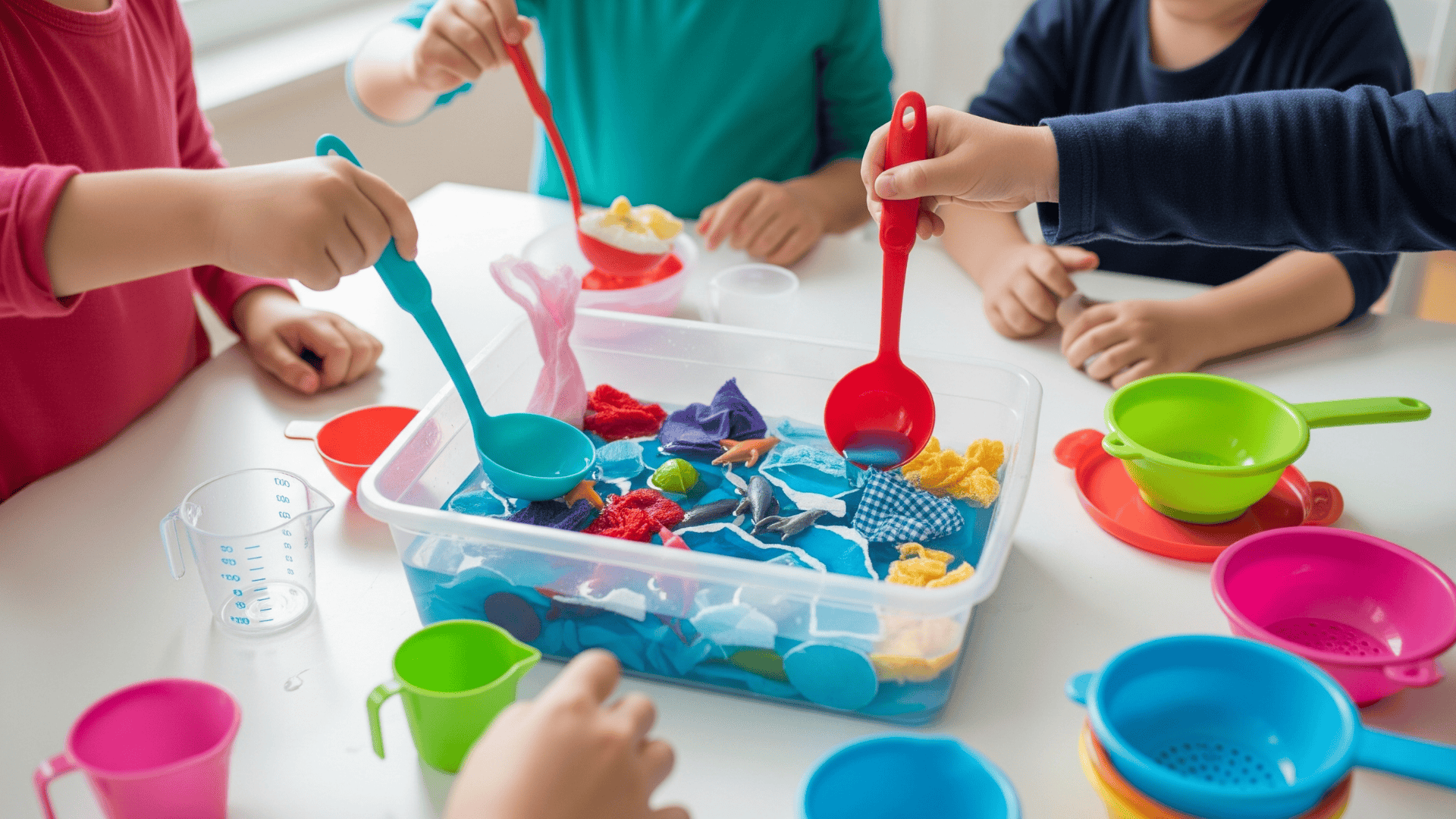
Create pretend soup with water, torn blue paper, fabric scraps, and plastic sea creatures.
Provide ladles, measuring cups, and strainers for cooking play.
Children stir, pour, and create recipes while developing imaginative play skills.
Combines sensory exploration with dramatic play and social cooperation.
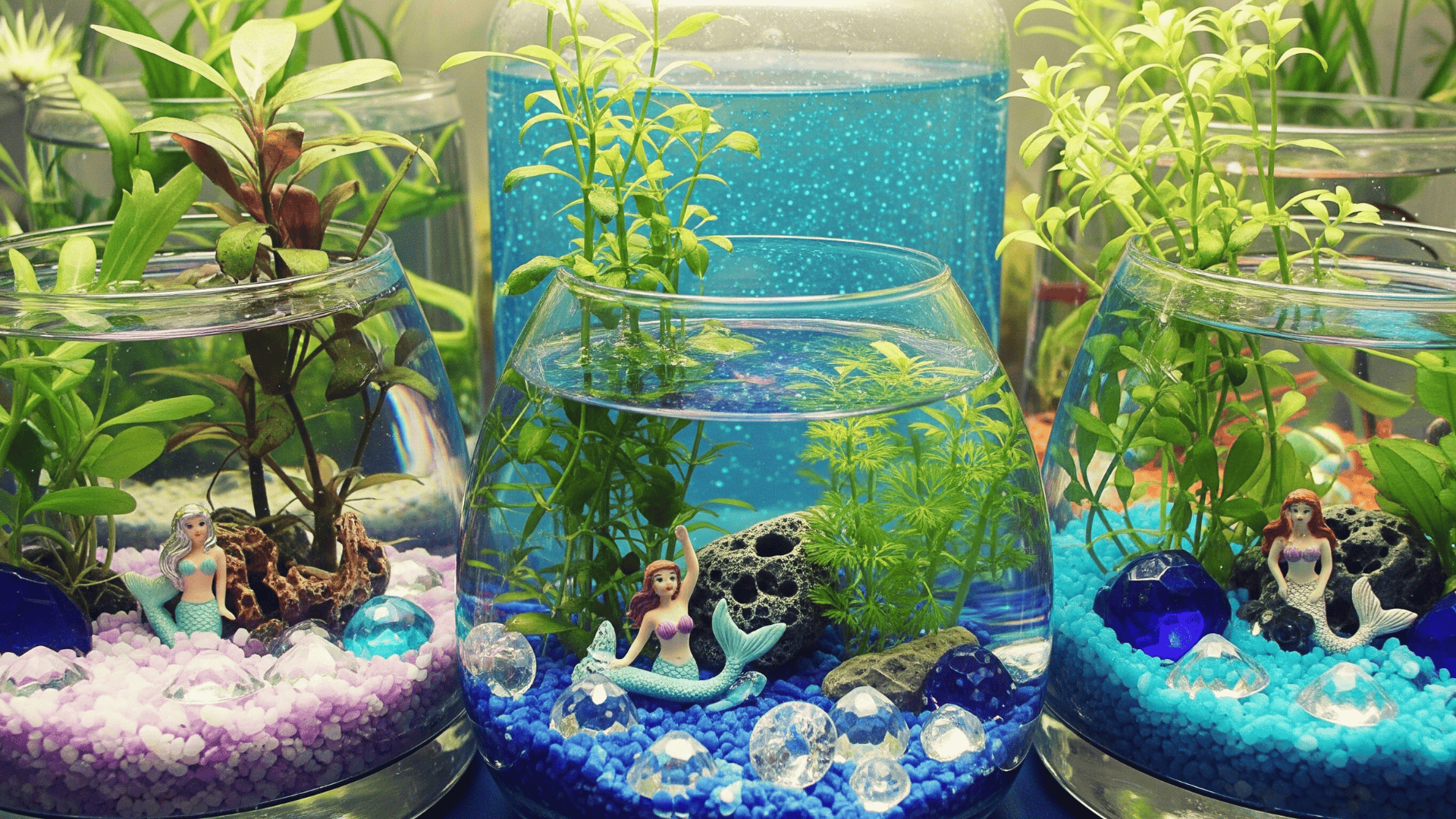
Design underwater gardens in clear containers using aquarium plants, gravel, gems, and mermaid figures.
Add water with blue coloring and glitter for a magical effect.
Children arrange and rearrange their gardens while creating stories.
Encourages creative storytelling and provides calming visual experiences.
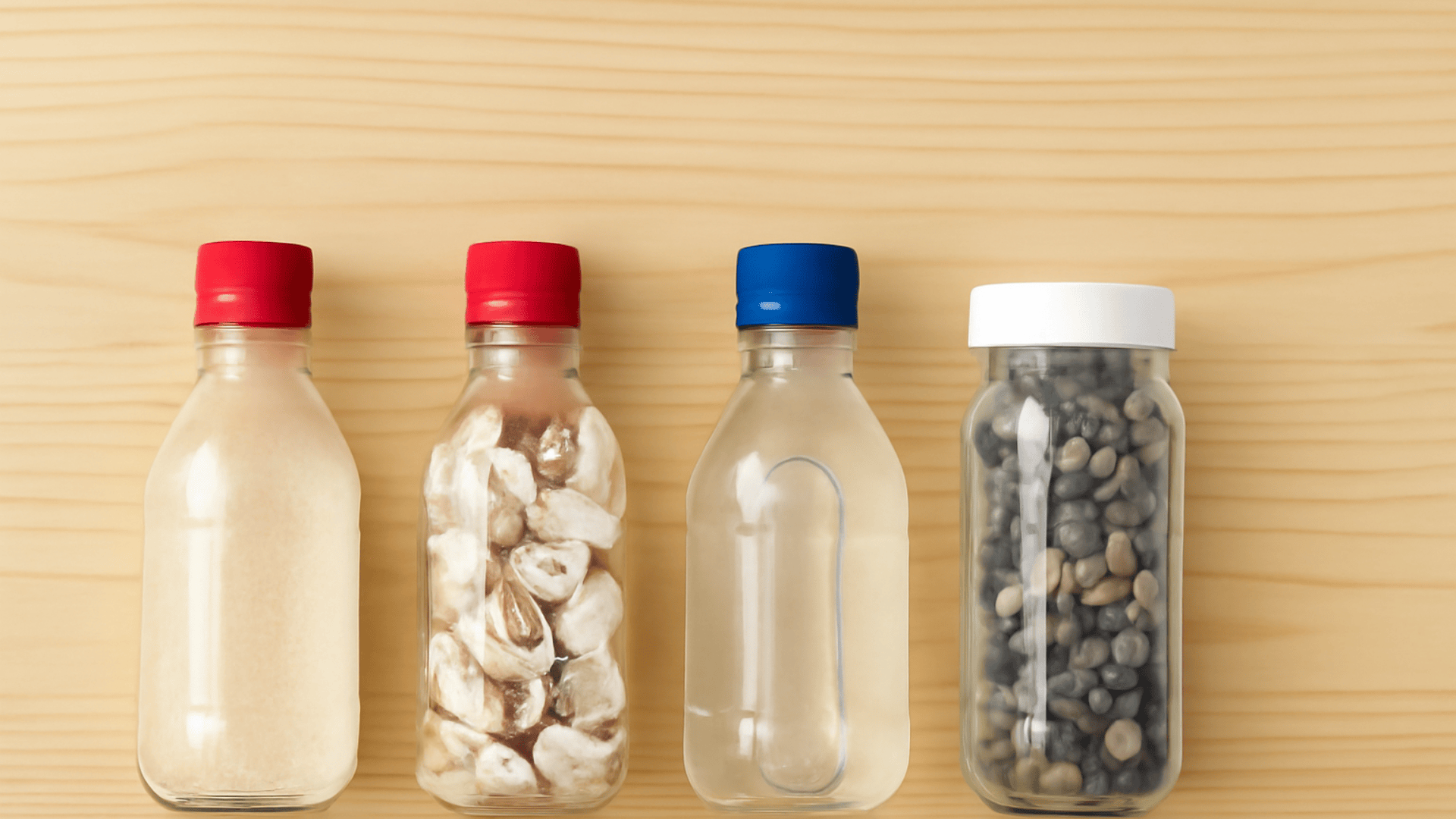
Fill various containers with materials creating ocean sounds: sand for waves, shells for clicking, water, and pebbles for rain.
Seal securely and let children guess the contents by sound.
Create ocean symphonies by shaking different containers together.
Develops auditory discrimination and rhythm skills.
Creative projects let preschoolers express themselves while learning about ocean life.
These crafts use simple materials for maximum creativity.
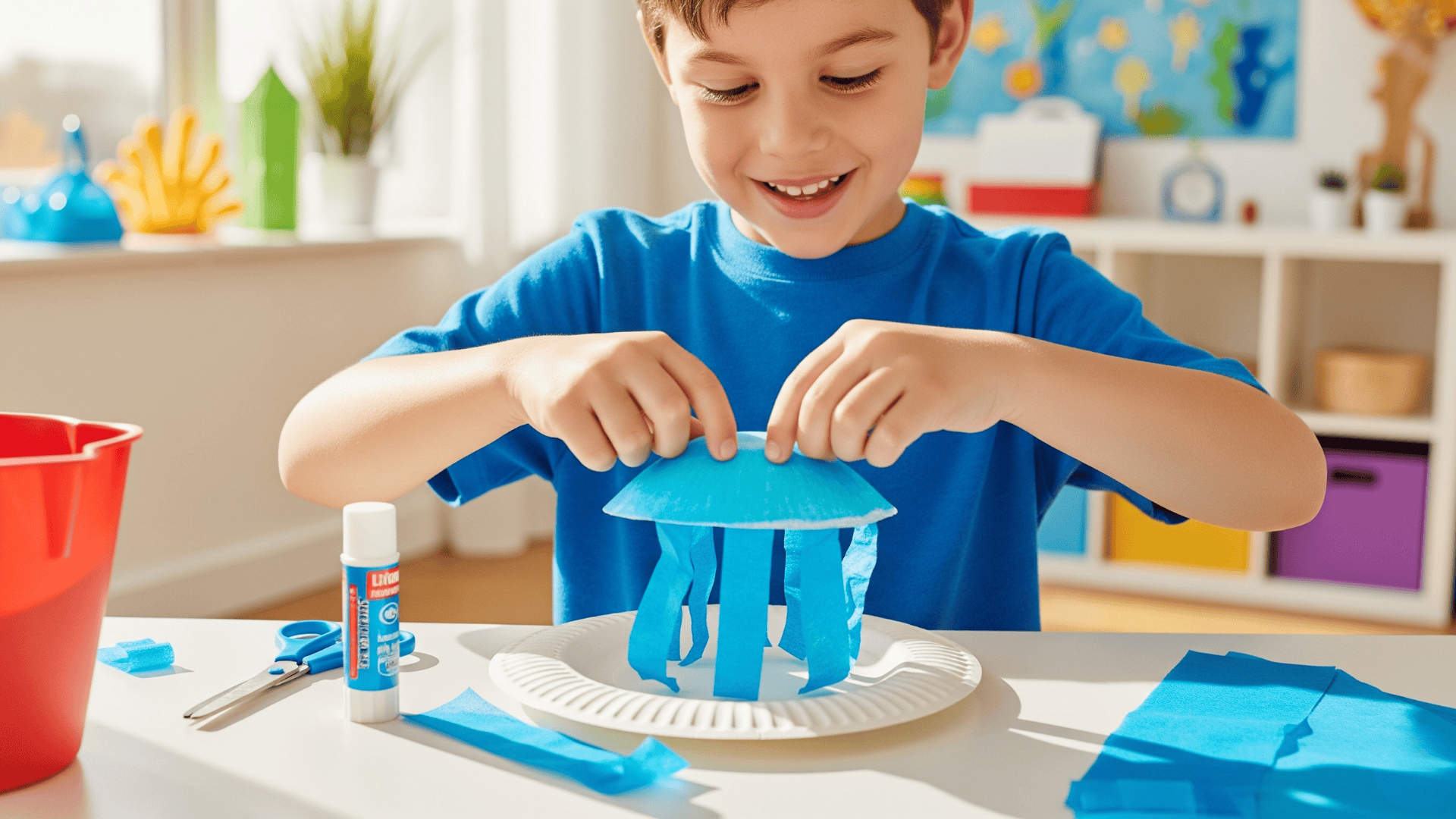
Cut paper plates in half and paint the rounded side in ocean colors.
Attach ribbons, streamers, or tissue paper strips to the straight edge for tentacles.
Add googly eyes and hang from the ceiling with a fishing line.
It creates a magical underwater atmosphere while practicing cutting and gluing skills.
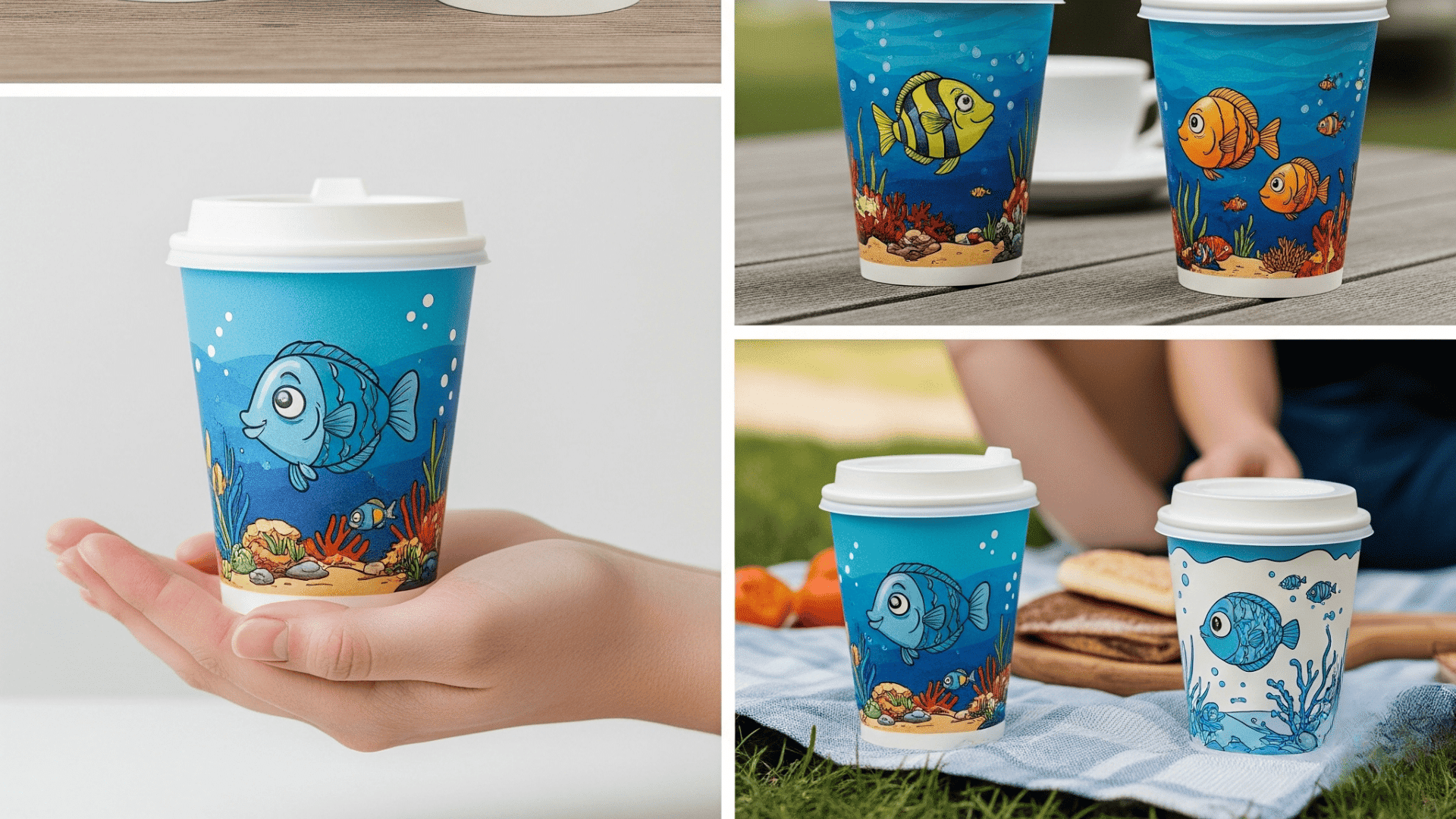
Color coffee cups with washable markers, then spray with water to create tie-dye effects.
Once dry, gather in the middle to form a fish body.
Add paper fins and googly eyes for finishing touches.
These translucent fish look beautiful displayed on windows.
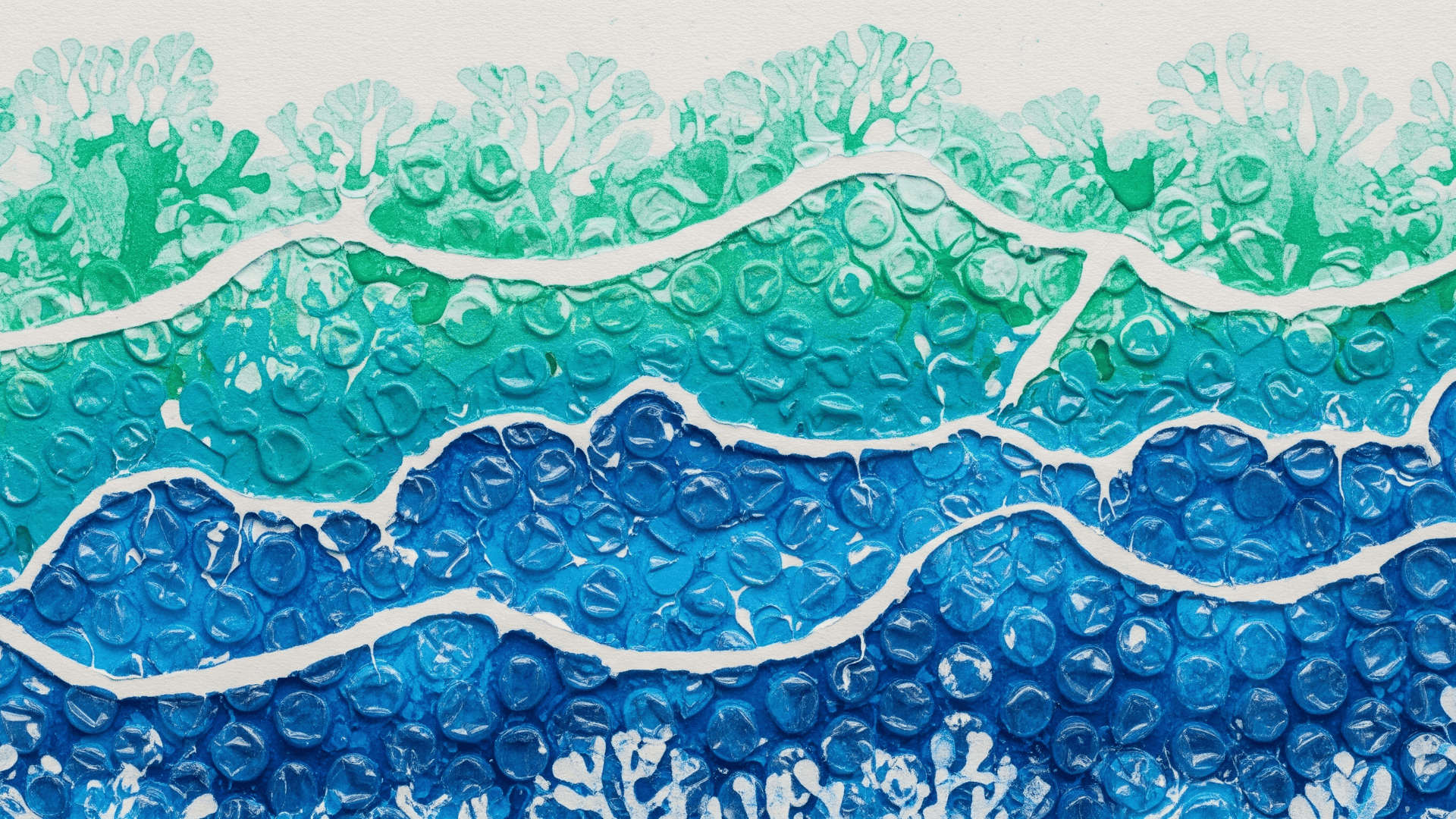
Dip bubble wrap in blue and green paint, then press onto paper for textured ocean backgrounds.
Layer different colors for a depth effect and add details later.
The popping sensation adds sensory satisfaction to the art process.
Creates interesting textures perfect for underwater scenes.
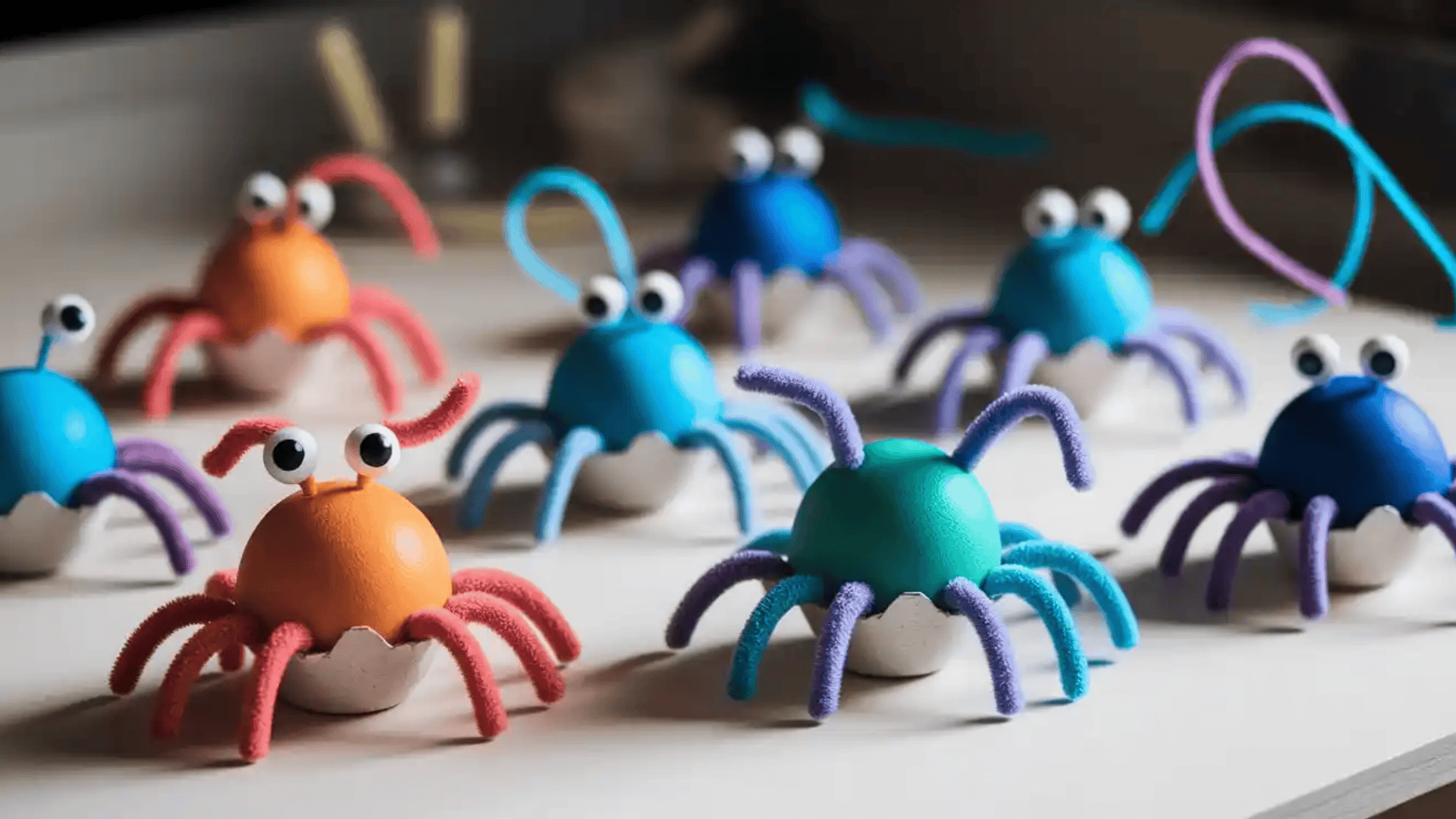
Cut egg cartons into cups for crab bodies or octopus heads.
Paint and add pipe cleaner legs, ribbon tentacles, or paper features.
This recycled art project teaches 3D construction and creative problem-solving.
Children learn to see new possibilities in everyday materials.
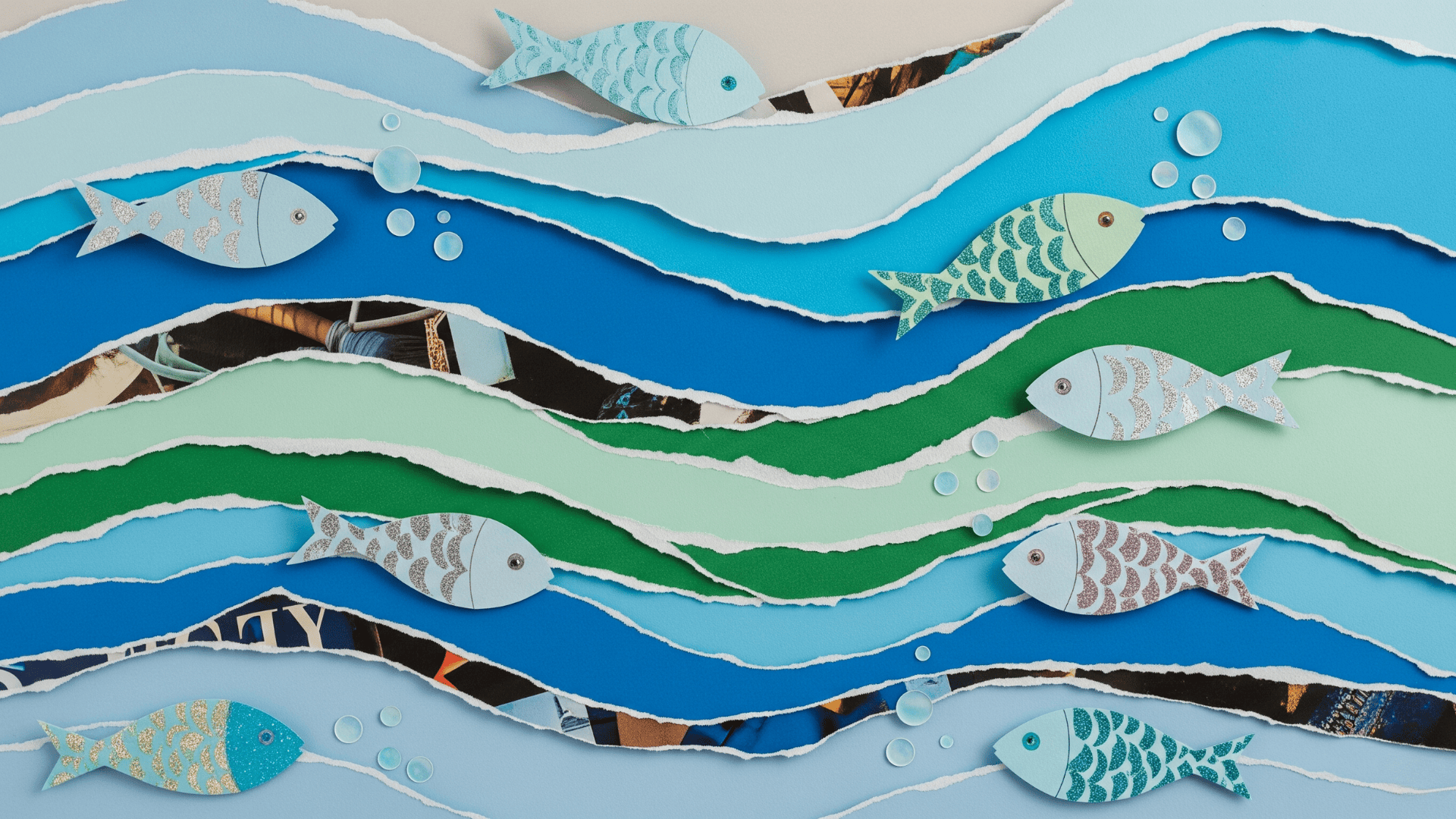
Tear blue and green paper into wave shapes and layer on the background paper.
Add magazine pictures, tissue paper fish, and foil for sparkly scales.
This open-ended activity allows creative expression while practicing fine motor skills.
Teaches concepts of layering and composition.
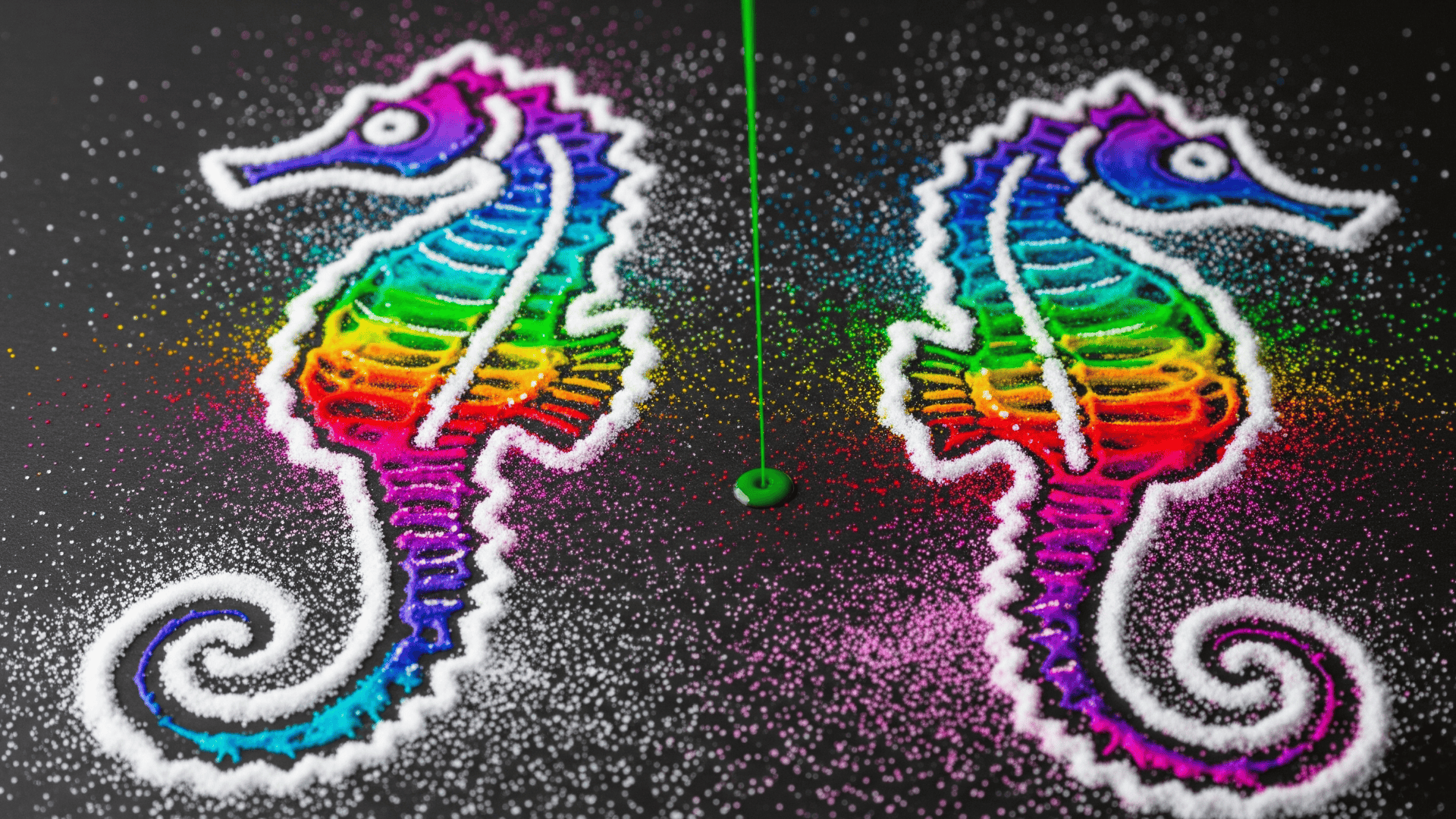
This magical process combines science and art while developing fine motor control.
Creates stunning results that always amaze children.
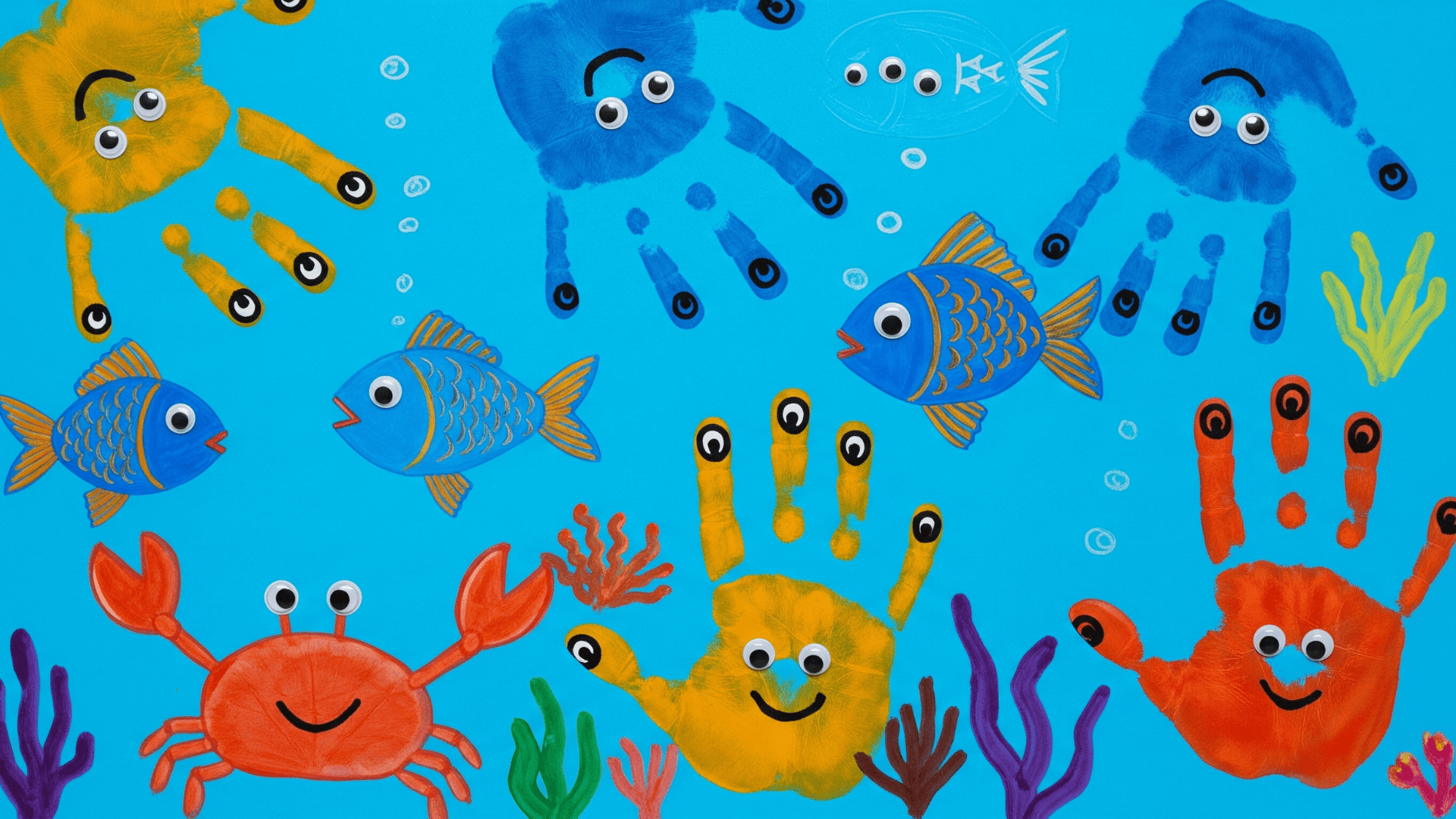
Use painted handprints to create octopi (fingers as tentacles), fish (sideways print), or crabs (two hands for legs).
Add details with markers and googly eyes once dry.
Creates memorable keepsakes while teaching creative shape transformation.
Perfect for ocean-themed memory books.
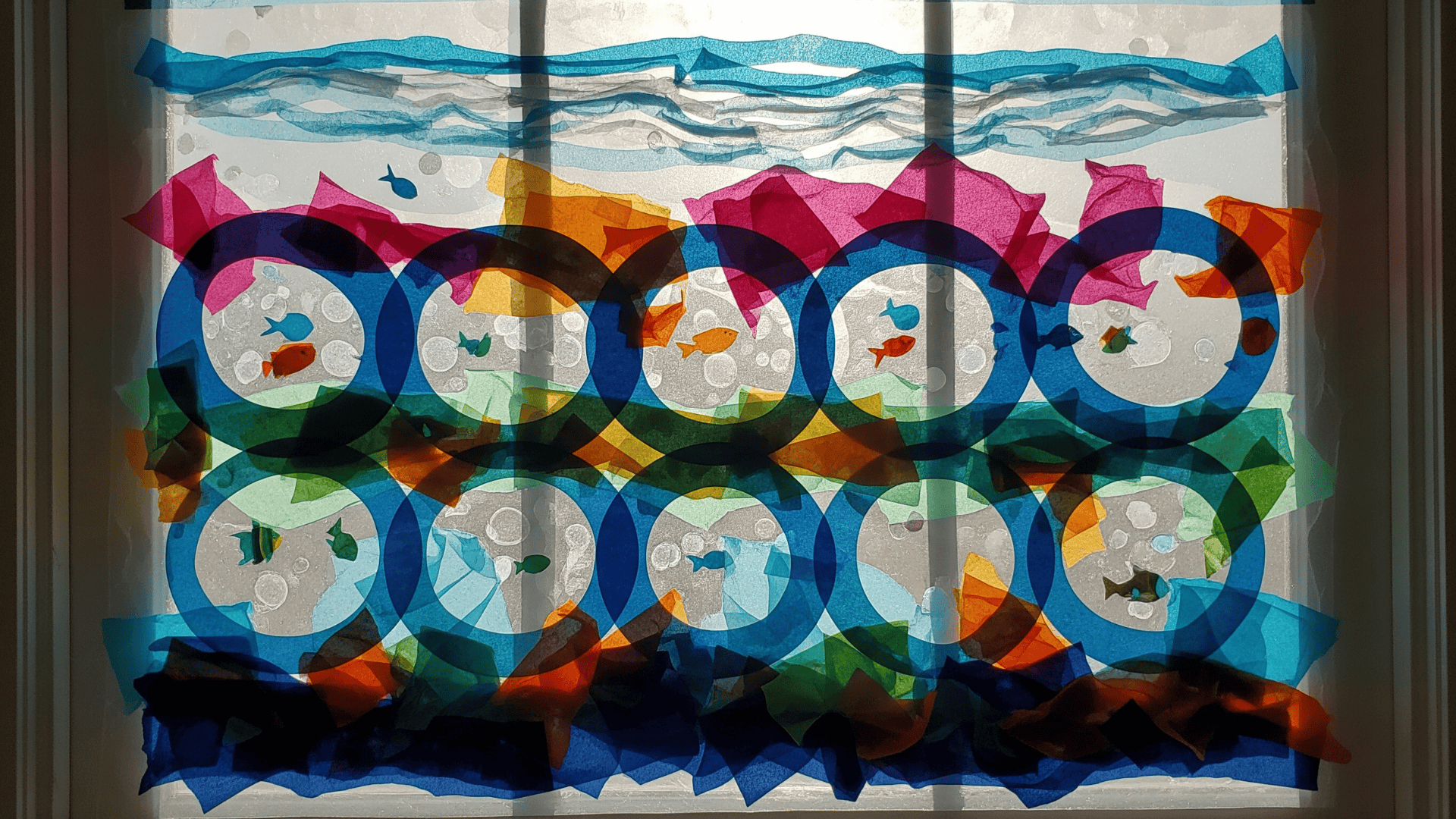
Arrange torn tissue paper on sticky contact paper, then seal with another sheet.
Cut into circles and hang in windows for stained glass effects.
Children practice tearing and precise placement while creating beautiful light-catching art.
Color mixing happens naturally where pieces overlap.
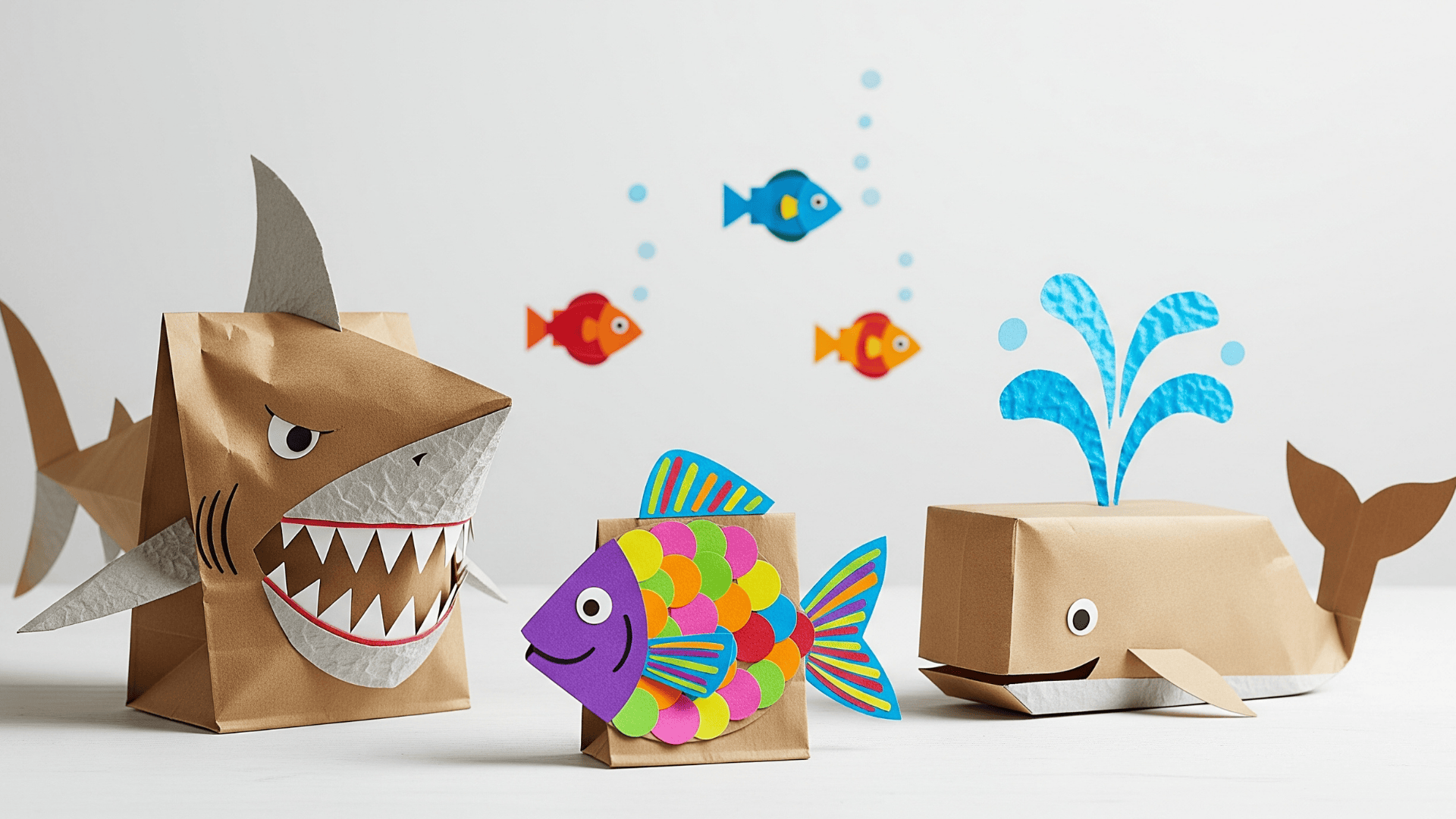
Transform lunch bags into sharks with triangular teeth, whales with spouts, or colorful fish.
Add construction paper features and use it for puppet shows.
Combines art with dramatic play, encouraging storytelling and character development.
Create ocean scene puppet theaters from decorated boxes.
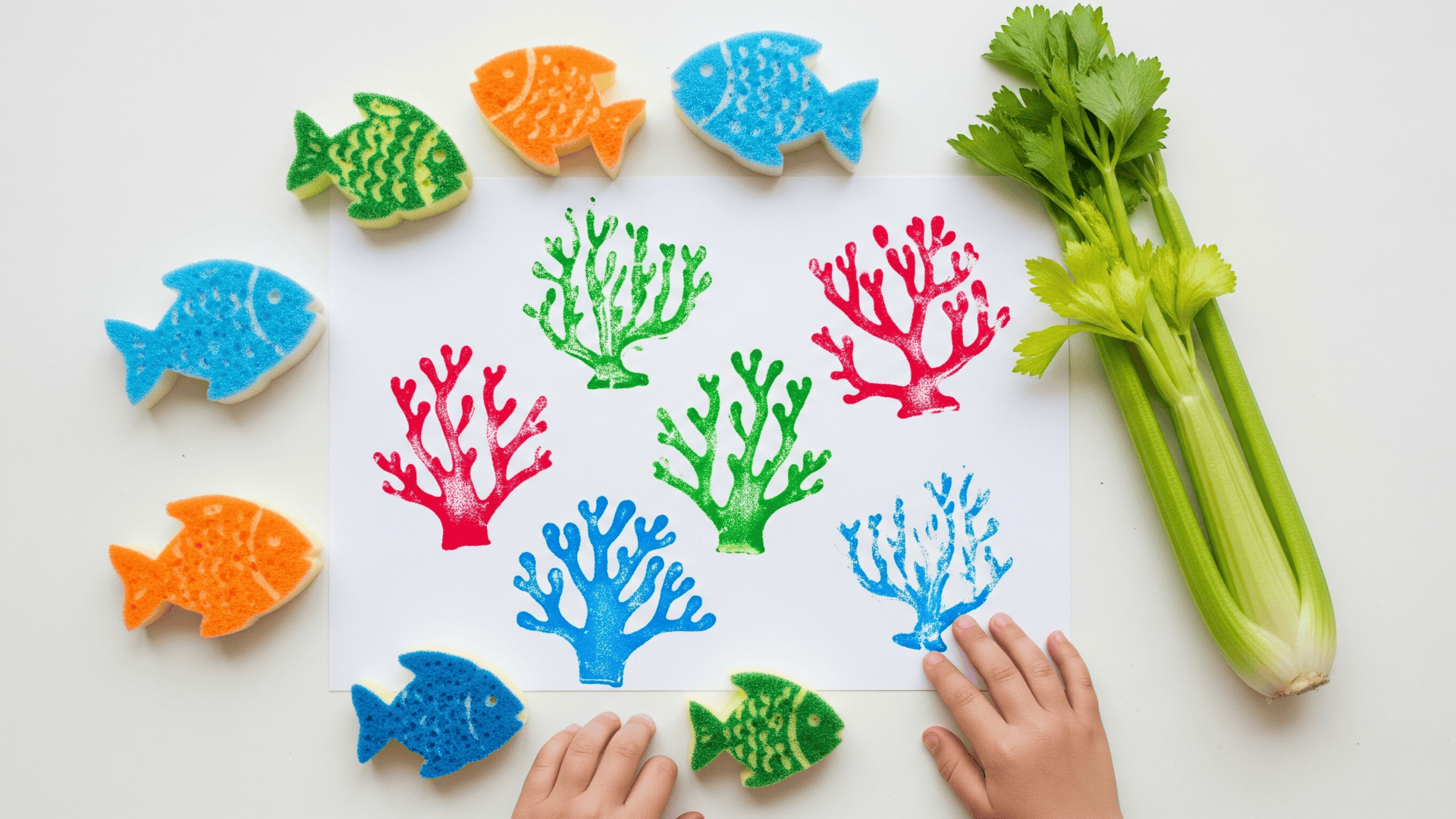
Cut sponges into fish shapes or use vegetables like celery for coral prints.
Dip in paint and stamp patterns on paper.
Children create underwater scenes or decorative patterns while learning about printmaking.
Provides satisfying sensory feedback and teaches pattern creation.
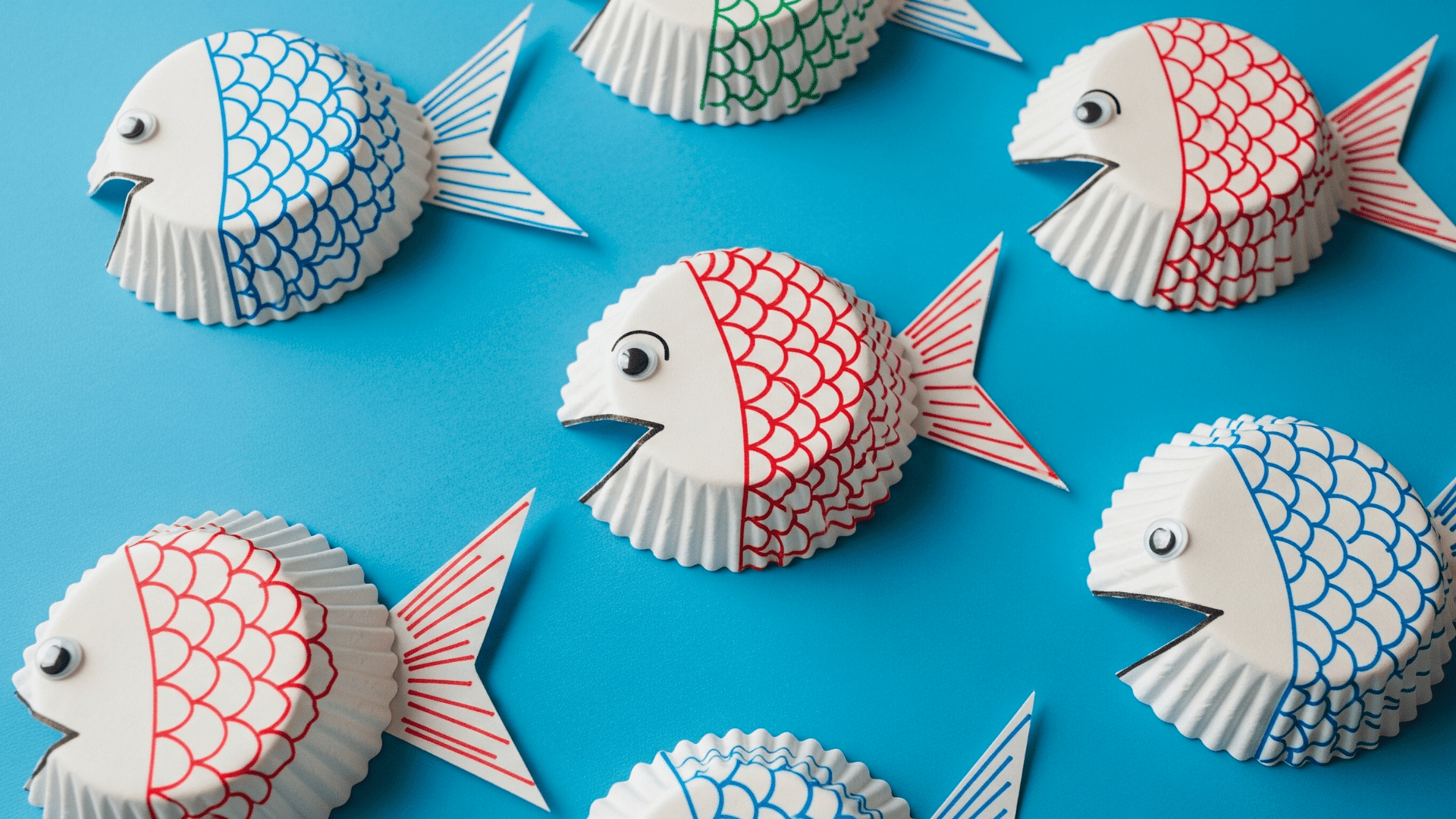
Flatten cupcake liners and cut triangular sections for mouths.
Glue onto blue paper using the cut triangle as a tail.
Add googly eyes and scale patterns with markers.
This simple craft teaches spatial relationships and creative reuse of materials.
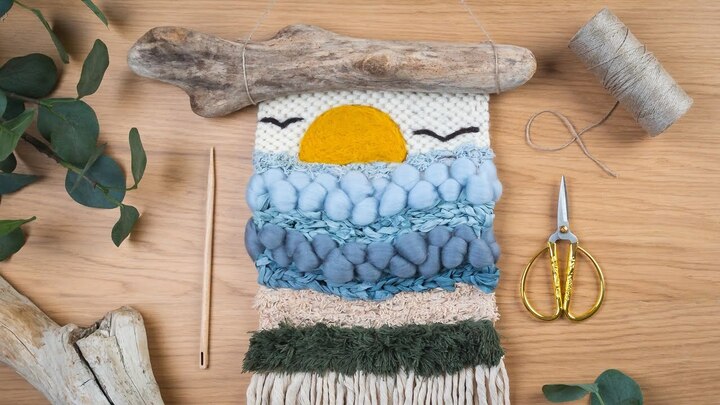
Create weaving frames from paper plates with centers cut out.
String blue yarn across for waves, then weave green ribbons for seaweed.
Add shell decorations for finishing touches.
Develops pattern recognition and concentration while creating textured ocean art.
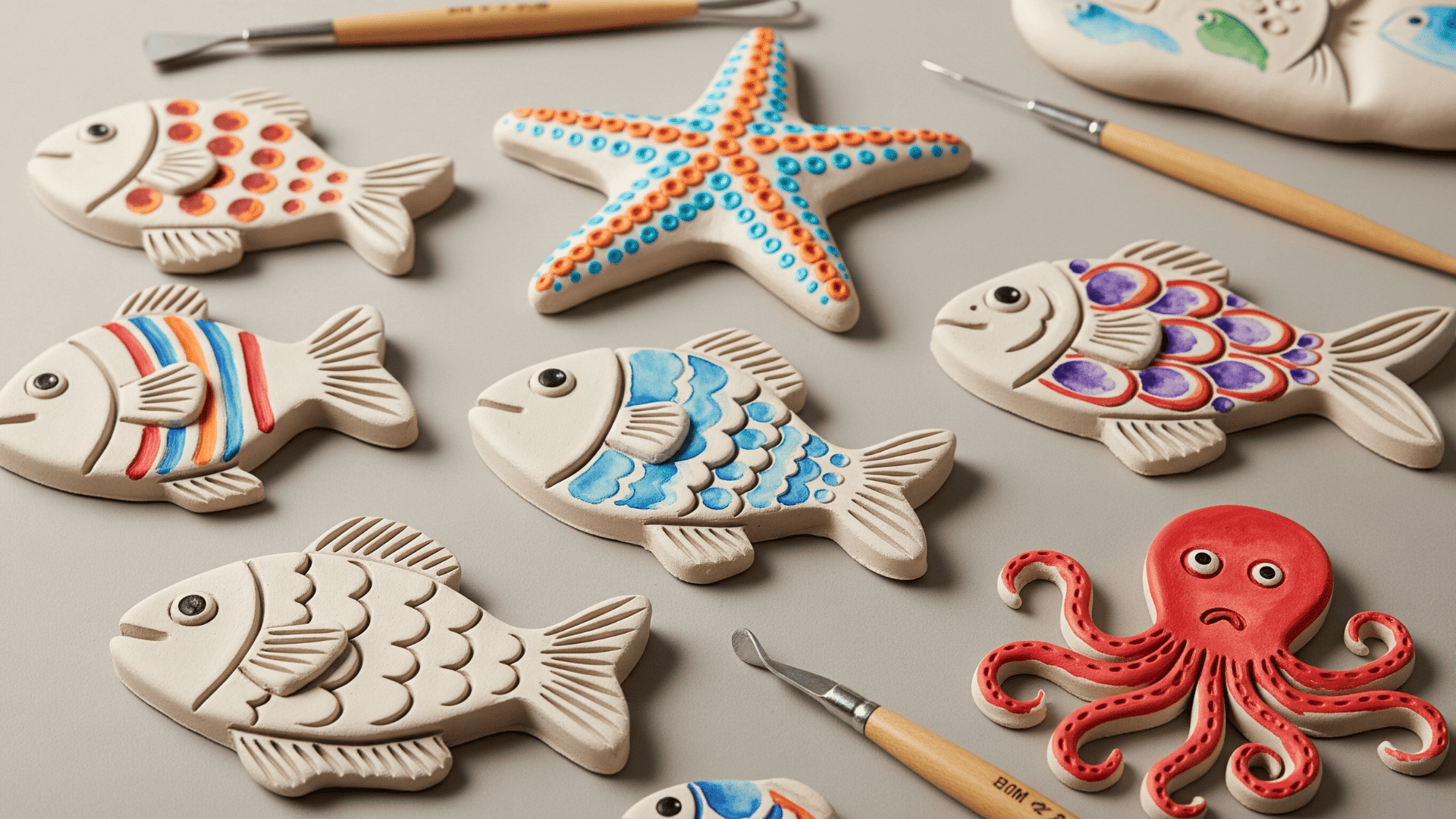
Mold air-dry clay into simple fish, starfish, or octopus shapes.
Use tools to add texture and let them dry completely before painting.
Display in the classroom an ocean museum with child-dictated labels.
Develops 3D thinking and planning skills while creating lasting artwork.
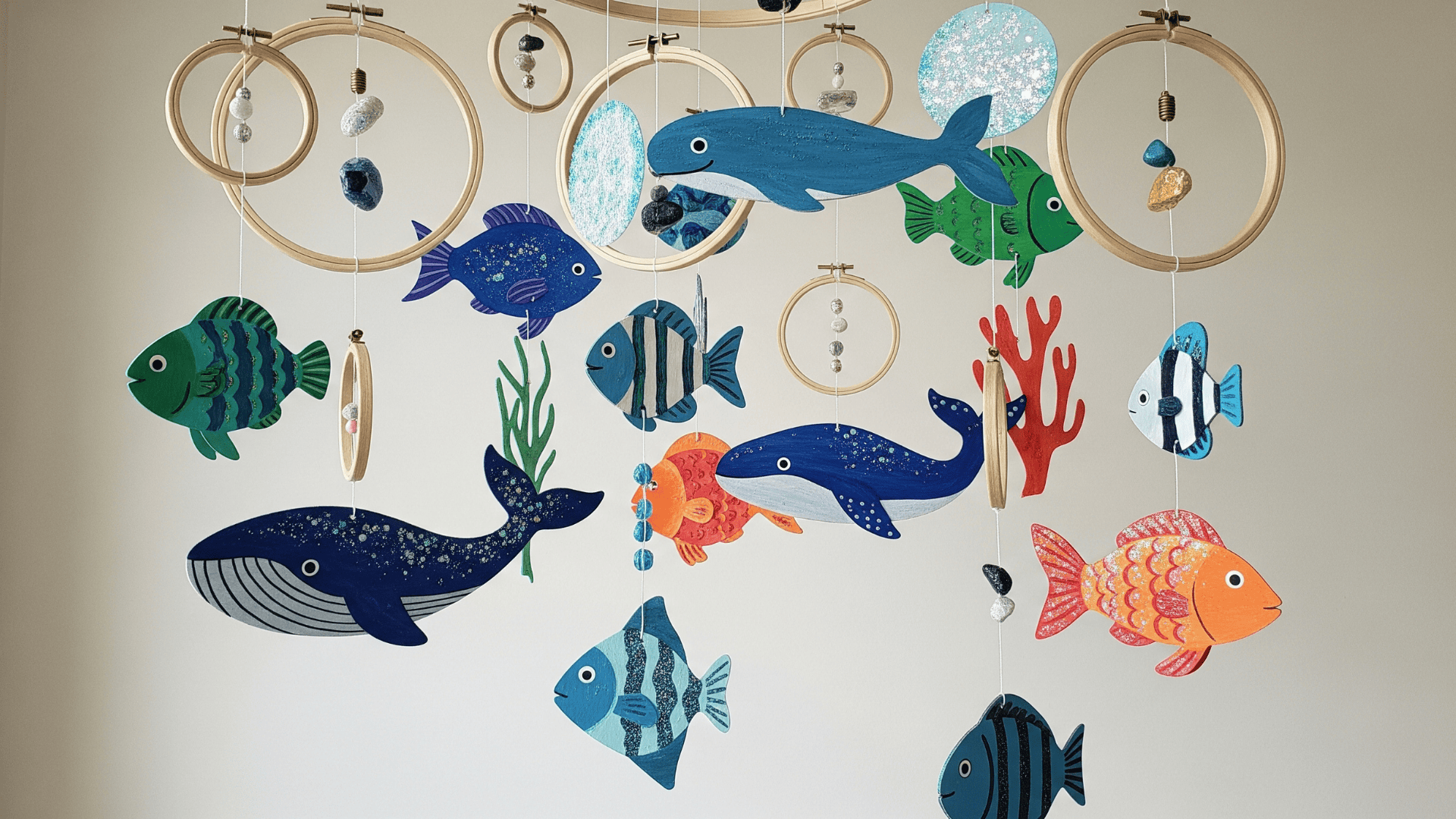
Paint cardboard sea creatures and hang from embroidery hoops at different lengths.
Add sparkly elements for visual interest and hang where air movement creates gentle motion.
Teaches balance concepts while creating soothing classroom decorations.
Children learn about weight distribution through trial and error.
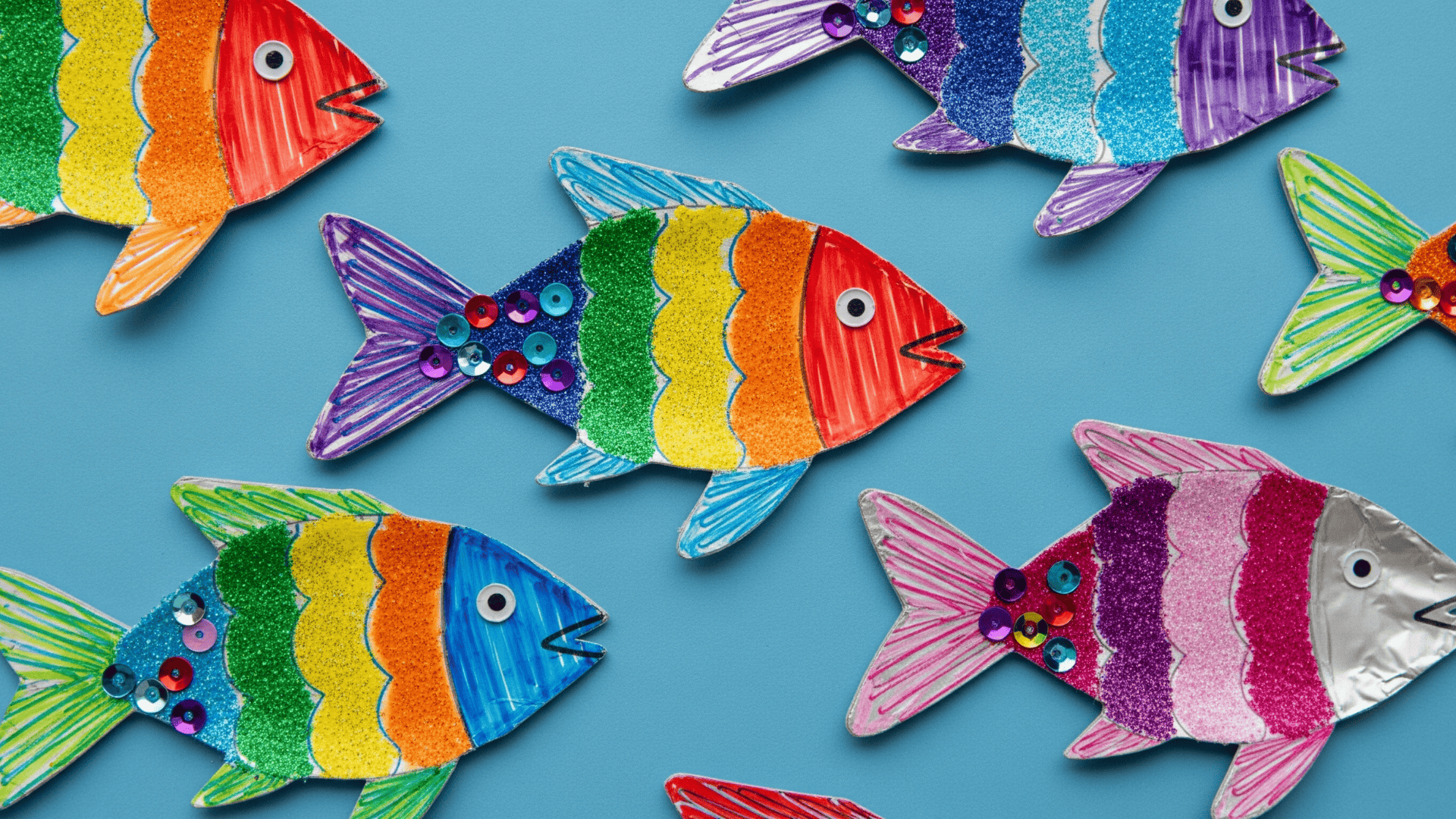
Shape aluminum foil into fish forms and color with permanent markers for rainbow effects.
Add sequins or glitter for scales and create schools on blue backgrounds.
The malleable foil allows easy reshaping if needed.
Studies different art media while developing fine motor control.
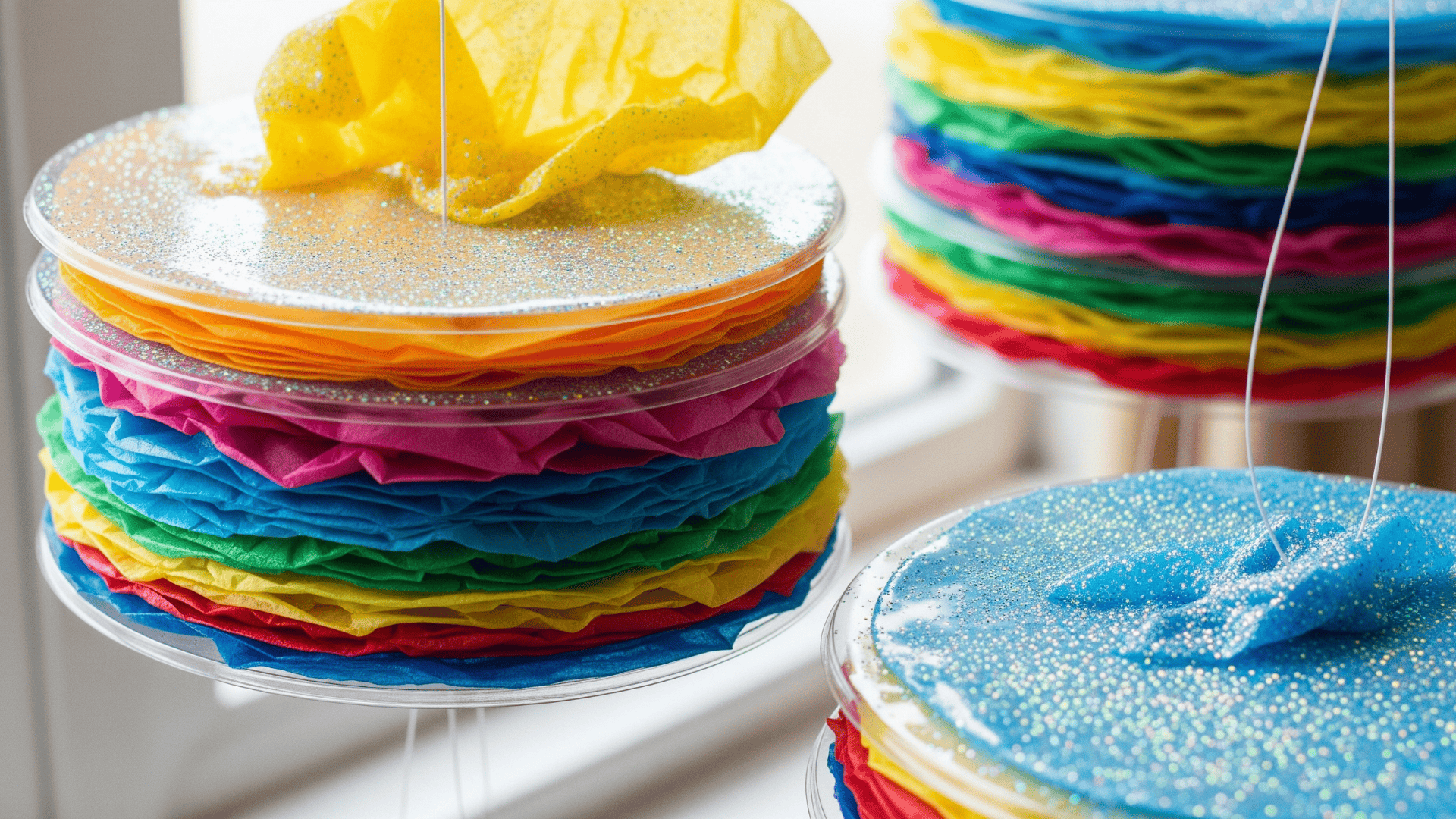
Layer tissue paper between clear contact paper circles or plastic plates.
Add glitter before sealing and hang in windows for glowing colors.
Children learn about transparency and color mixing while creating functional art.
Brightens any classroom with ocean-colored light.
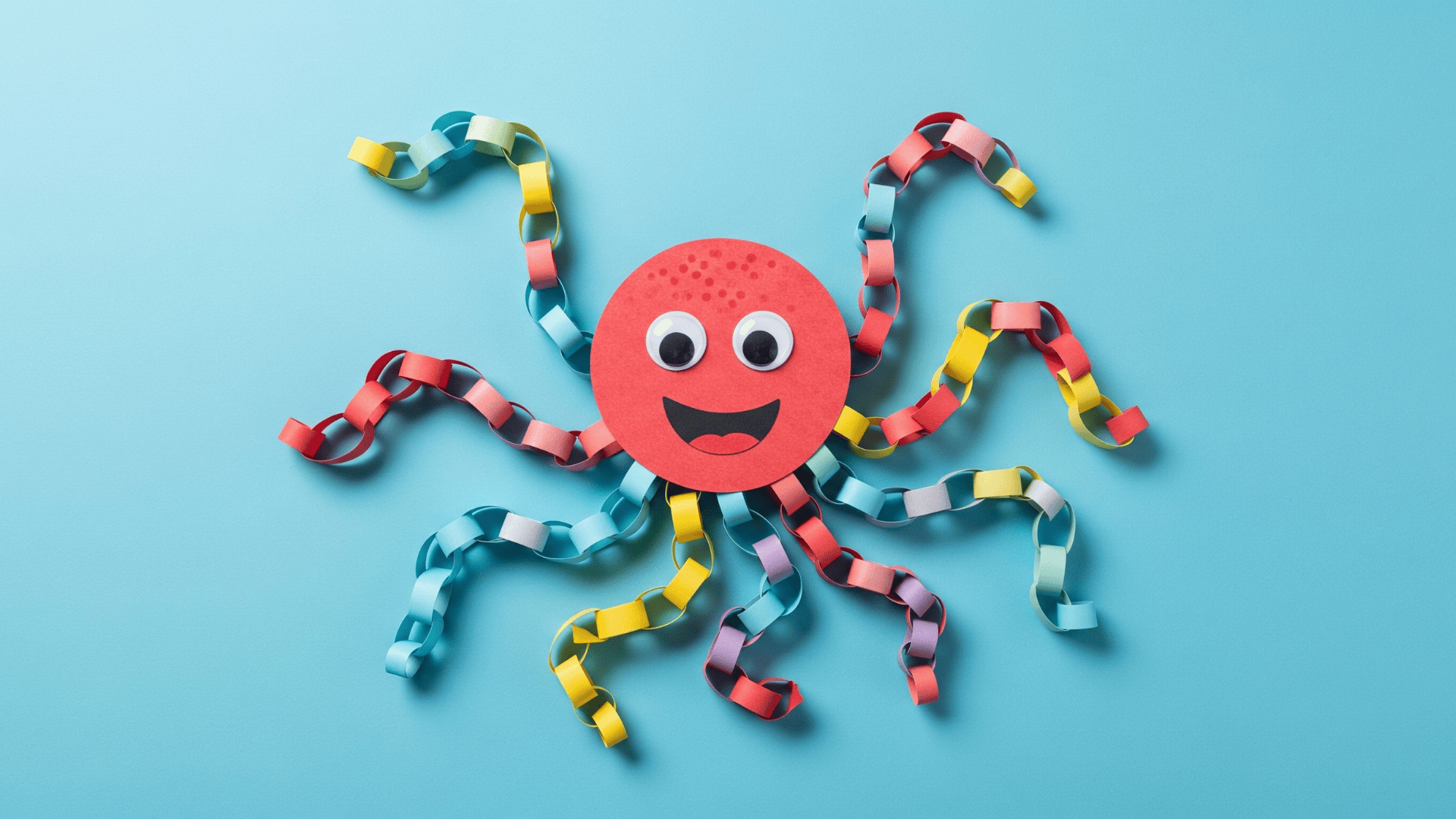
Create eight paper chains for tentacles and attach them to the circular body.
Add large googly eyes and a smiling mouth to complete the octopus.
Reinforces counting to eight while practicing pattern-making and fine motor skills.
Makes impressive 3D decorations for ocean themes.
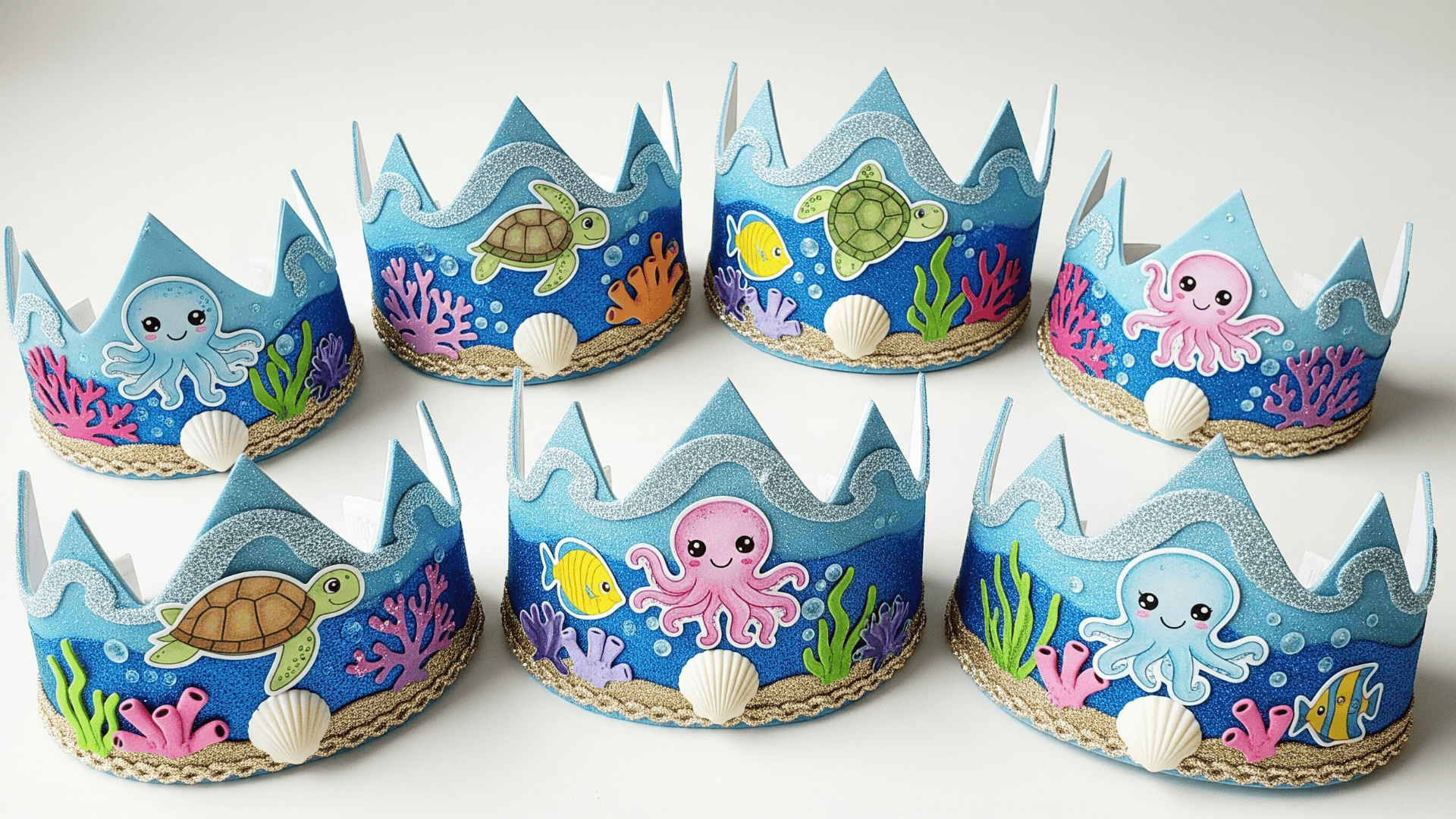
Decorate crown shapes with drawn sea creatures, foam stickers, shells, and glitter waves.
Measure to fit each child and wear during ocean dramatic play.
Encourages roleplay as ocean royalty while expressing personal style.
Children feel special wearing their unique creations.
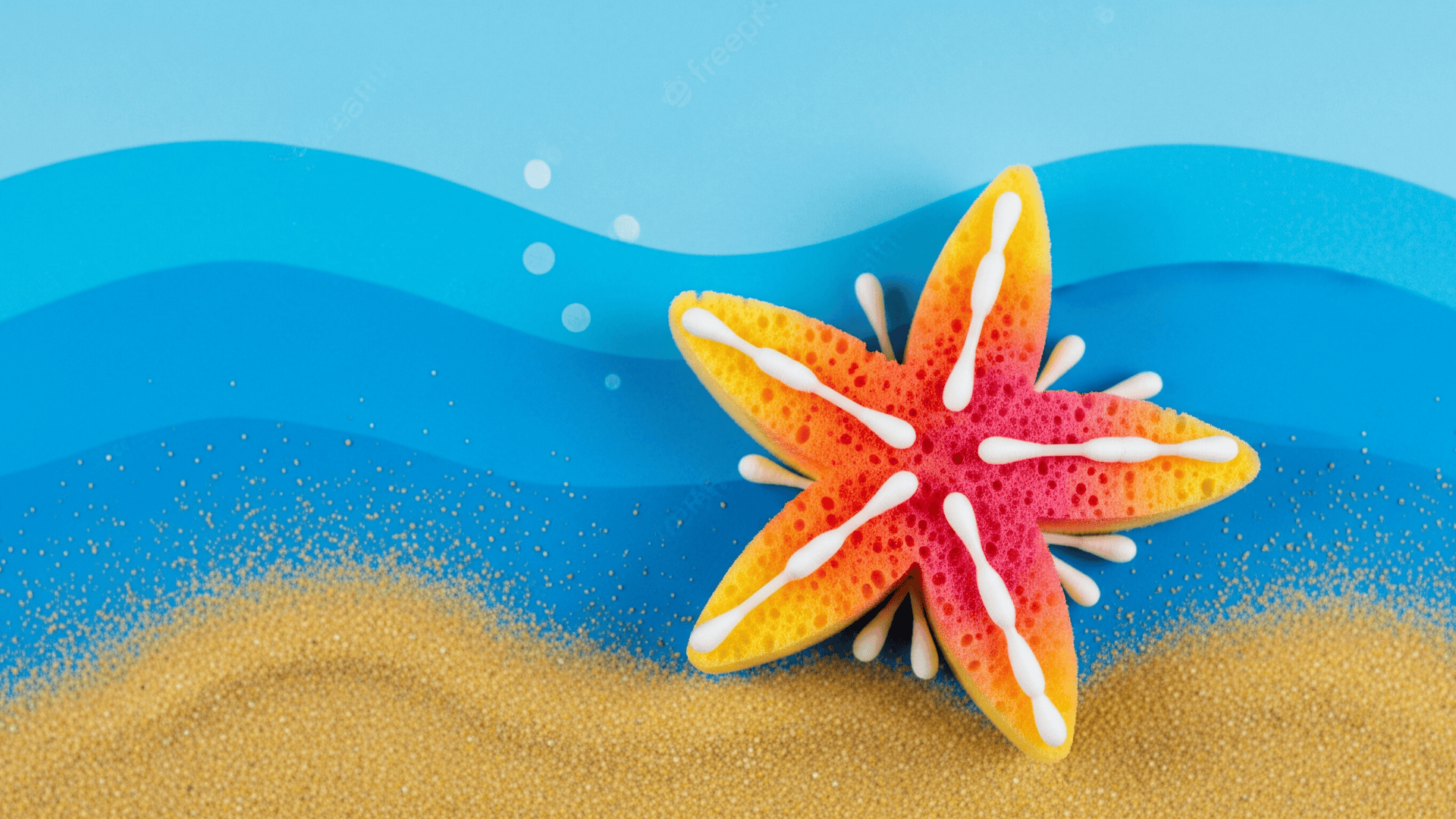
Cut star shapes from sponges and dip in orange or pink paint.
Stamp onto blue paper and sprinkle sand on wet paint for texture.
Add dots with cotton swabs for realistic details.
Teaches shape recognition while creating satisfying repetitive patterns.
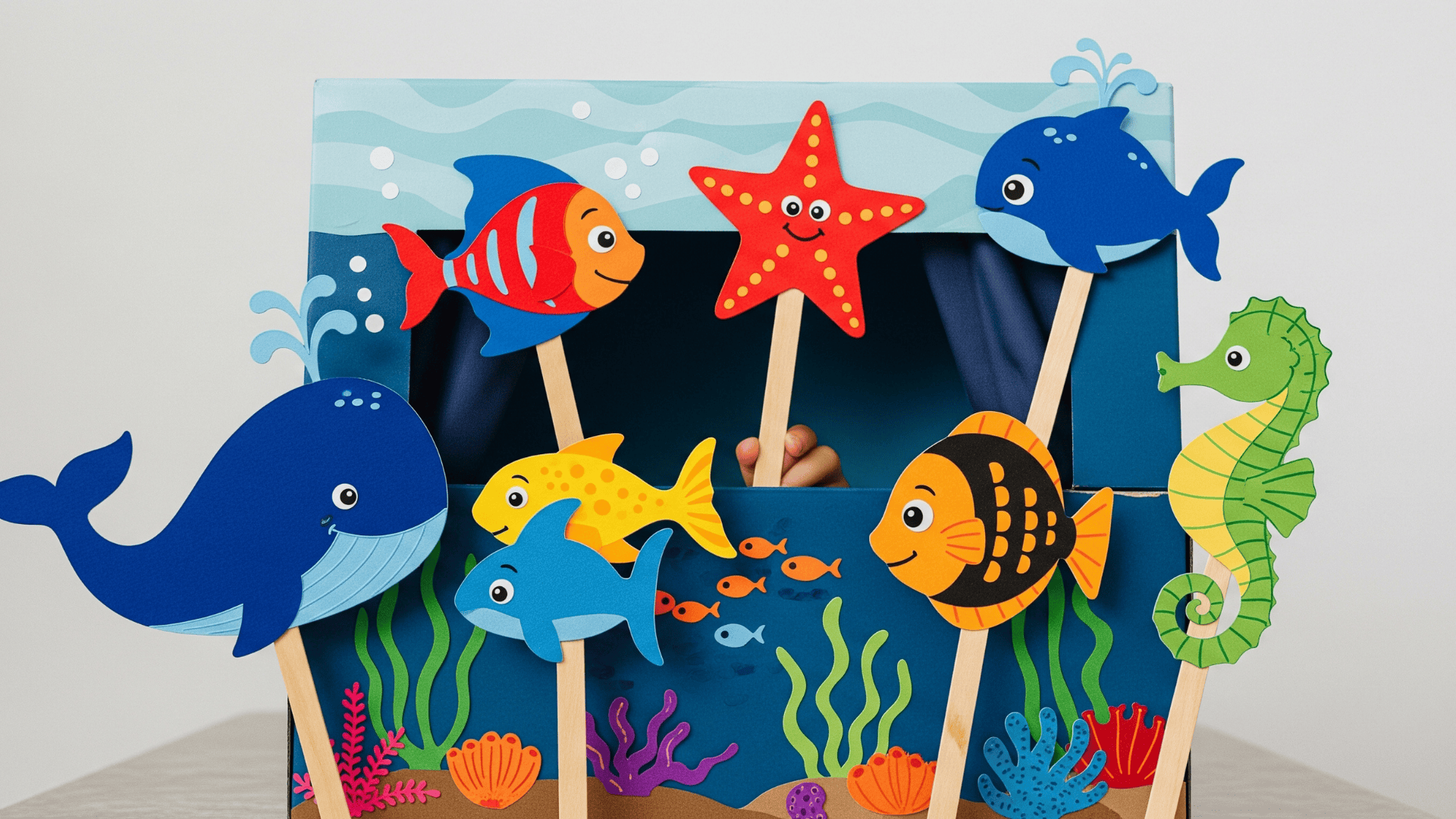
Color and cut out simple ocean animal shapes, then attach them to popsicle sticks.
Use for storytelling, songs, or puppet shows behind decorated box theaters.
Develops narrative skills and provides props for language activities.
Children bring characters to life through movement and voice.
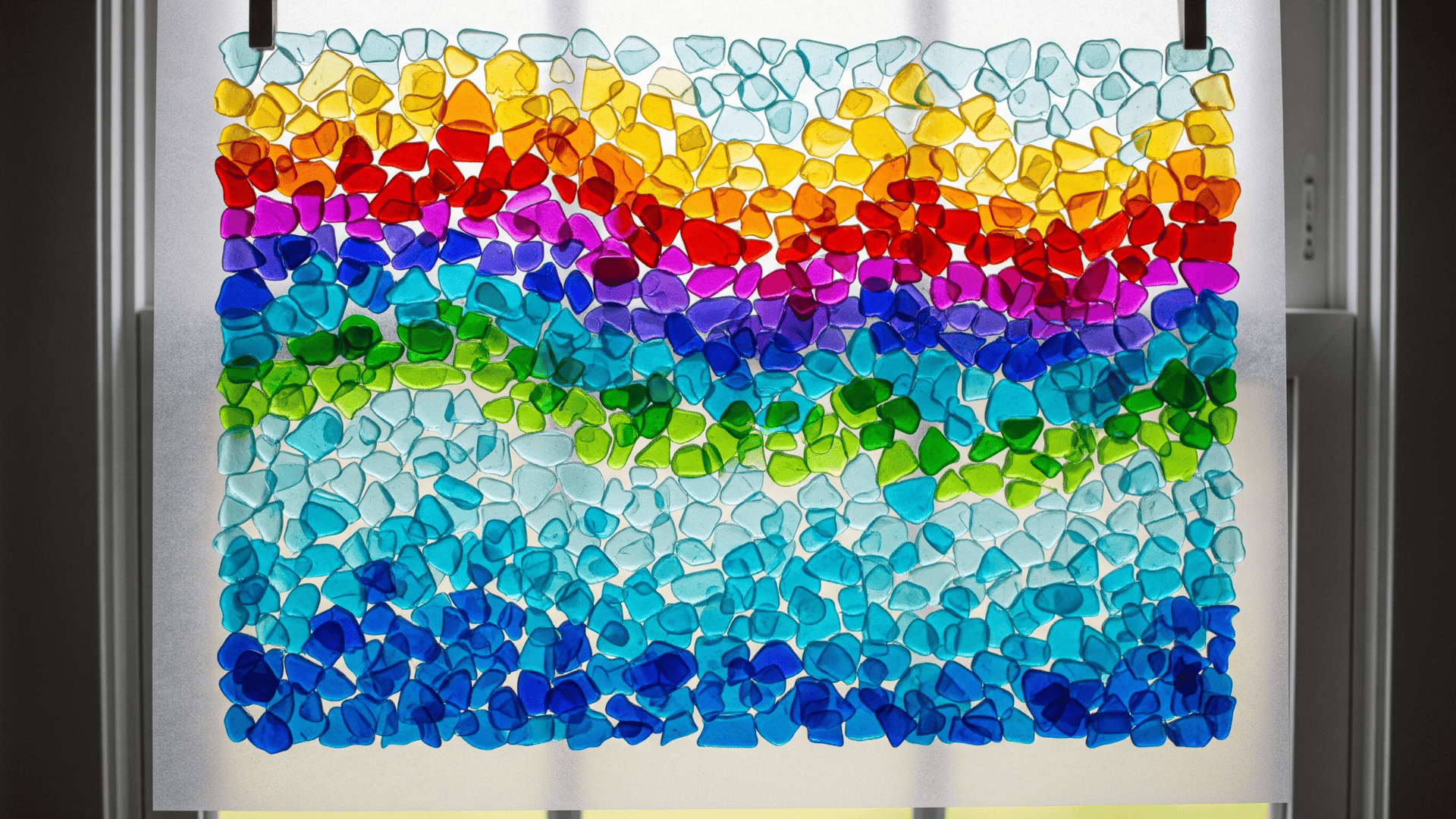
Arrange colored cellophane pieces on contact paper to resemble sea glass.
Cover with another sheet and hang in windows for translucent effects.
Discusses how real sea glass forms while examining color and transparency.
Creates beautiful window decorations that catch light.
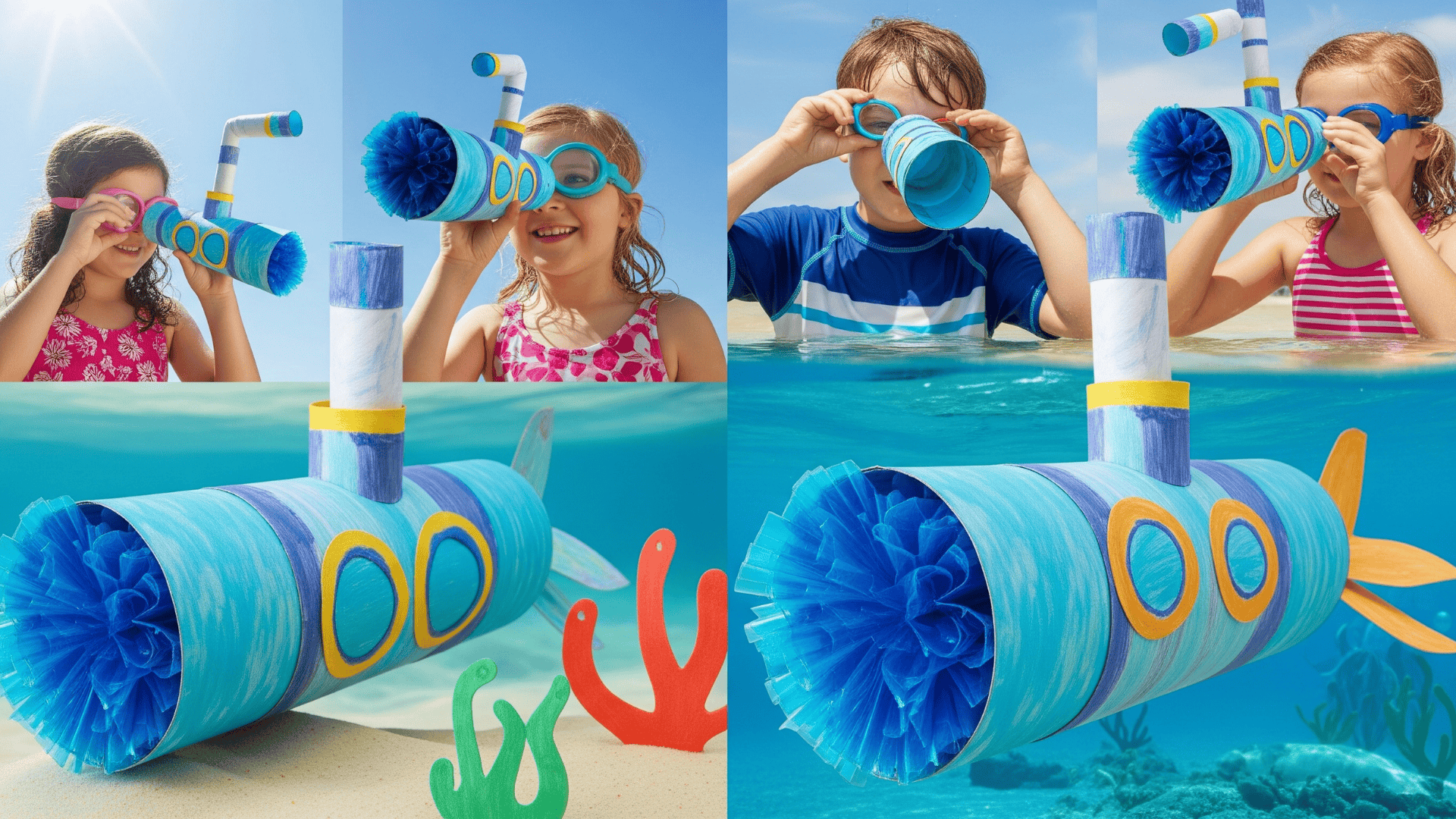
Decorate paper tubes as submarine periscopes and cover one end with blue cellophane.
Look through to see the world in “ocean blue” during exploration play.
A simple craft that enhances imaginative play and provides a new perspective.
Children pretend to explore the ocean depths.
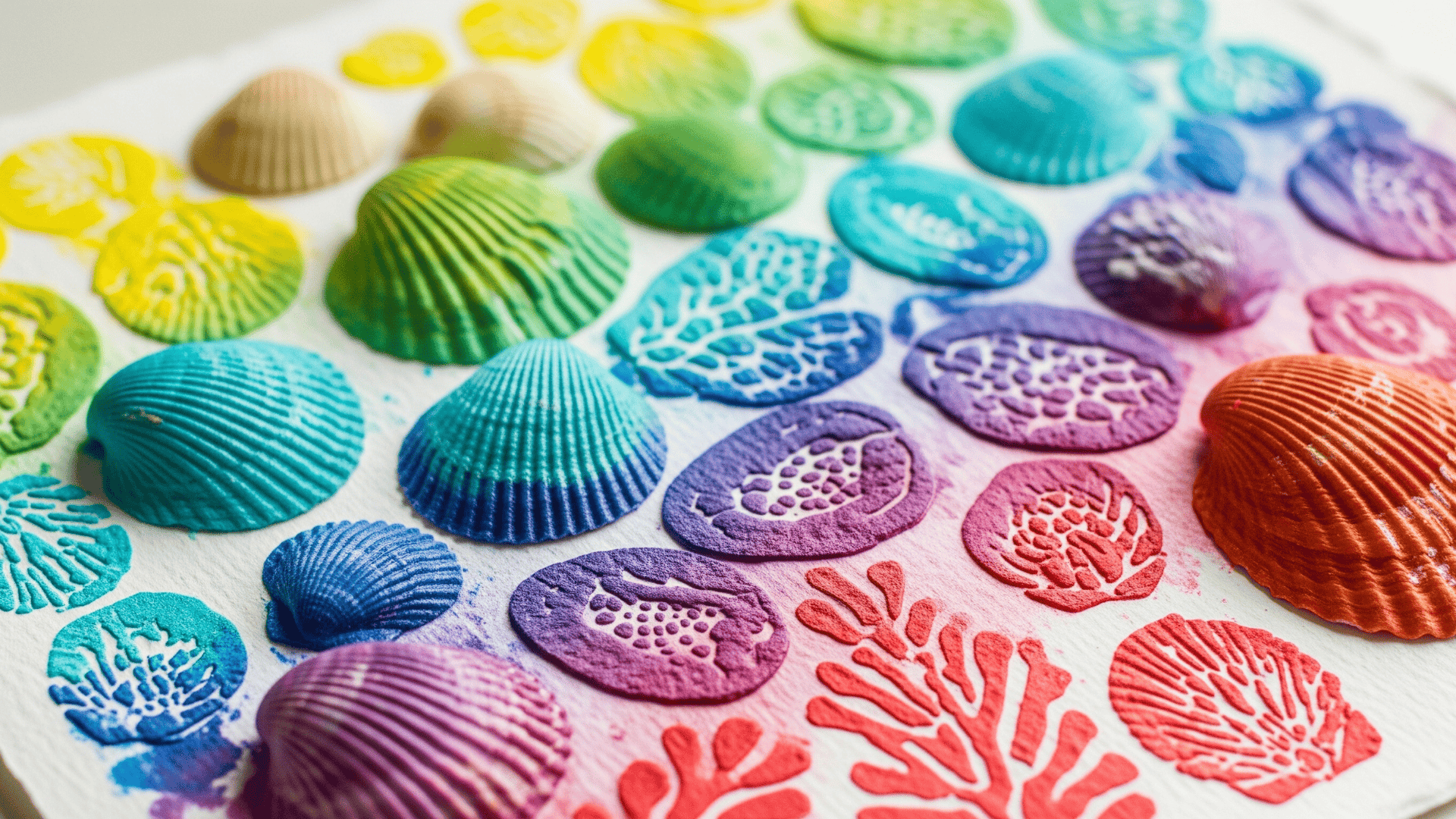
Press shells into paint pads or brush paint directly onto shells.
Stamp onto paper to create unique patterns and textures from different shell types.
Layer colors and sizes for complex compositions.
Studies natural patterns while developing printmaking skills.
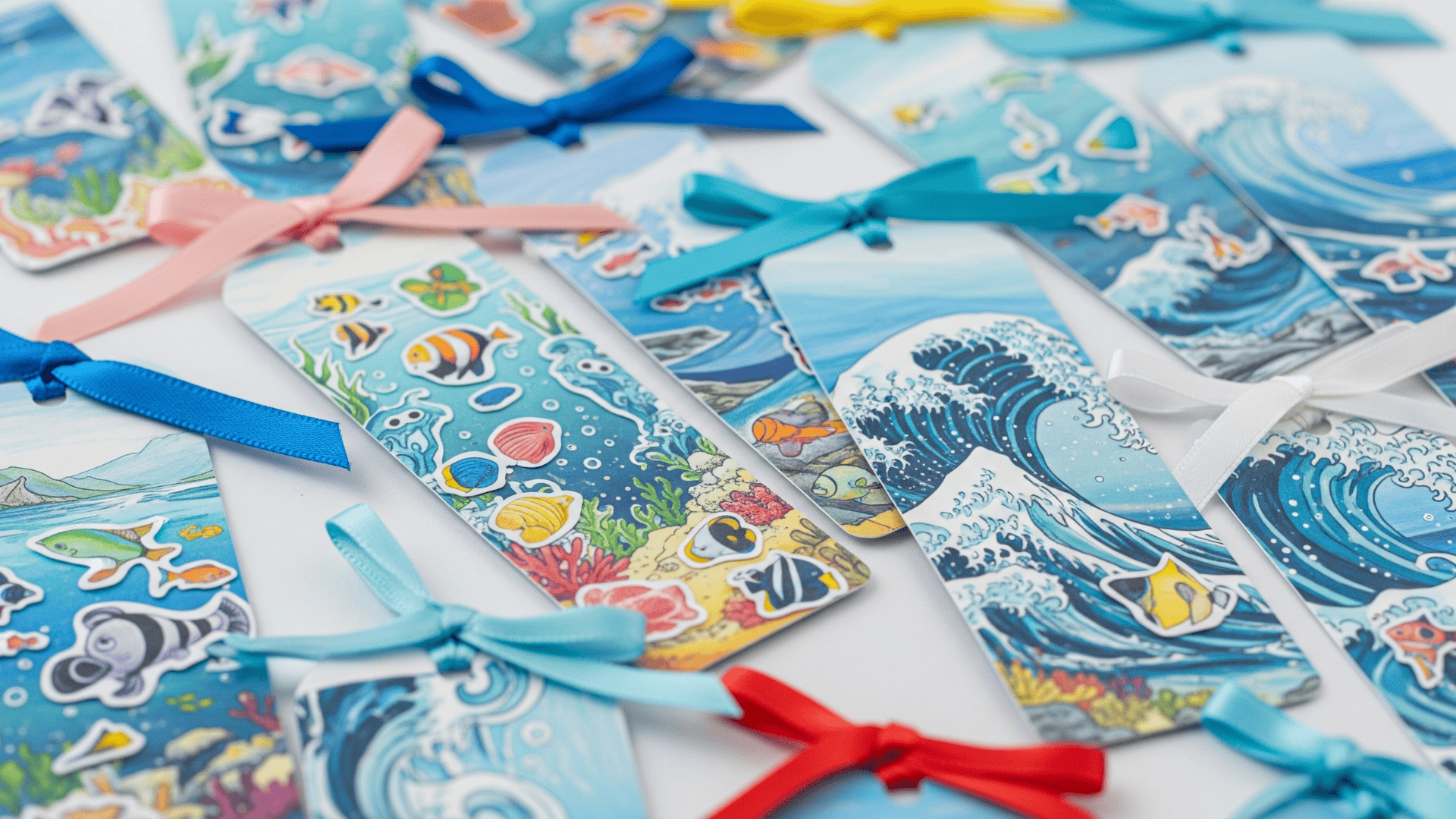
Create bookmarks with ocean scenes using stickers, drawings, and ribbon.
Laminate for durability and use as reading rewards or gifts.
Combining literacy with art while creating functional items that children can use.
Encourages reading with personalized ocean-themed markers.
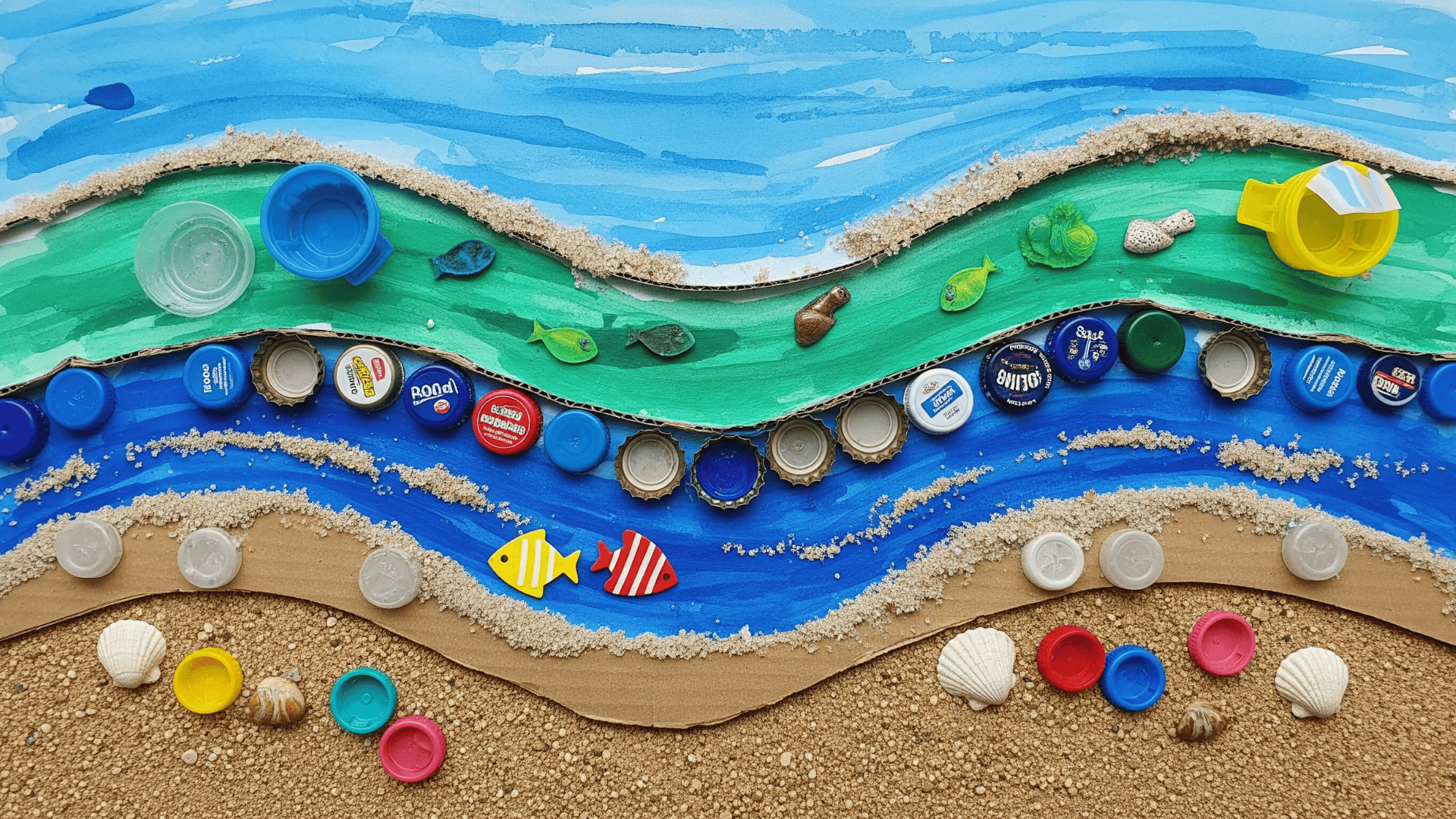
Use bottle caps, plastic containers, and cardboard to build 3D ocean scenes.
Paint everything in ocean colors and arrange into underwater dioramas.
Teaches environmental awareness through creative reuse of materials.
Children problem-solve to transform trash into ocean treasures.
Get those little bodies moving with ocean-themed games and songs!
Physical activity helps preschoolers burn energy while learning.
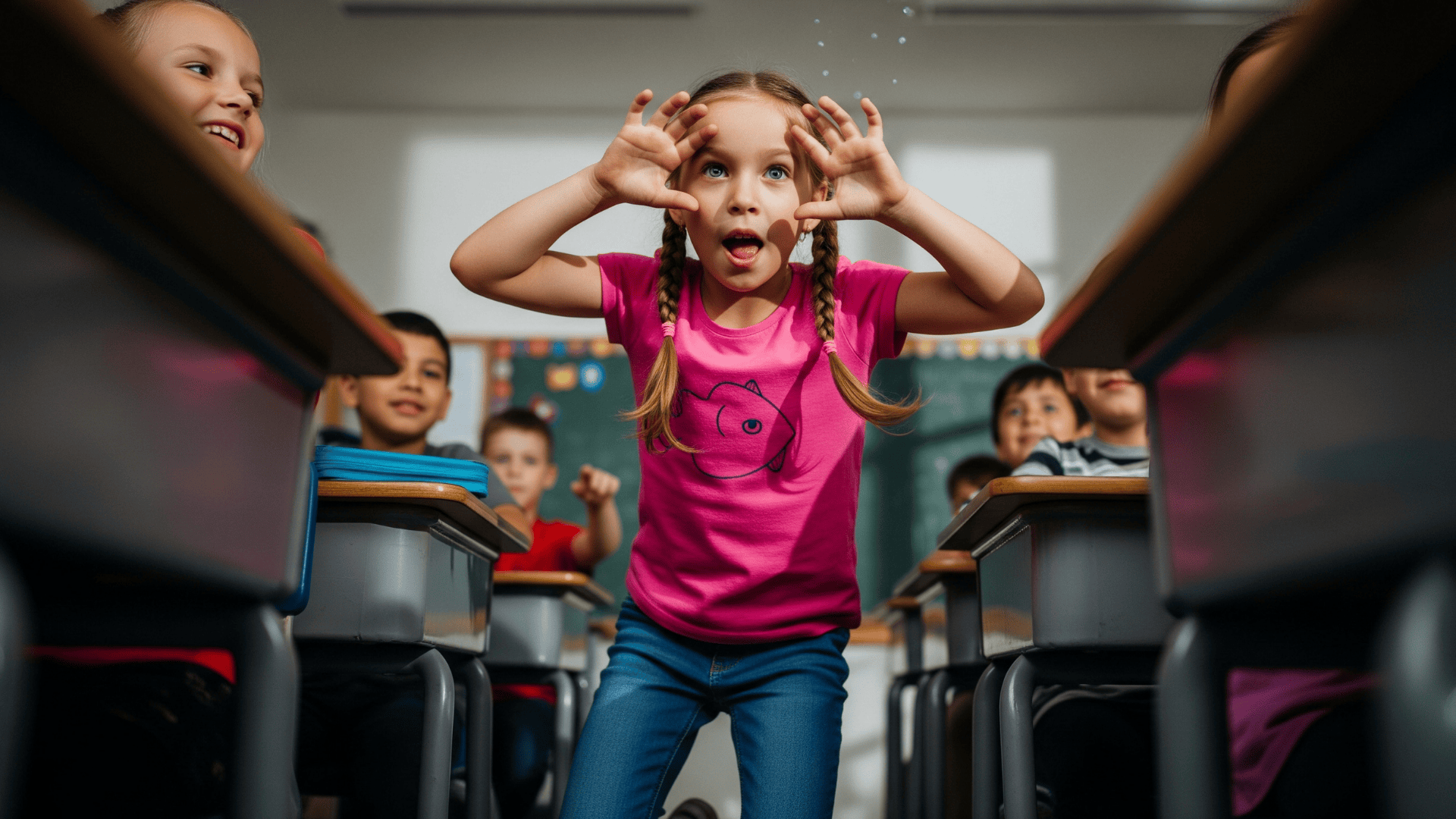
Call out sea creatures and have children move accordingly: swim like fish, scuttle like crabs, or float like jellyfish.
Add ocean music to enhance the experience and make movements more fluid.
Builds body awareness, following directions, and creative expression.
Perfect for burning energy on rainy days.
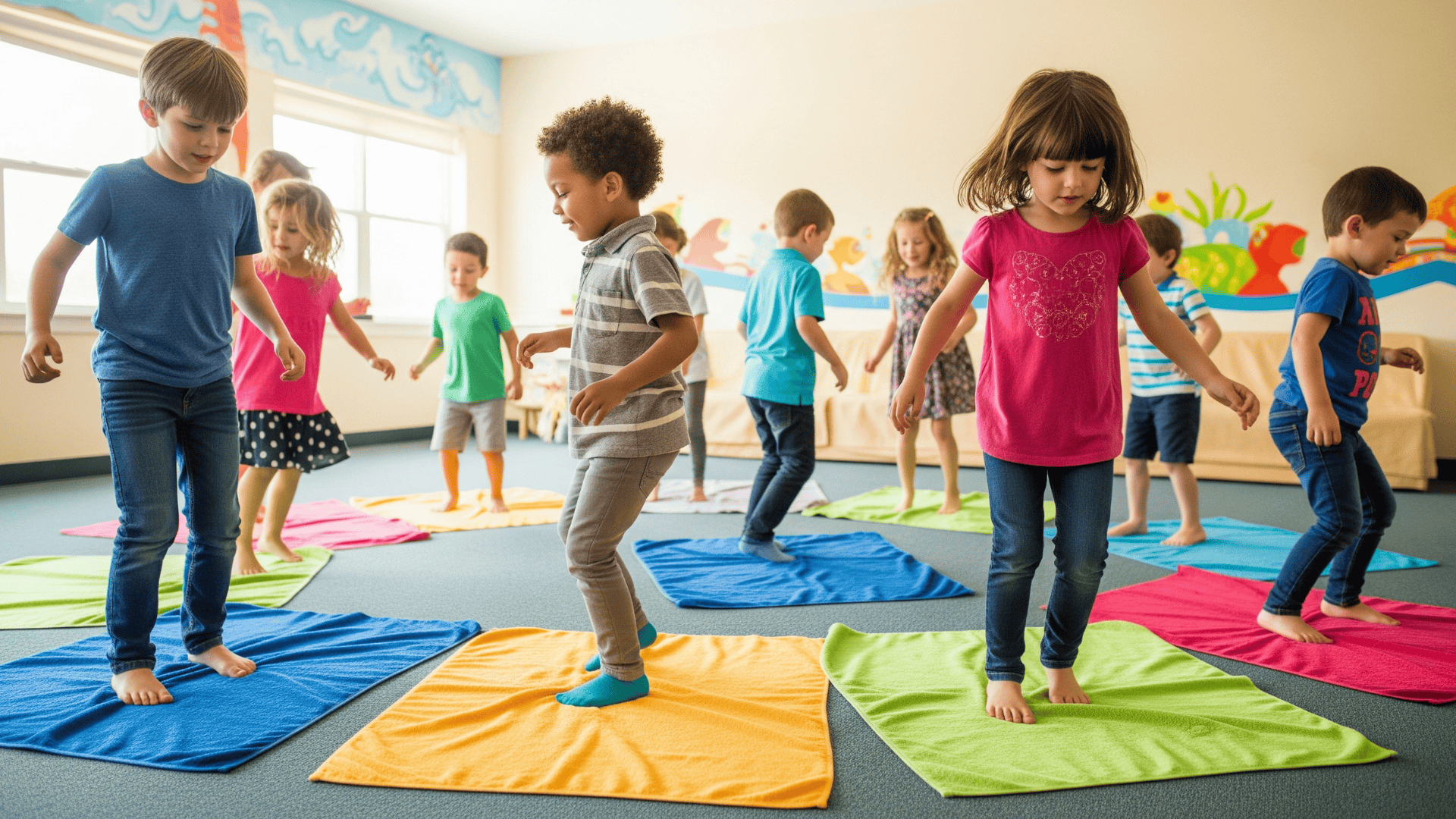
Place towels or carpet squares around the room as “islands” and play ocean sounds.
When music stops, children find an island to stand on, removing one each round.
Teaches spatial awareness and listening skills while providing movement.
Add challenges like hopping to islands on one foot.
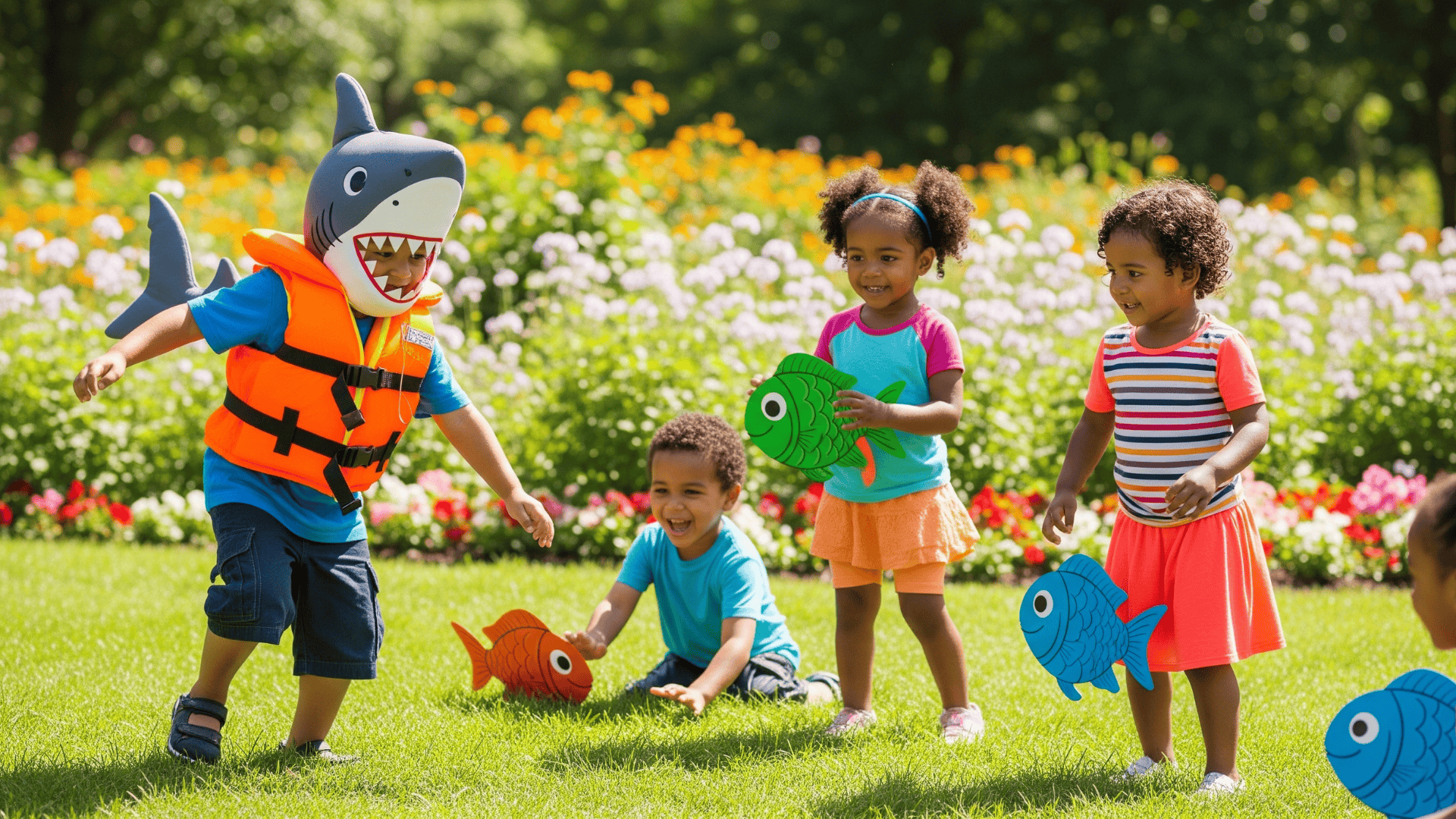
One child becomes the shark while others are fish swimming around.
Tagged fish freeze until another fish swims completely around them to unfreeze.
Builds social cooperation and spatial awareness through movement.
Encourages helping behaviors and teamwork.
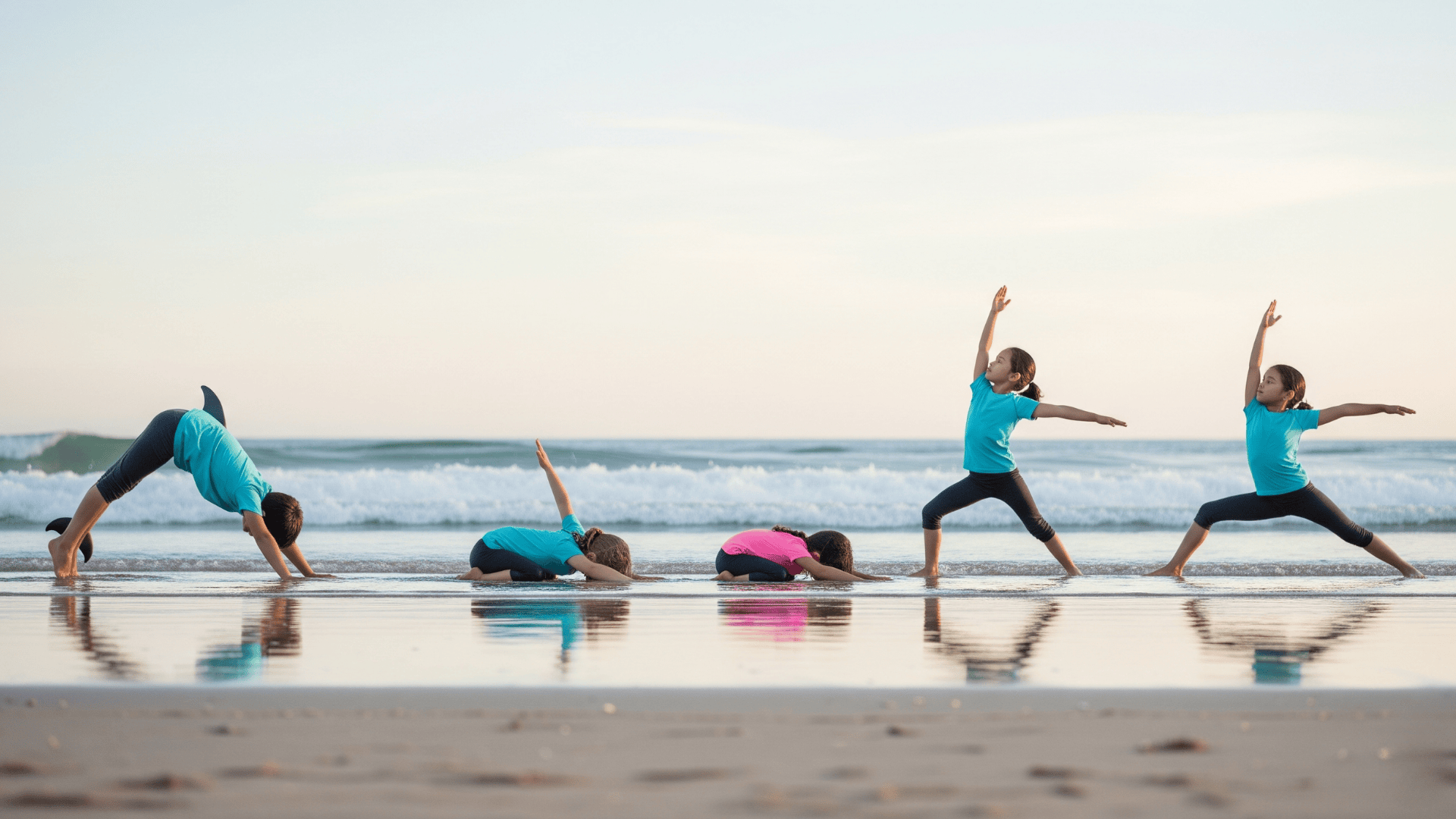
Teach poses like dolphin (downward dog), shell (child’s pose), and starfish (wide stance).
Create flowing sequences that tell ocean stories through movement.
Develops balance, flexibility, and body control while promoting calm focus.
Perfect for transitions or settling activities.
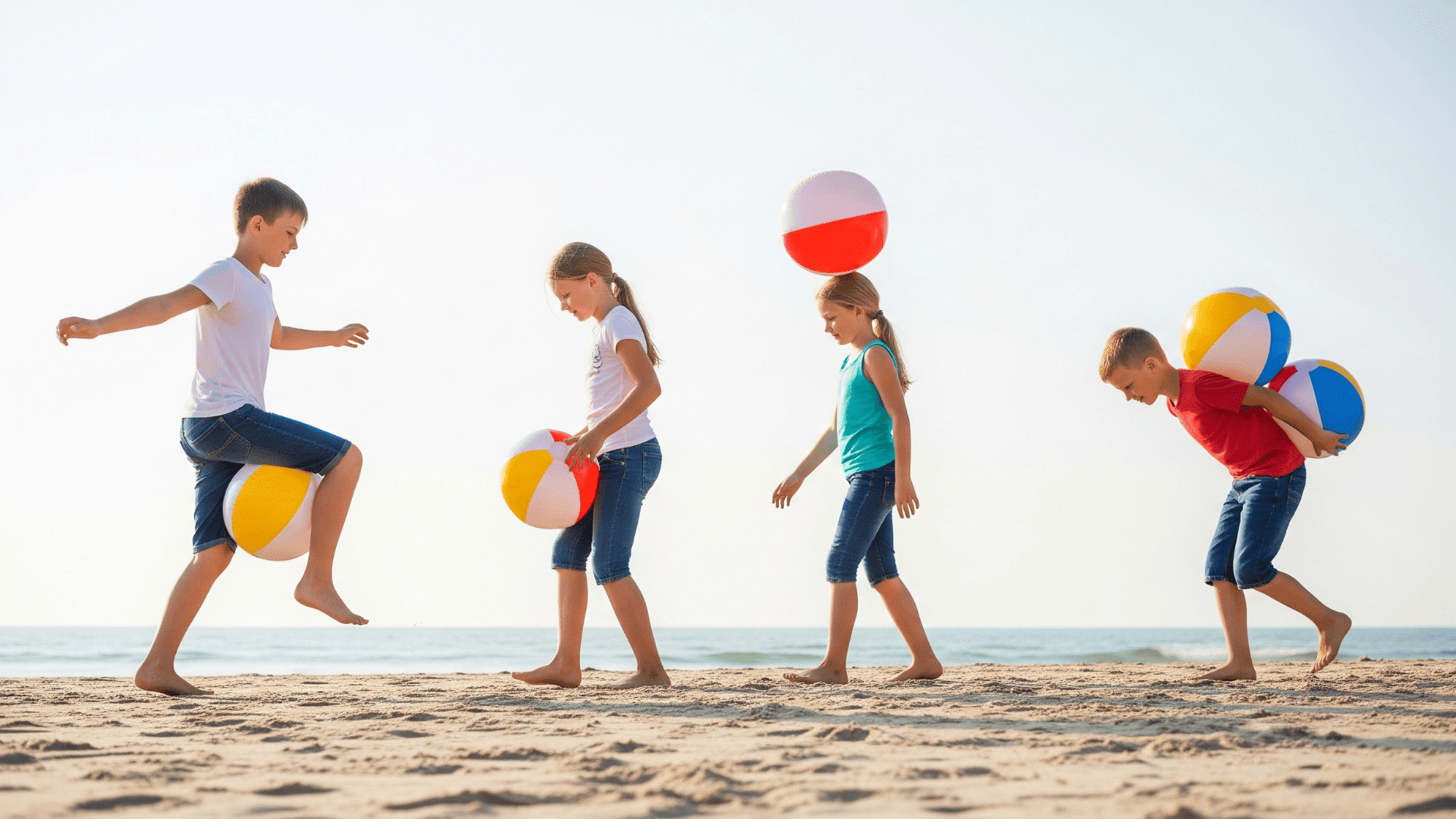
Challenge children to balance beach balls on different body parts while moving slowly.
Try walking with balls between your knees or balancing on your head or back.
Develops coordination and body control through focused movement.
Creates lots of giggles when balls drop.
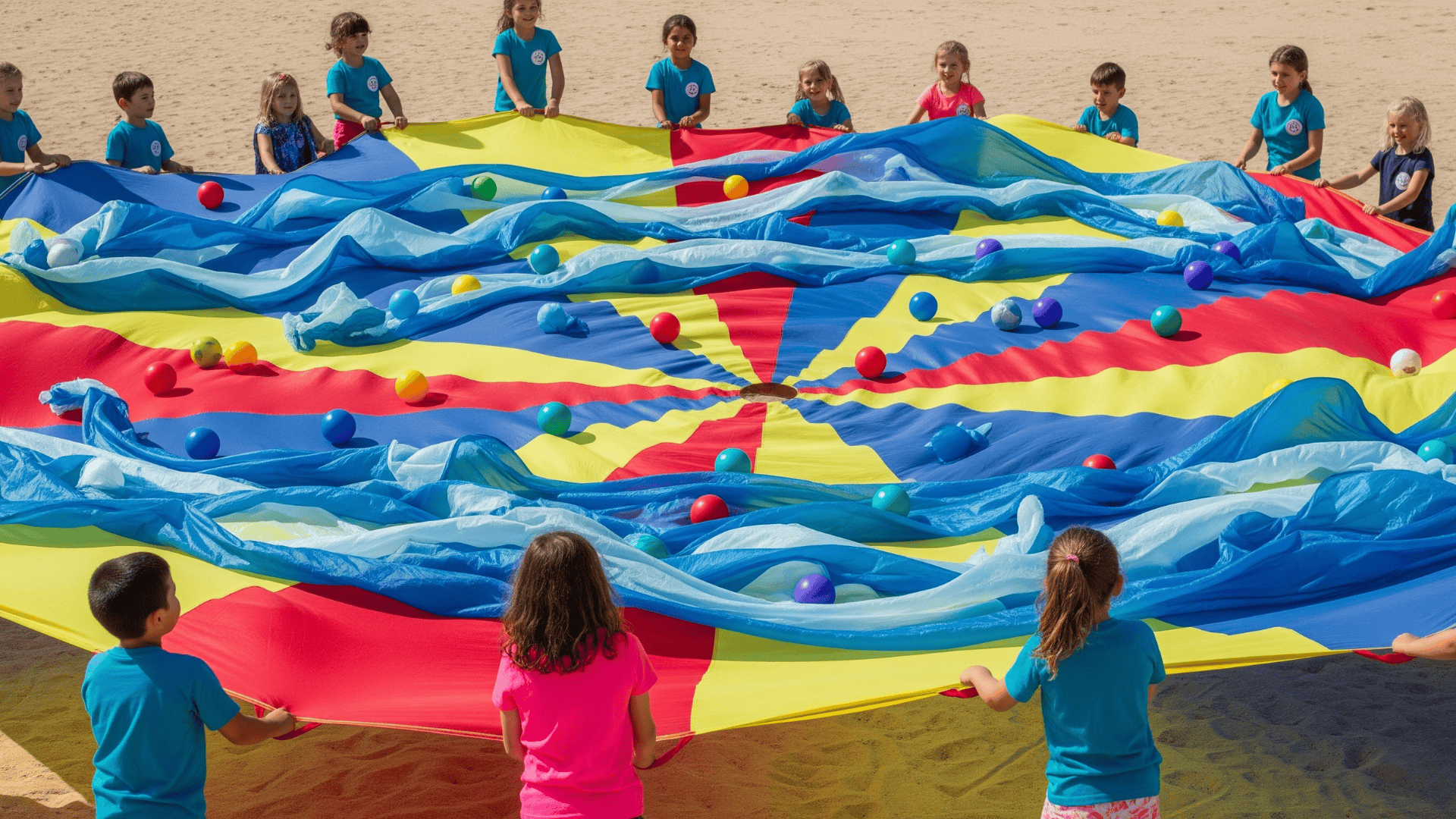
Use a large parachute to create ocean waves with group cooperation.
Place lightweight balls on top as “sea creatures” and work together to keep them on.
Teaches teamwork and following group rhythms while providing upper body exercise.
Add specific wave patterns like gentle ripples or storms.
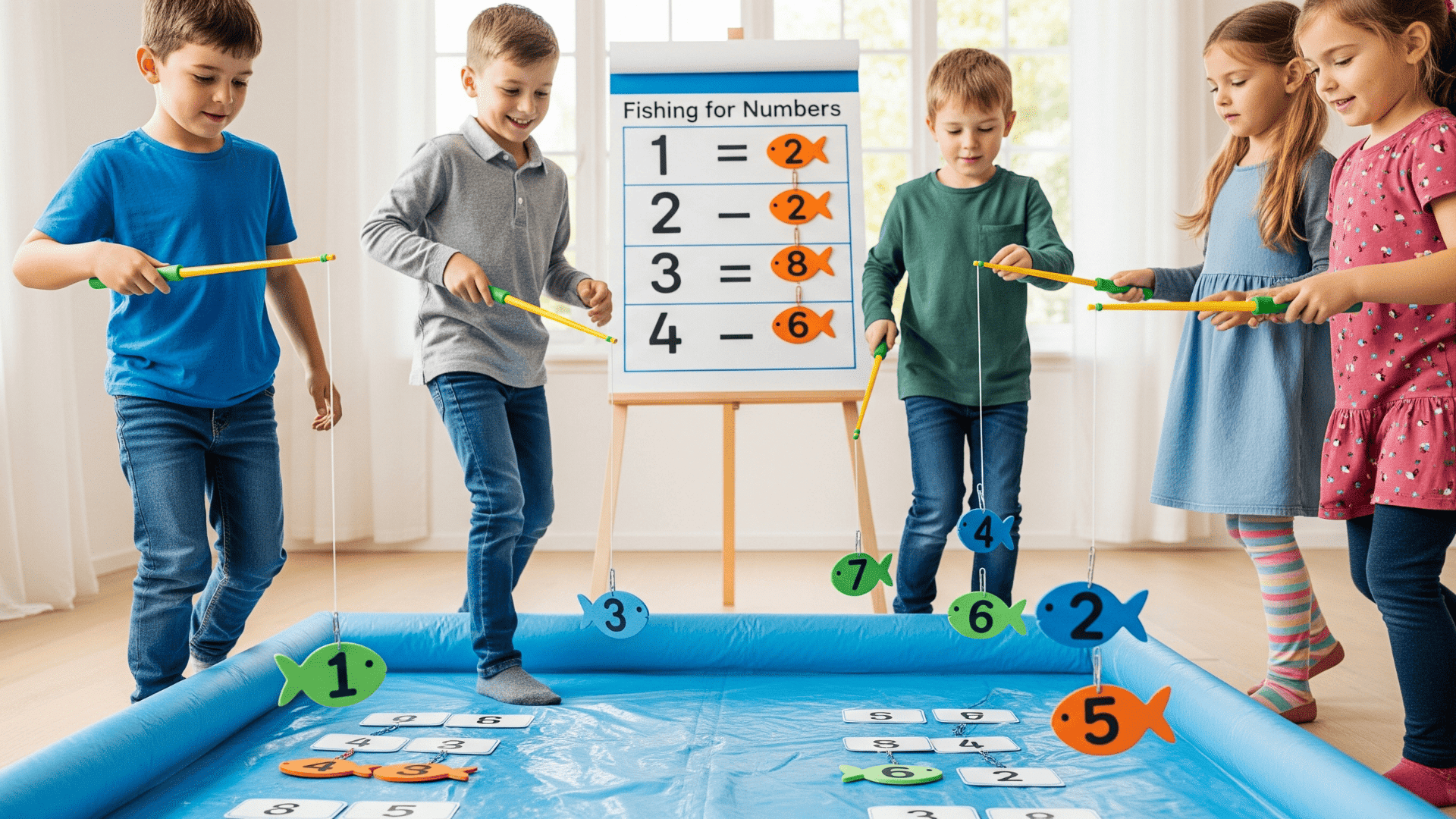
Attach paperclips to numbered foam fish and use magnetic fishing rods.
Call out math problems, and children catch the answer fish while moving around the “pond.”
Combines gross motor movement with number recognition and simple addition.
Makes math practice active and engaging.
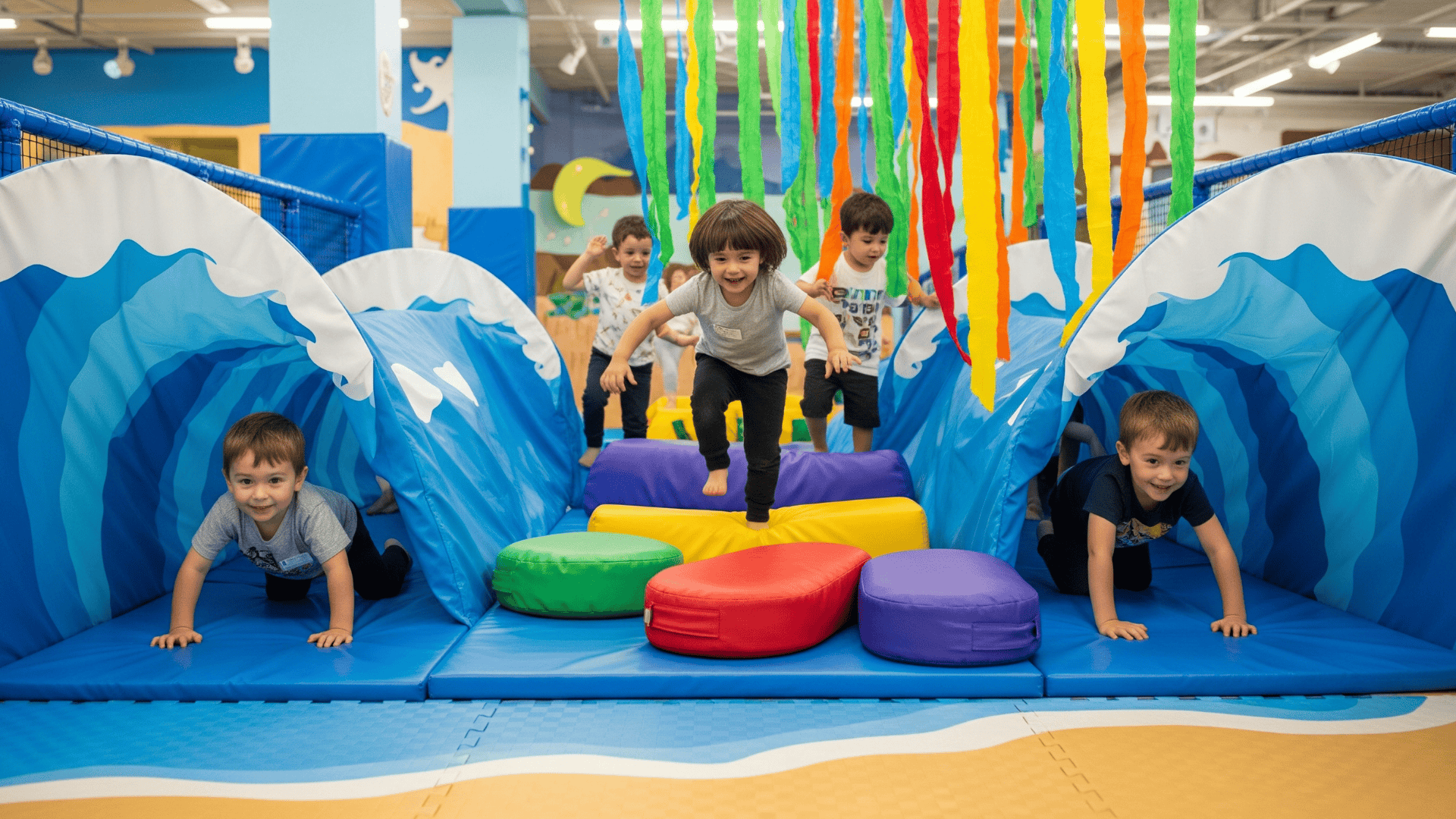
Create stations: crawl under “wave” sheets, jump over “rock” pillows, swim through “seaweed” streamers.
Time runs or just enjoy the movement challenge without competition.
Builds gross motor skills and follows sequential directions.
Change obstacles weekly for new challenges.
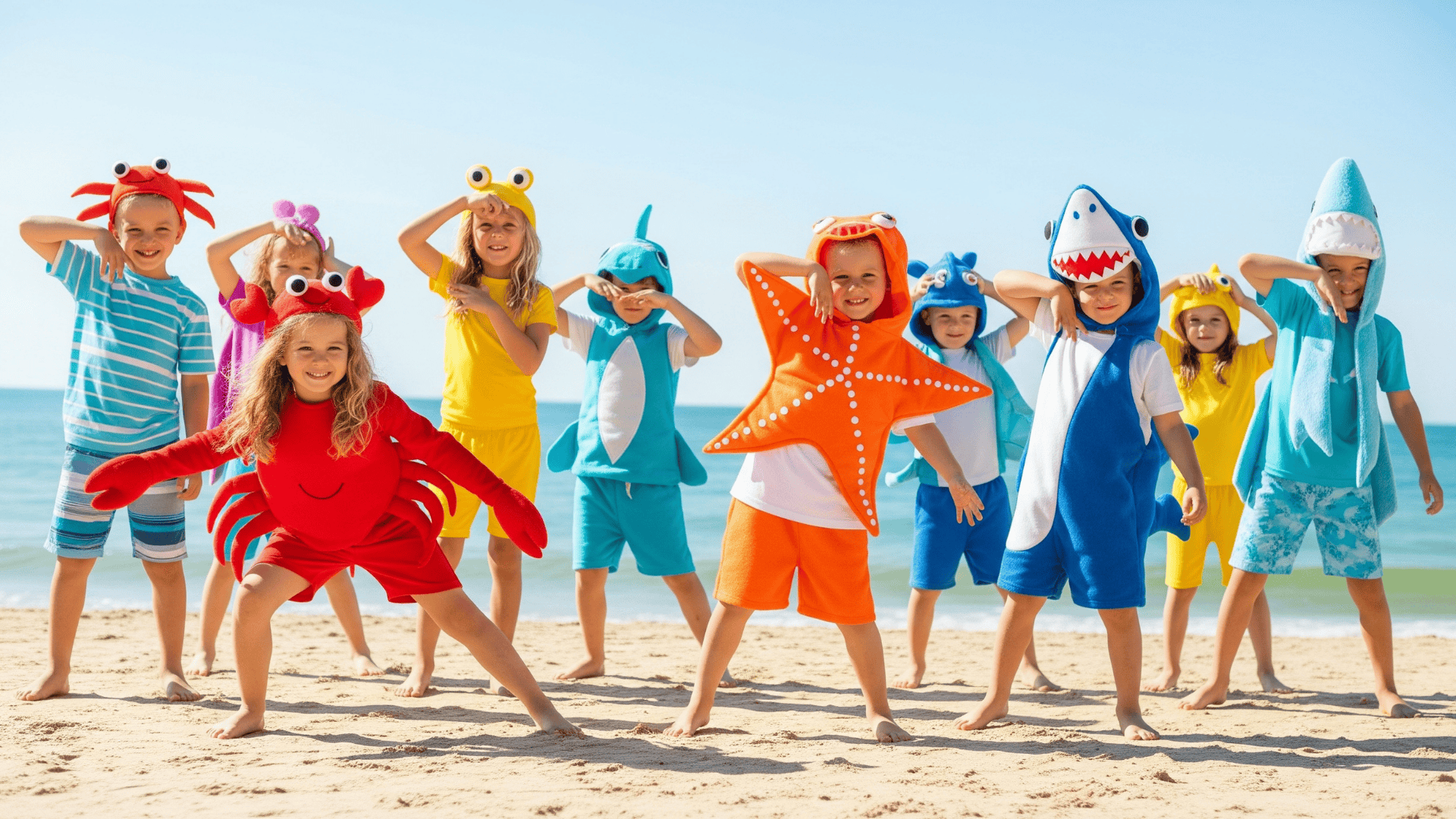
Play ocean sounds and call out animals when the music stops for freeze poses.
Hold positions until music restarts, practicing balance and muscle control.
Develops listening skills, creative interpretation, and impulse control.
Children love showing their unique animal interpretations.
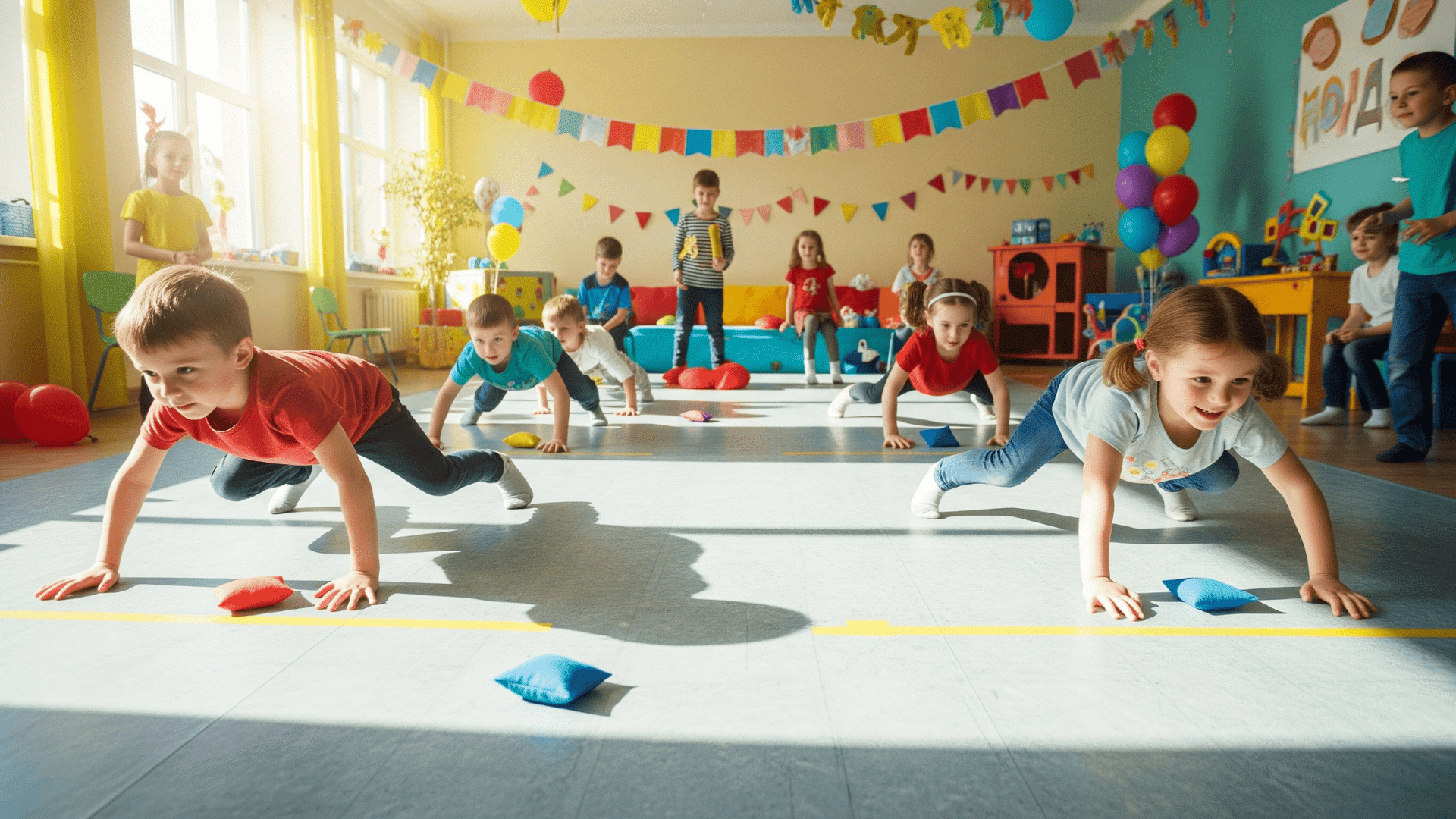
Teach proper crab walk position and have races across the room.
Create relay teams or individual challenges like carrying bean bags while crab walking.
Builds core strength and coordination while being silly fun.
Add obstacles to increase difficulty.
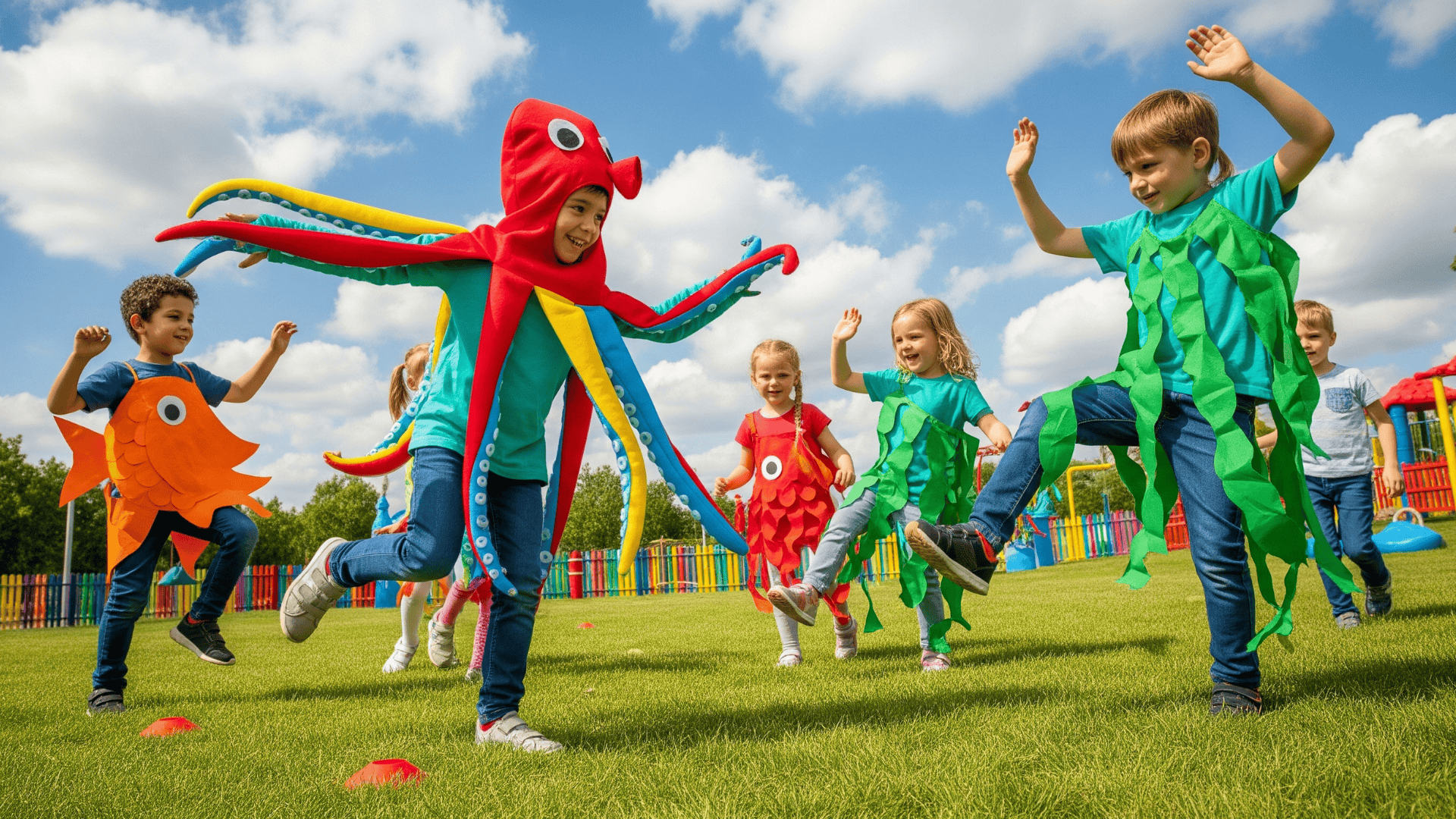
The center child is an octopus with “tentacles” (arms) trying to tag a passing fish.
Tagged fish become seaweed, waving arms to tag others while keeping one foot planted.
Develops strategic thinking and spatial awareness through movement.
The game naturally increases in difficulty.
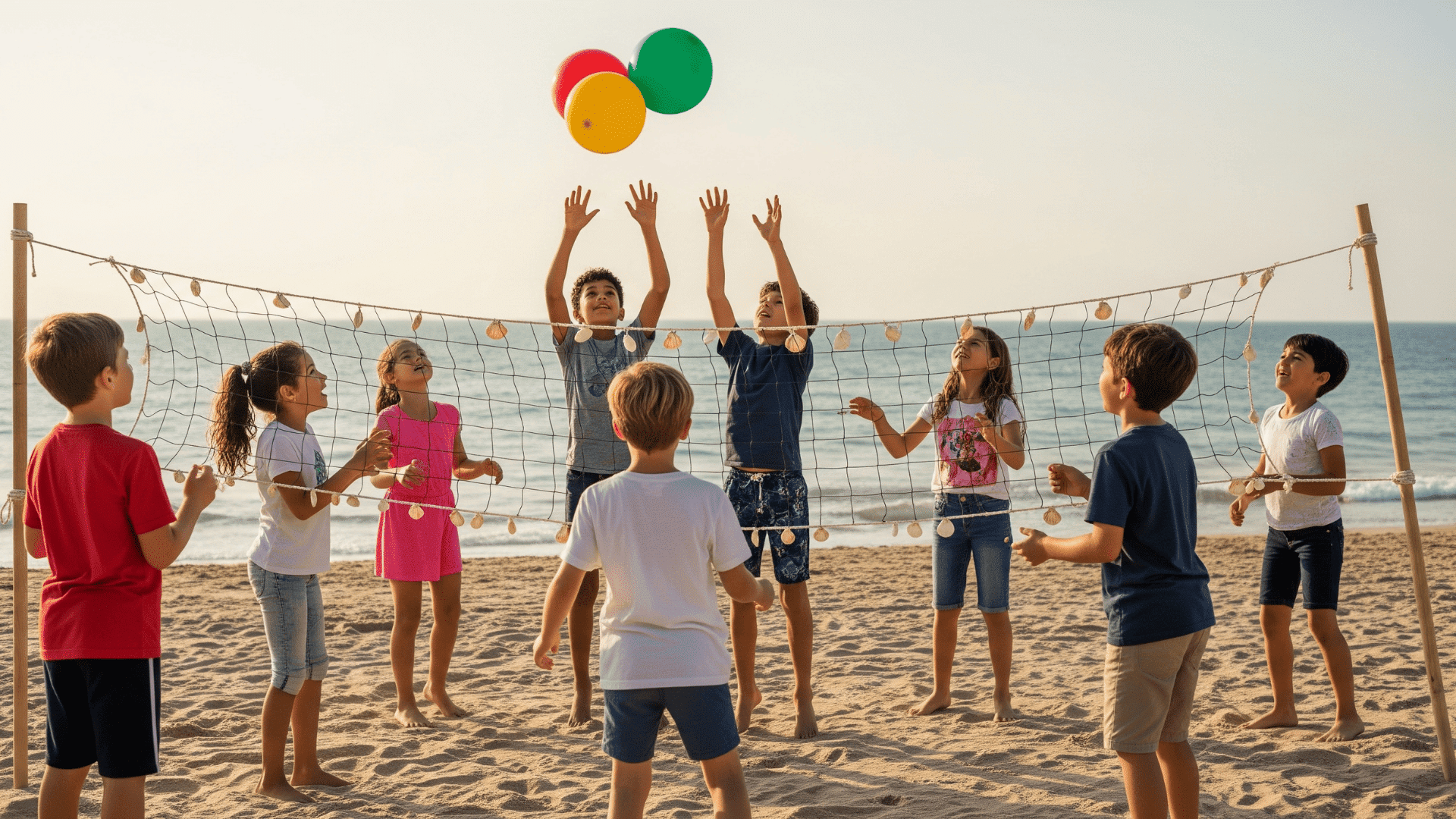
Use a balloon as a beach ball with children working cooperatively to keep it airborne.
Count hits together or play gentle volleyball over a rope “net.”
Develops hand-eye coordination and teamwork without competitive pressure.
Perfect for all skill levels.
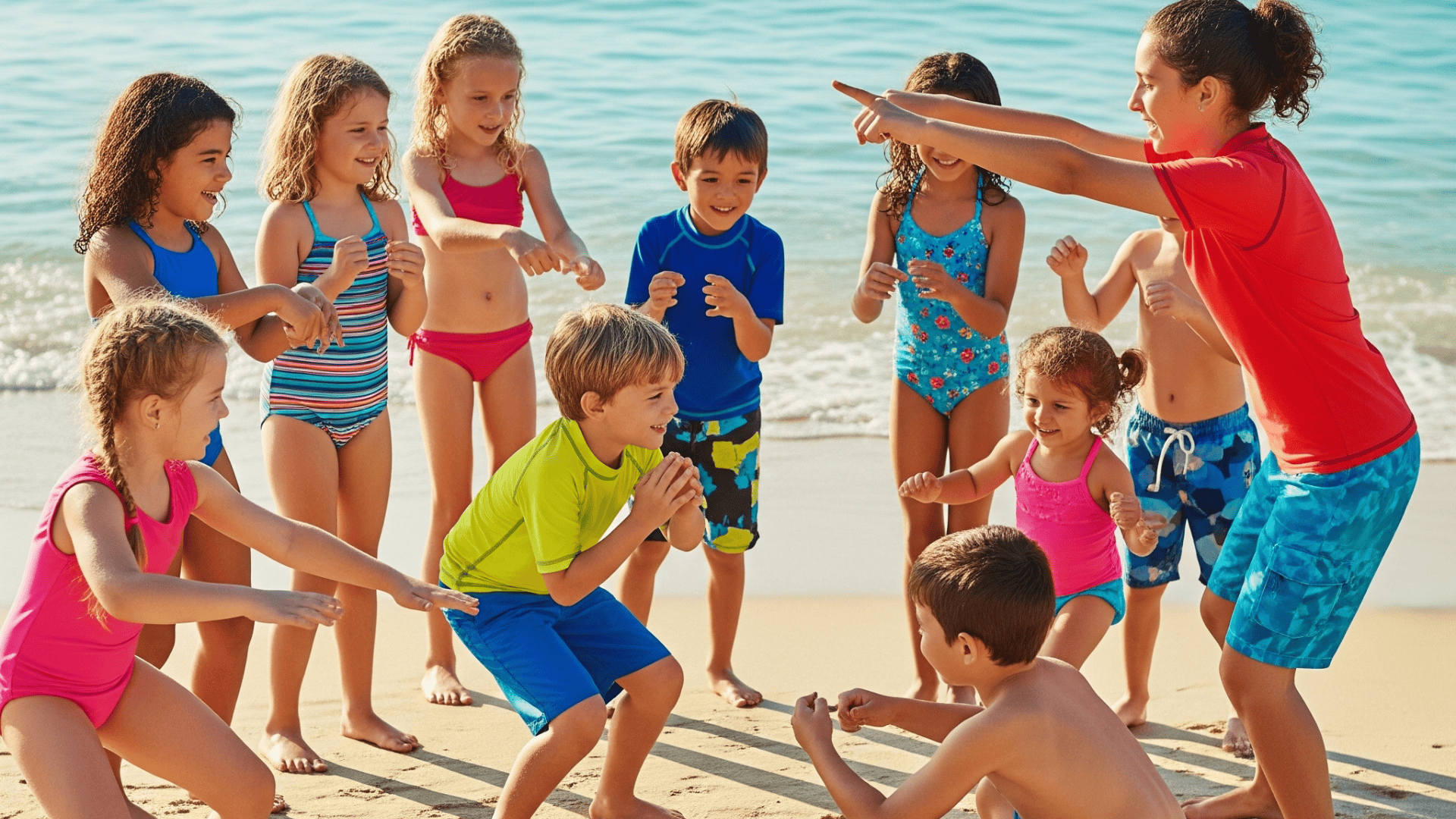
Play traditional Simon Says with ocean-themed commands and movements.
“Simon says swim like a sea turtle” or “Simon says dig for clams.”
Practice listening for details while moving bodies in creative ways.
Builds impulse control and following complex directions.
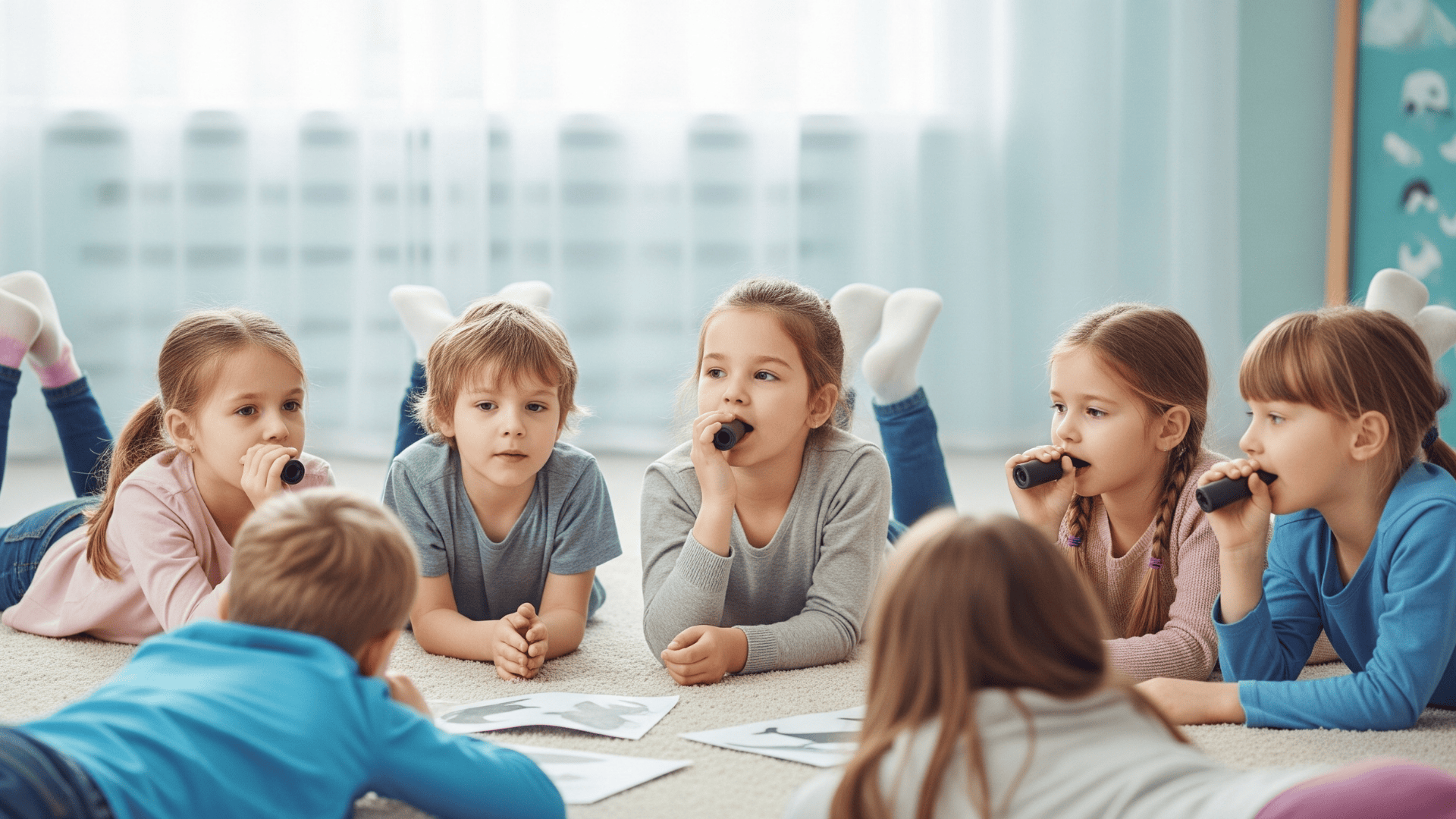
Children lie on their backs, making deep whale sounds and trying to communicate.
Create whale conversations across the room using only vocalizations.
Develops breath control and creative sound exploration while being calming.
Discuss how real whales communicate underwater.
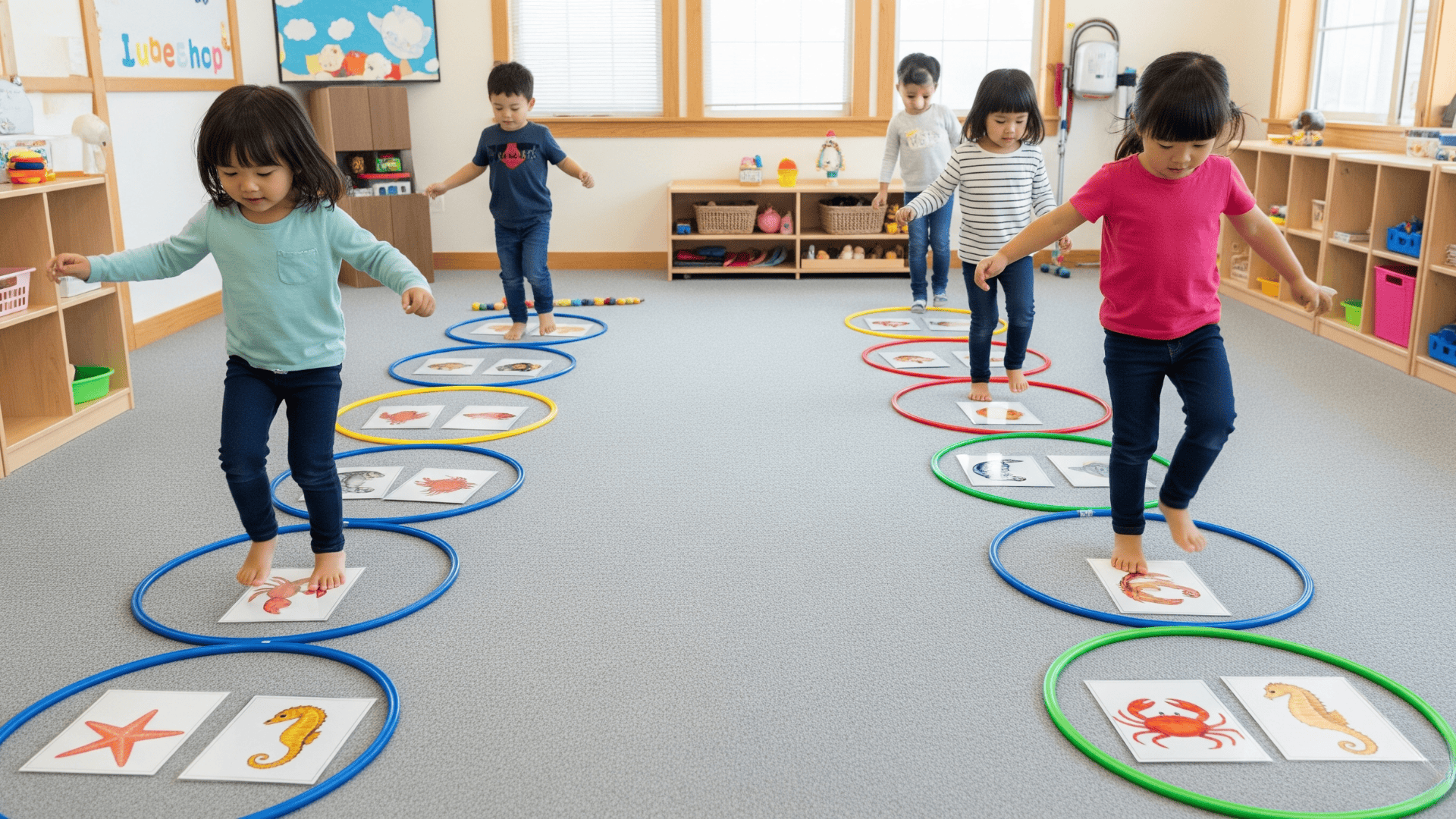
Create “tide pools” with hula hoops containing picture cards of sea creatures.
Children hop between pools and name or act out creatures found there.
Combining learning about ocean animals with gross motor movement.
Adjust the distance between pools for difficulty.
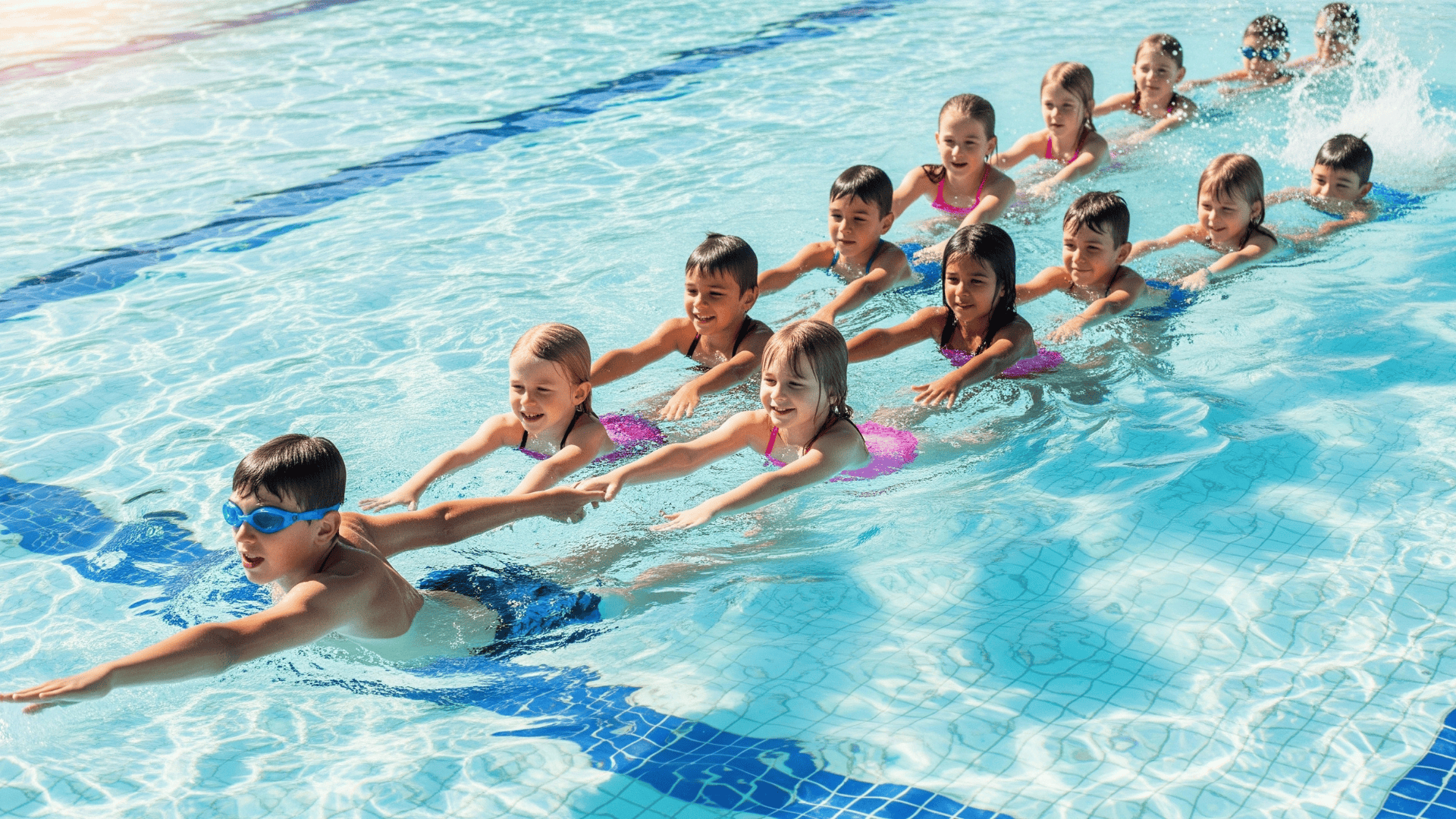
Children hold hands in line and follow the leader’s swimming movements without breaking the chain.
Practice moving as a unified group, like real fish schools, for safety.
Develops cooperation and spatial awareness while following the leader.
Switch leaders frequently for fairness.
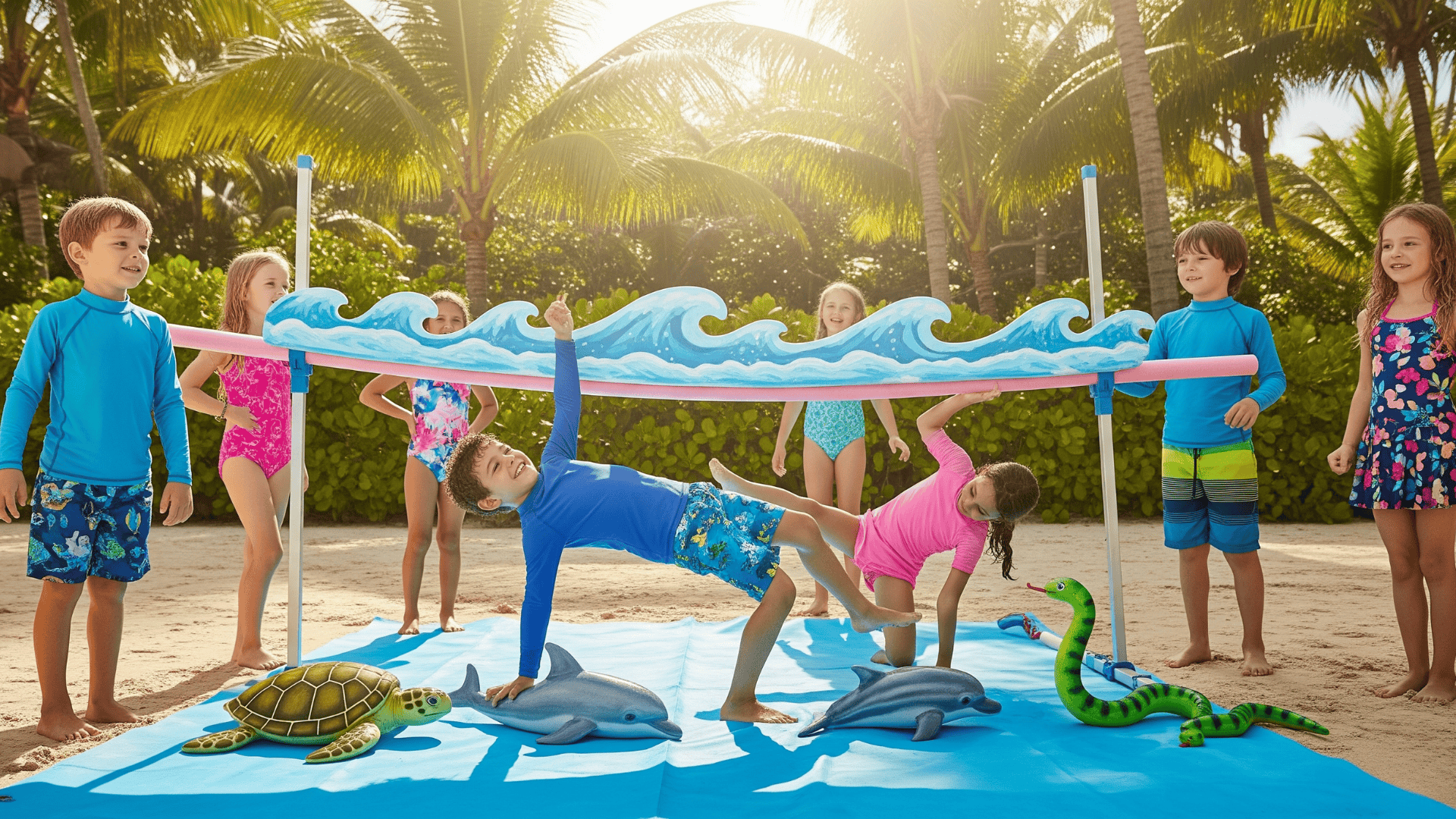
Play limbo with ocean music using a pool noodle as a limbo bar.
Children move under a “wave” using different ocean animal movements each round.
Builds flexibility and creative problem-solving for getting lower.
Celebrate effort over winning.
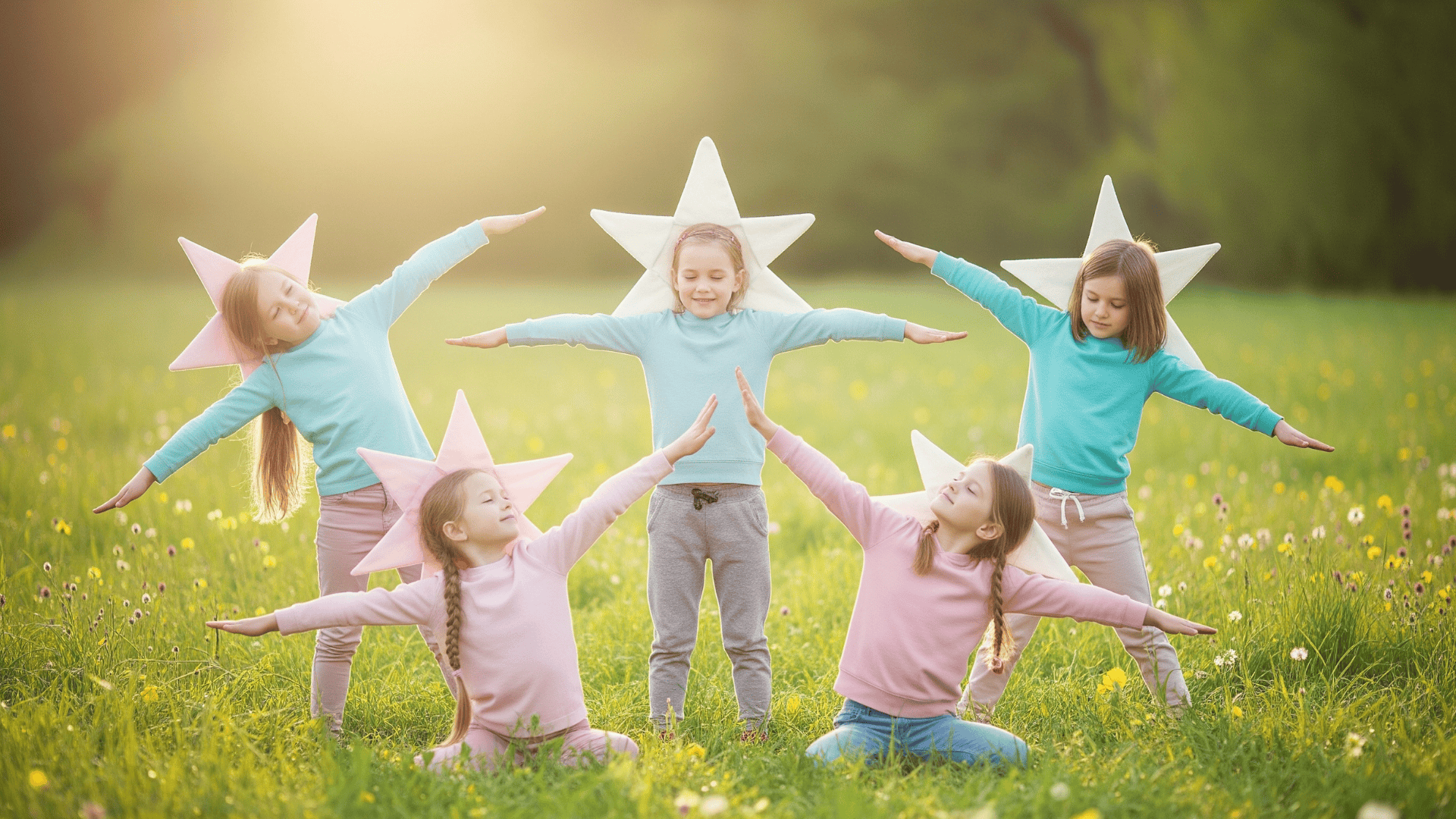
Children spread into star shapes and stretch each “arm” in different directions.
Count five points while holding stretches and breathing deeply.
Develops body awareness and flexibility while reinforcing starfish facts.
Great for morning circle time.
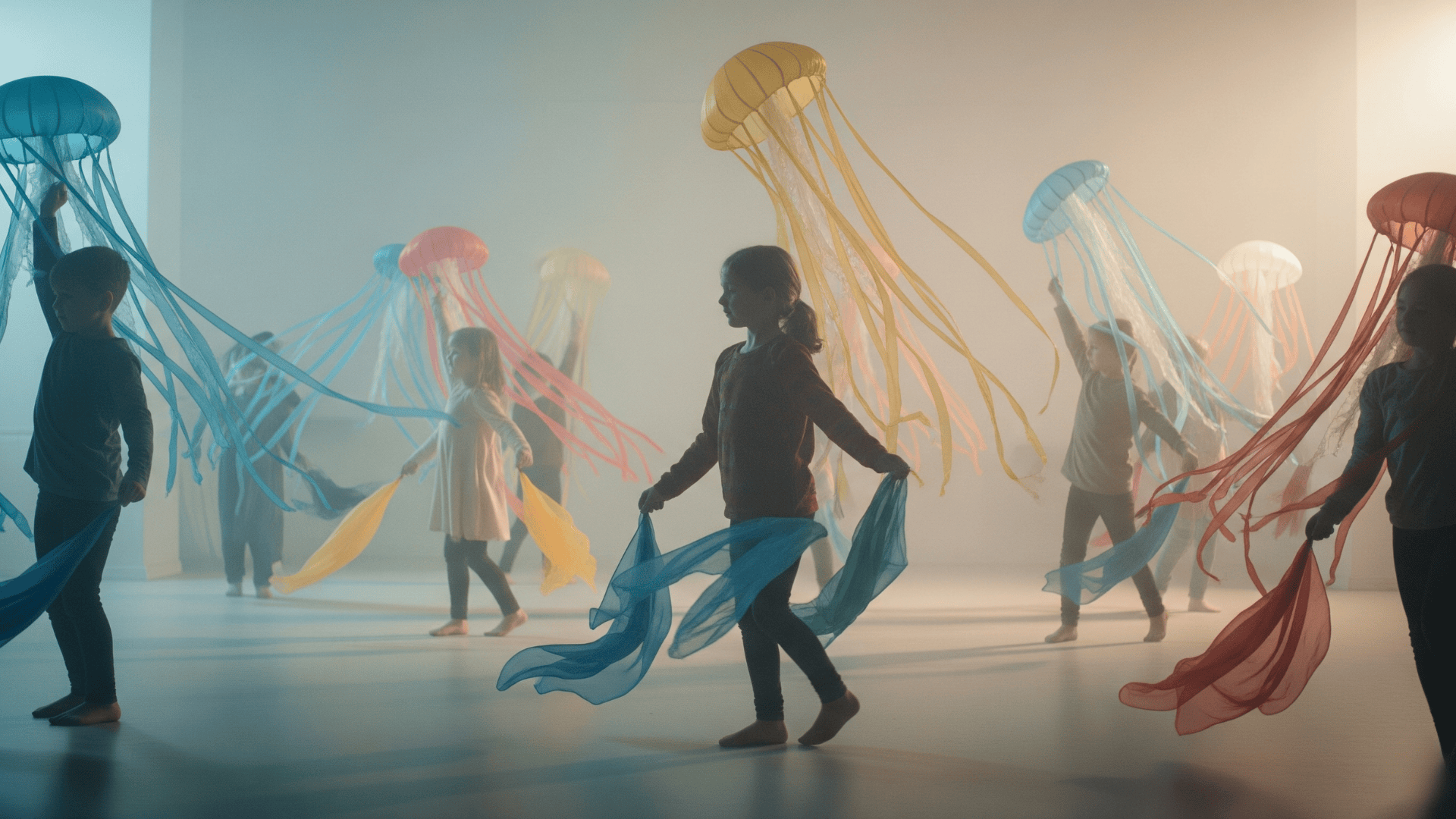
Give children scarves or ribbons to wave as tentacles while moving to calm music.
Float like jellyfish in currents.
Develops graceful movement and spatial awareness while being naturally calming.
Perfect for teaching about ocean currents.
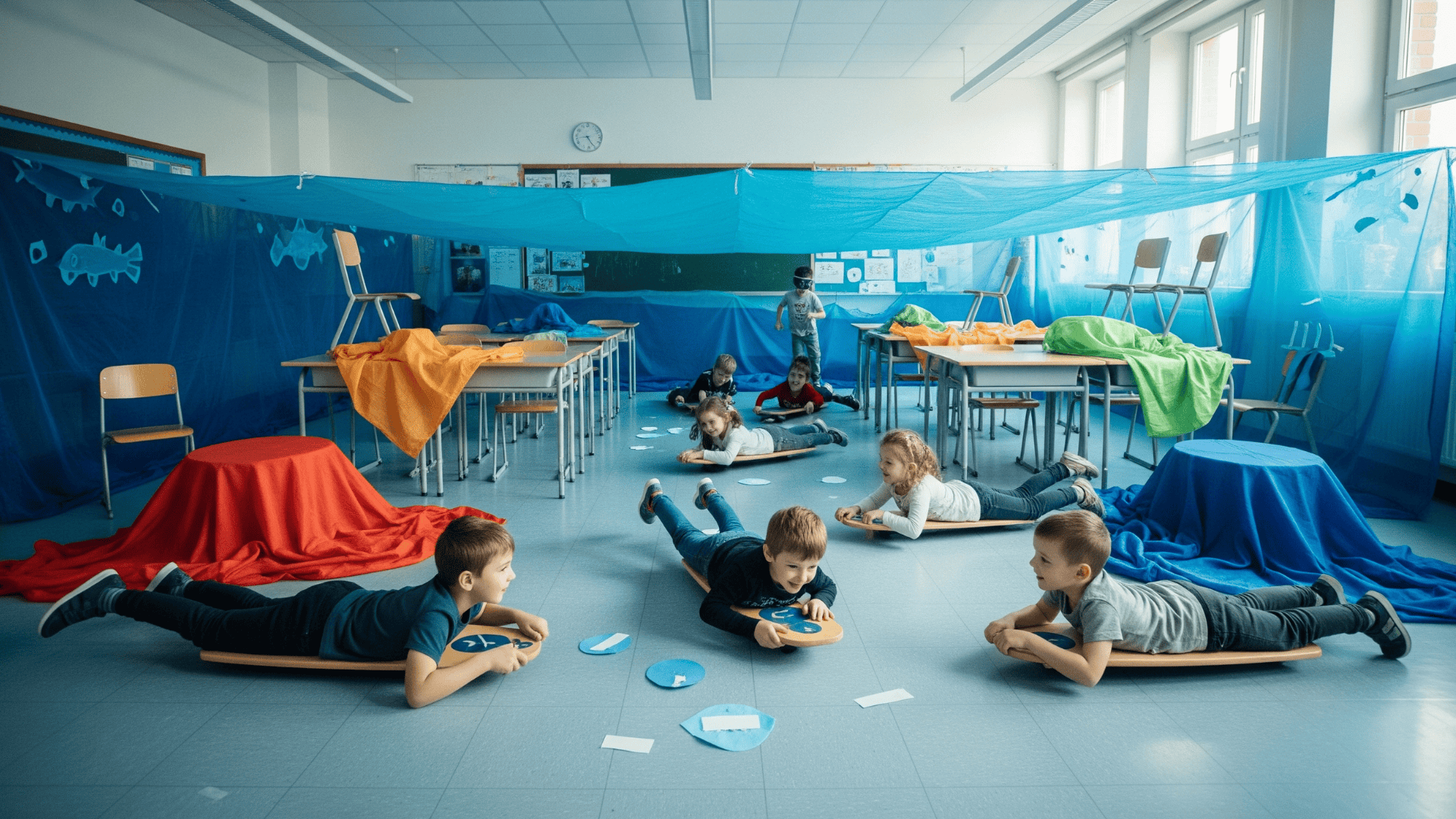
Children lie on scooter boards, propelling with arms like submarines.
Guide around “underwater obstacles” or deliver messages across the ocean floor.
Builds upper body strength and coordination while encouraging imaginative play.
Create submarine sound effects for atmosphere.
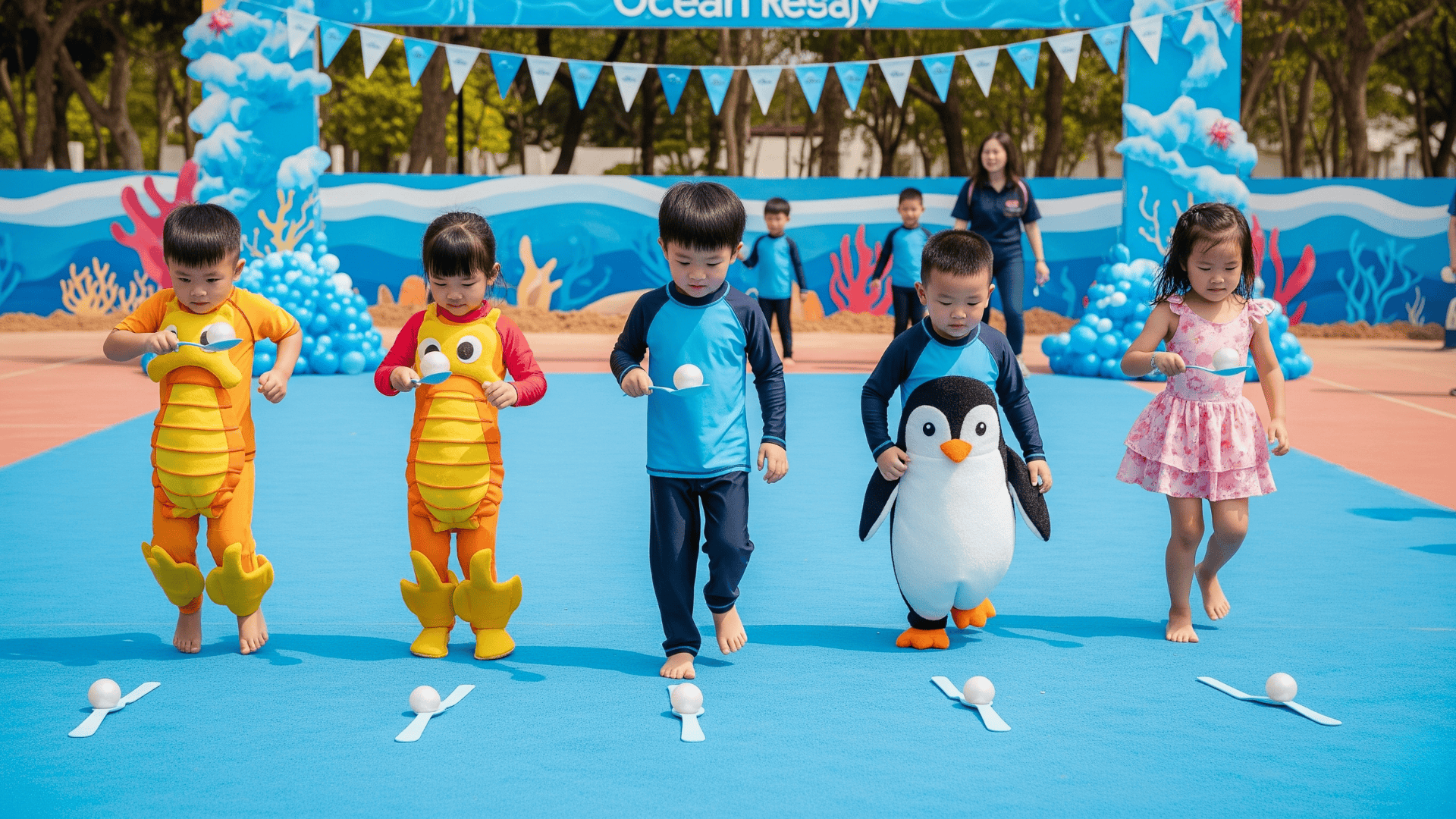
Set up relay stations: carry “pearls” on spoons, hop like seahorses, waddle like penguins.
Teams complete ocean-themed challenges in sequence without dropping items.
Develops various motor skills while promoting teamwork.
Adjust challenges for different abilities.
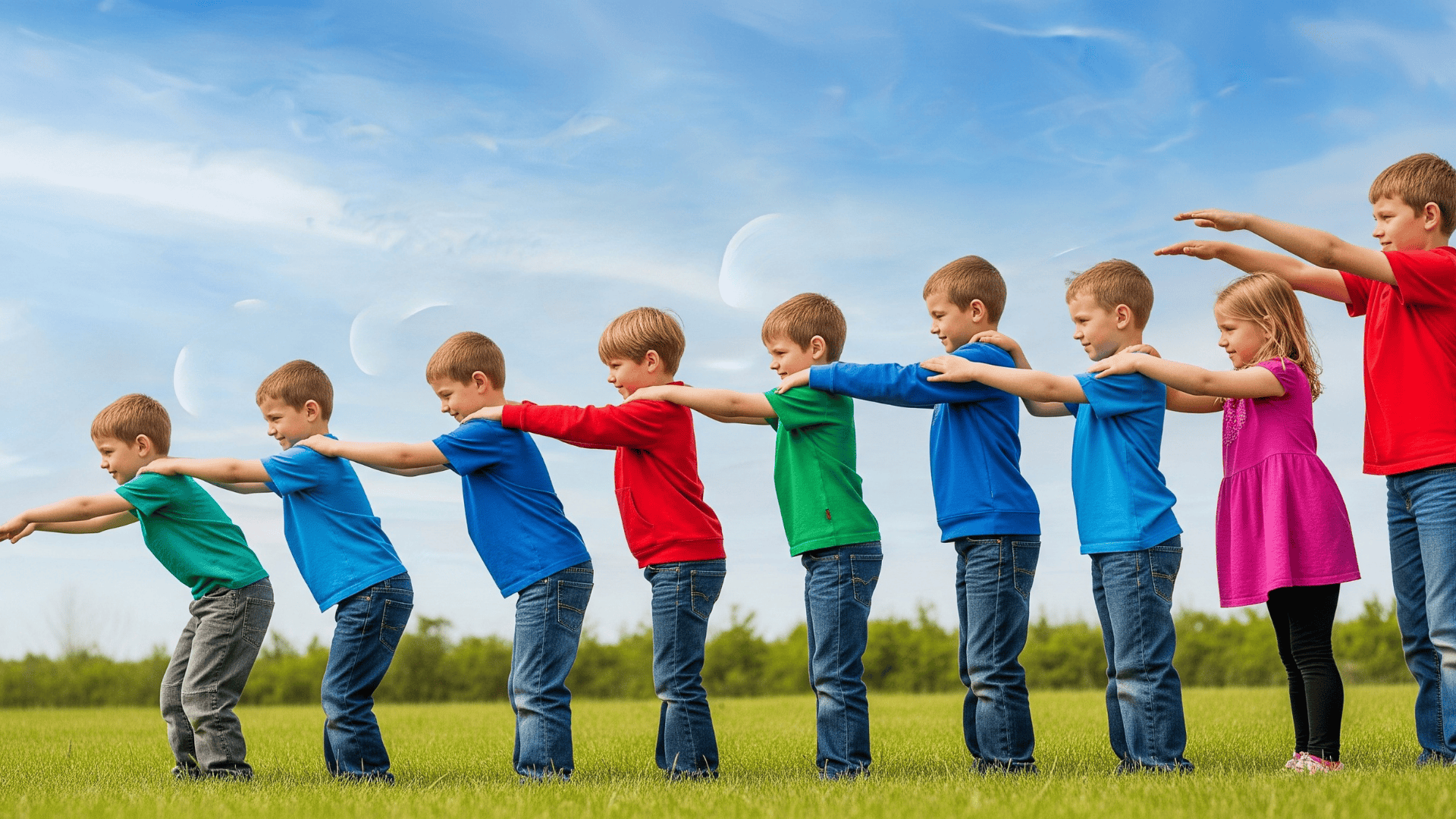
Children stand in line creating wave motions with their arms, passing the movement down the line.
Start with simple waves, then add variations like storm waves or gentle ripples.
Teaches cause and effect while building group coordination.
Beautiful to watch when synchronized.
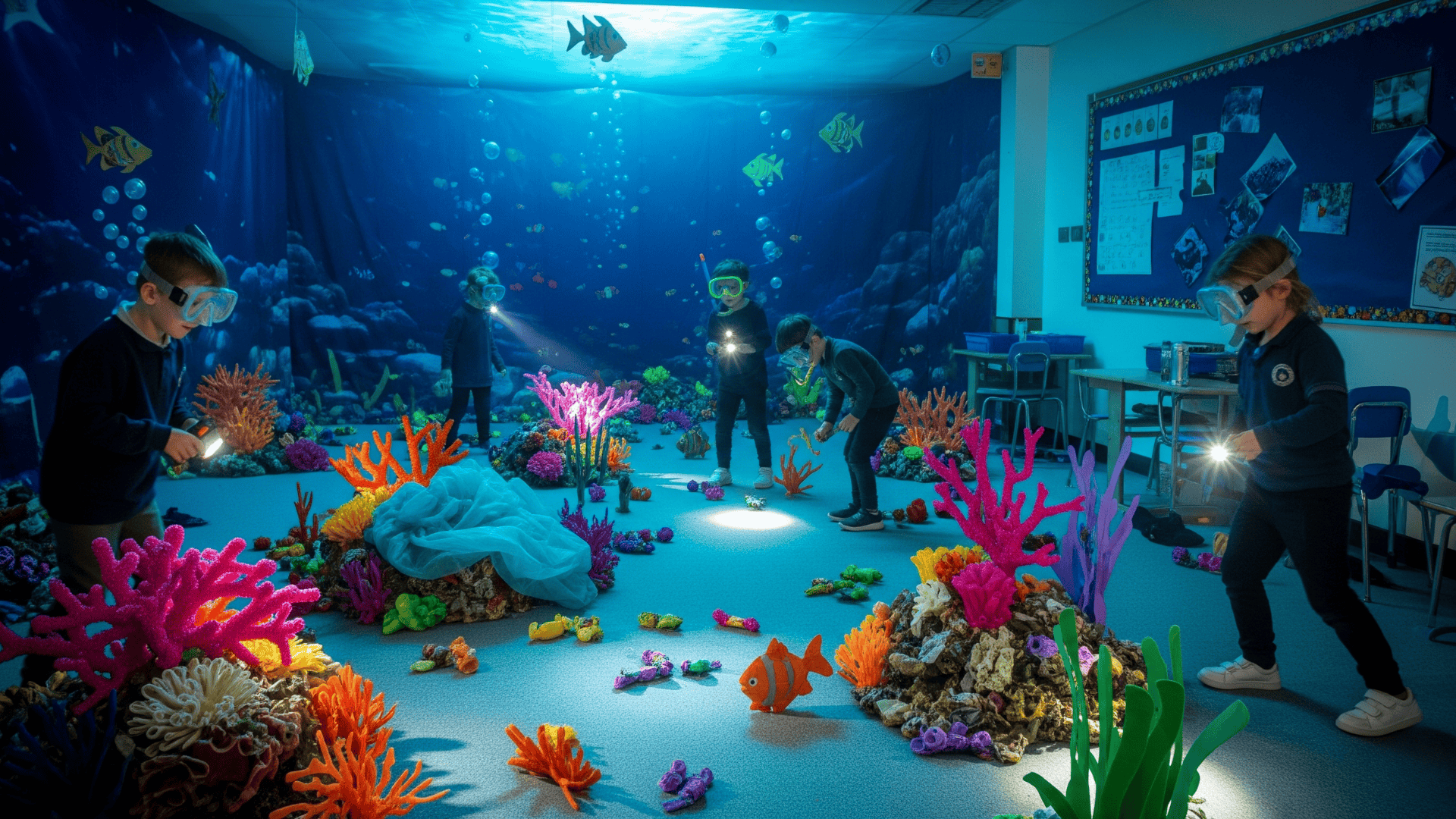
Children pretend to put on diving gear and explore the ocean floor in slow motion.
Move carefully around “coral” and “fish” while making diving observations.
Develops body control and imaginative play while teaching concepts of ocean depth.
Add flashlights for deep ocean exploration.
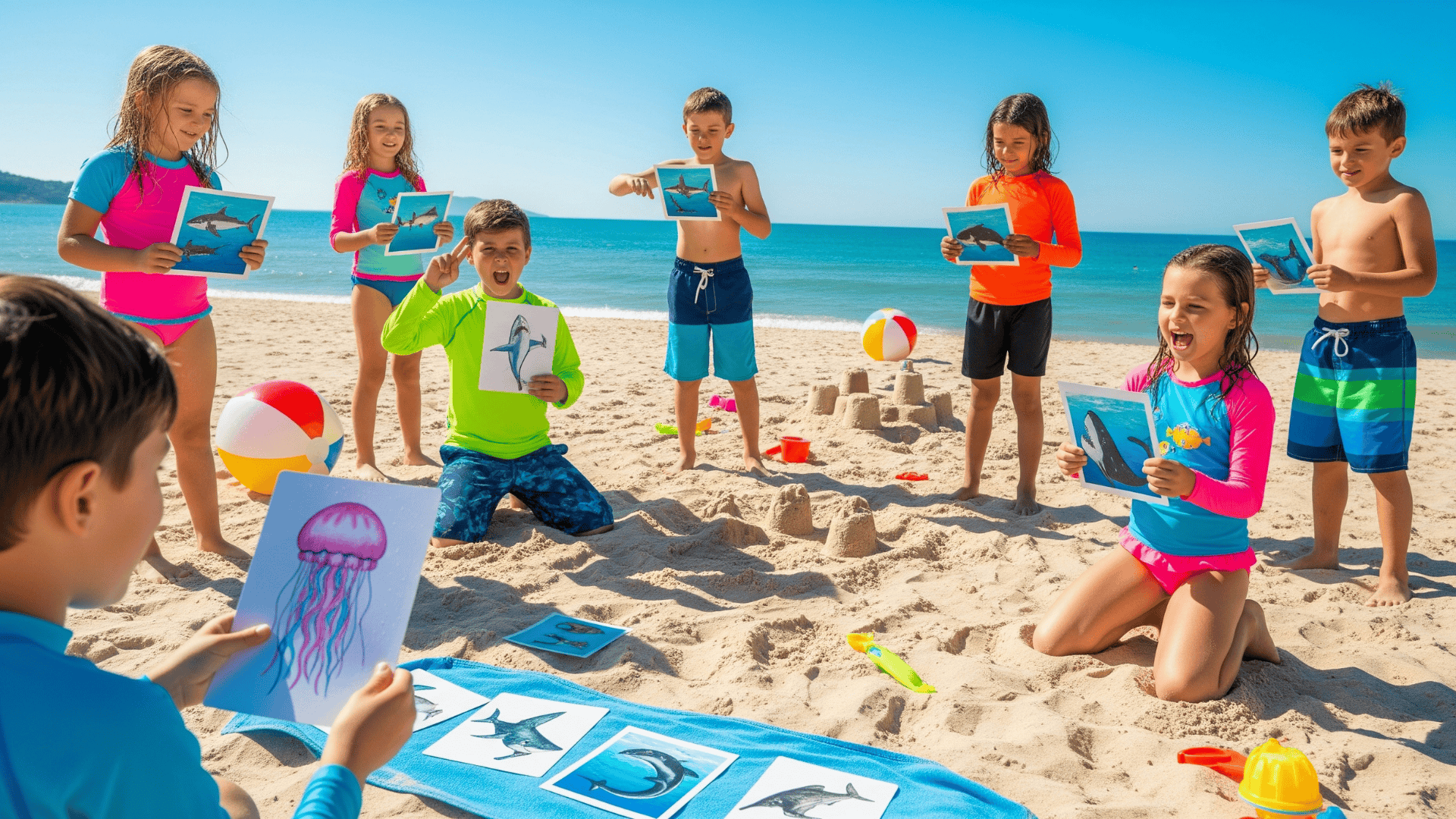
Act out ocean creatures while others guess using picture cards for reference.
Include movements and sounds but no words for added challenge.
Builds creative expression and observation skills through movement.
Perfect for mixed age groups.
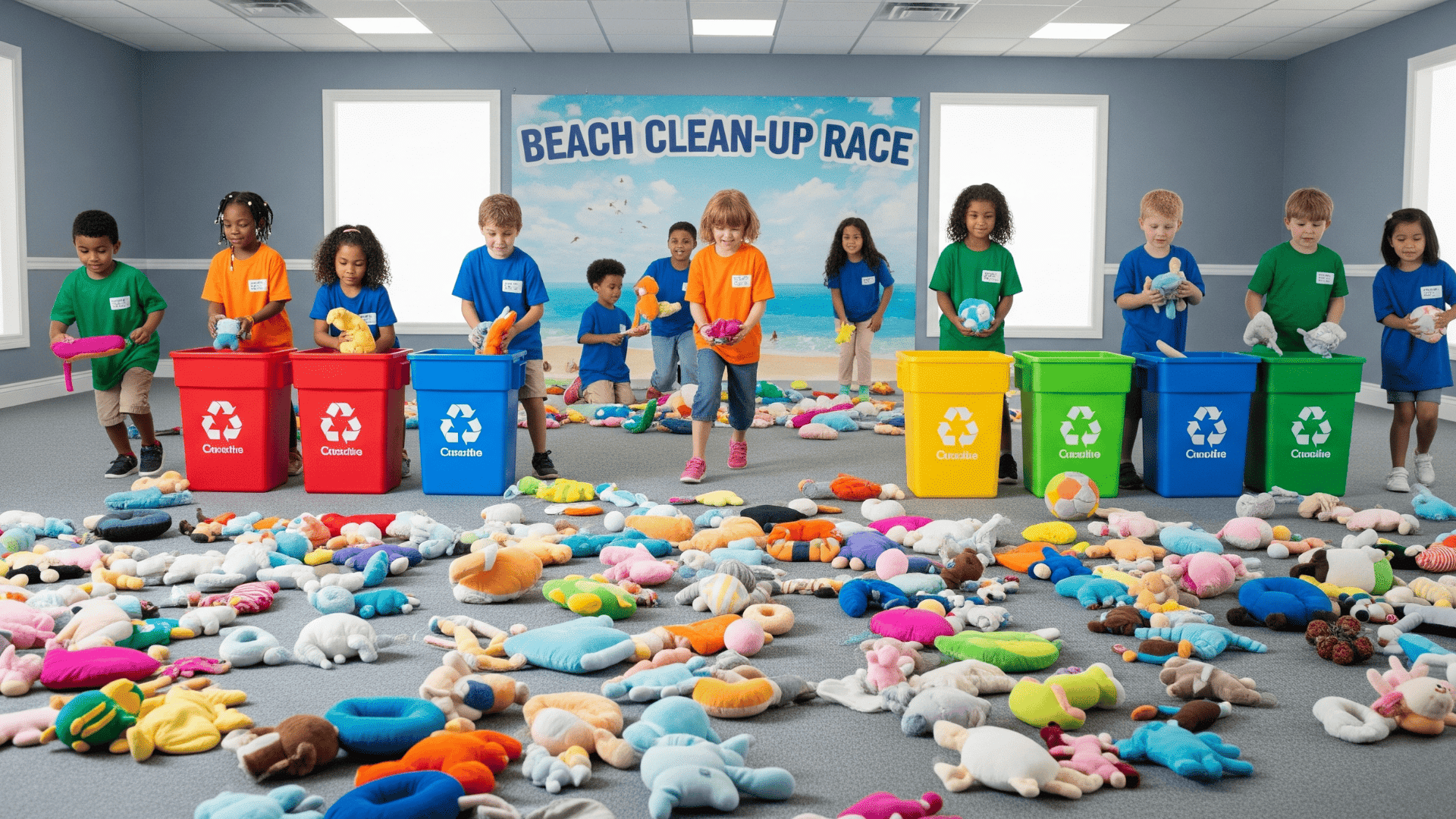
Scatter soft items around the room as “ocean trash” with recycling bins as goals.
Teams race to collect and sort items into proper bins.
Teaches environmental responsibility through active play while building classification skills.
Celebrate saving the ocean together.
Before starting any ocean activity, gather children for a quick discussion about what they already know.
Their ideas might surprise you and can guide your teaching.
Keep activities short, preschool attention spans are like little fish, always swimming to the next thing
Remember that repetition helps learning stick.
Don’t hesitate to repeat favorite activities with small changes to keep them fresh and engaging.
With these ocean activities, your classroom becomes a lively, creative space filled with learning and joy.
Preschoolers will be building early skills like counting, sorting, fine motor strength, and teamwork while having a blast.
From the simplest crafts to hands-on water play, each activity supports growth in a fun and engaging way.
The best part is how easy it is to change things up, repeat favorites, add new elements, or mix in your own ideas.
Children respond well to familiar themes, and the ocean never goes out of style.
With just a few materials and a playful mindset, you’ll create lasting memories and valuable teaching moments.
Let your classroom become a sea-inspired space that kids look forward to each day.
magical ocean activities your preschooler will absolutely love!
